07_11_vl_coral35
Molds of brachiopods and horned coral.
Molds of brachiopods and horned coral.
Shell impression and part of a trilobite head.
Brachiopod impressions.
Brachiopod impressions
This month 14 people showed up for the BPS trip and collected in Mississippian age fossils in St. Clair county,
Alabama. Along with the perfect brachopods and horned coral, quite a few trilobite parts were found in the Ft. Payne chert.
Photos courtesy Martha Ivey and Vicki Lais.
Brachiopod impressions and what appear to be straight cephalopod impressions.
A mass of brachiopods and what appear to be small straight cephalopods.
After the butterfly viewing, we then convoyed to a quarry of Mississippian age Fort Payne chert where we had permission to hunt the whole day! Doesn't get much better than this, and the weather was absolutely perfect! Along with more large crinoid stems, several kinds of coral, brachiopods and a few trilobite pieces were found. Quite a few of us found beautiful geodes and concluded that this is just about as exciting as the fossils. They certainly are gorgeous souvenirs.
Later in the afternoon, a few of us sneaked off to one of Greg's barbecue spots and chowed down on some excellent vittles while our more dedicated crew-members devoted themselves to the task at hand. Well, you can't have everything. Sometimes a blackberry cobbler just has your name on it.
--Edited by Vicki Lais
(pictures courtesy Bill Fowler and Vicki Lais)
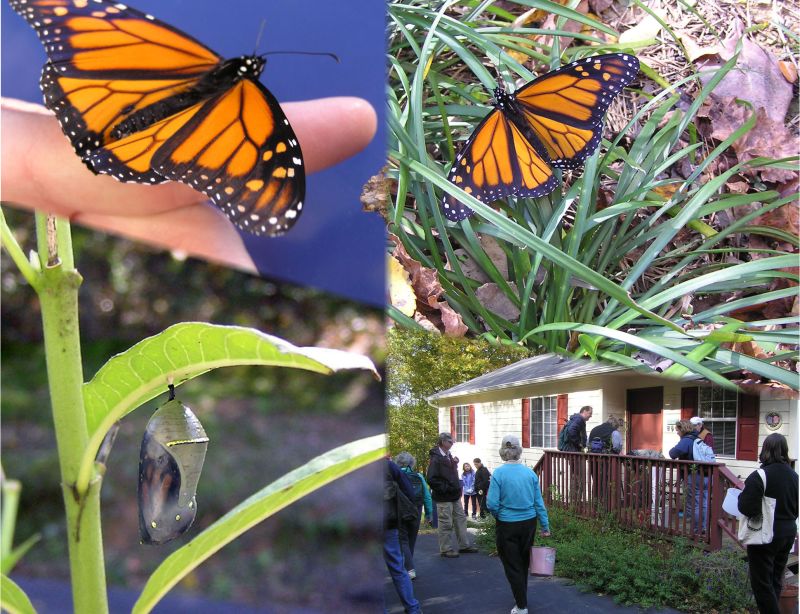
Our first stop of the day, where we found Monarch chrysalis on numerous surfaces, including plants and house siding. This chrysalis has turned clear, and you can see the butterfly inside. There were several newly emerged Monarch butterflies slowly pumping their wings, waiting for them to harden (that's what everyone's staring at on the porch.)
We had a great turnout and beautiful weather; here we pose for a group picture before setting off on our day's adventure.
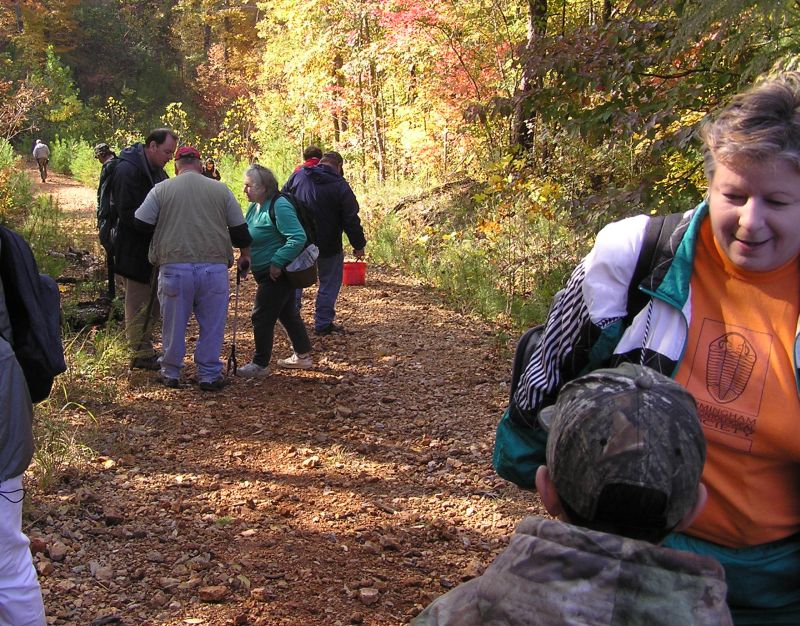
The first fossil stop, a gravel road paved with chert from the Mississippian age. Almost all the rocks have crinoid stems or impressions in them.
Examining recent finds.
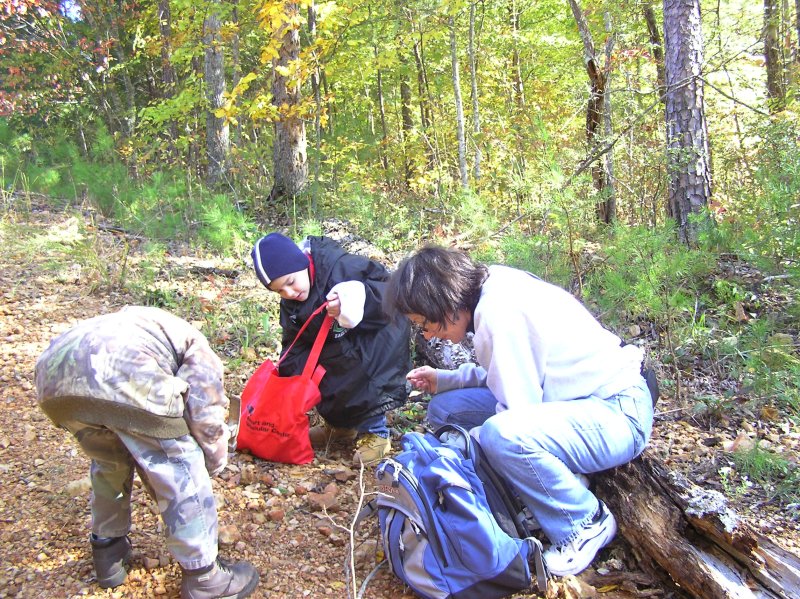
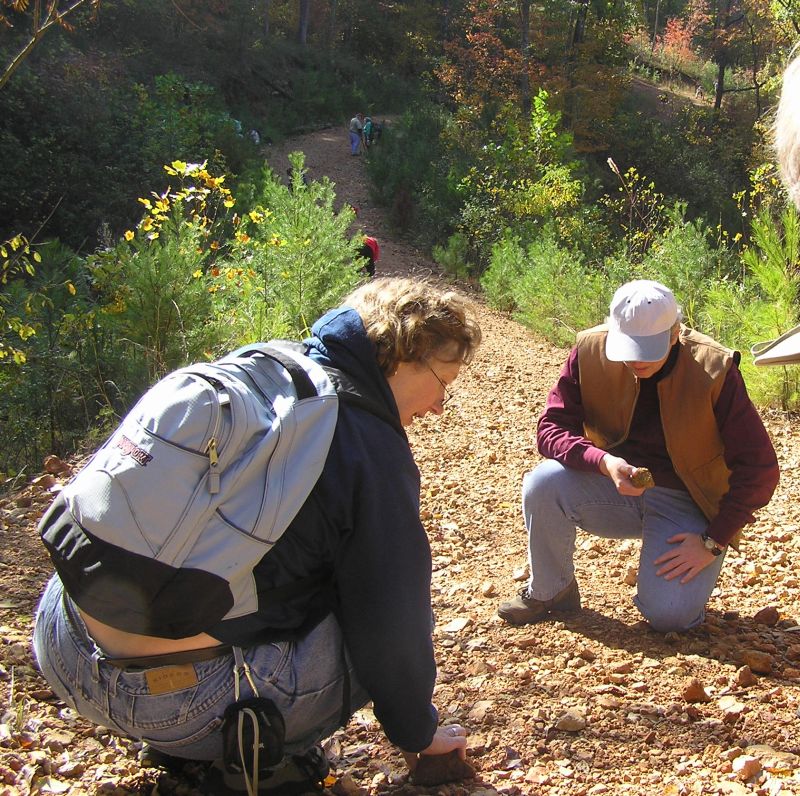
Samples of fossils found today.
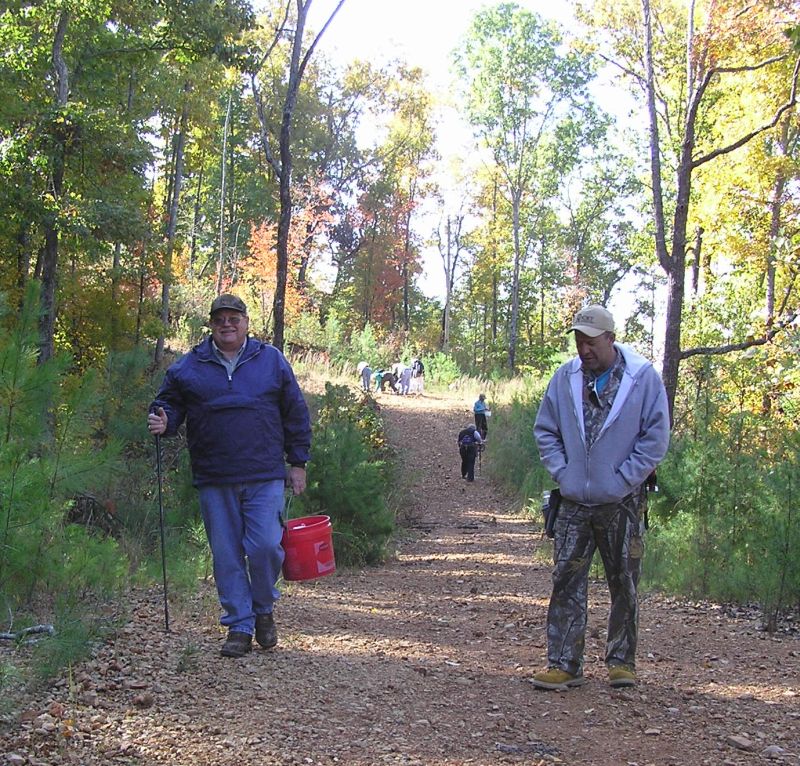
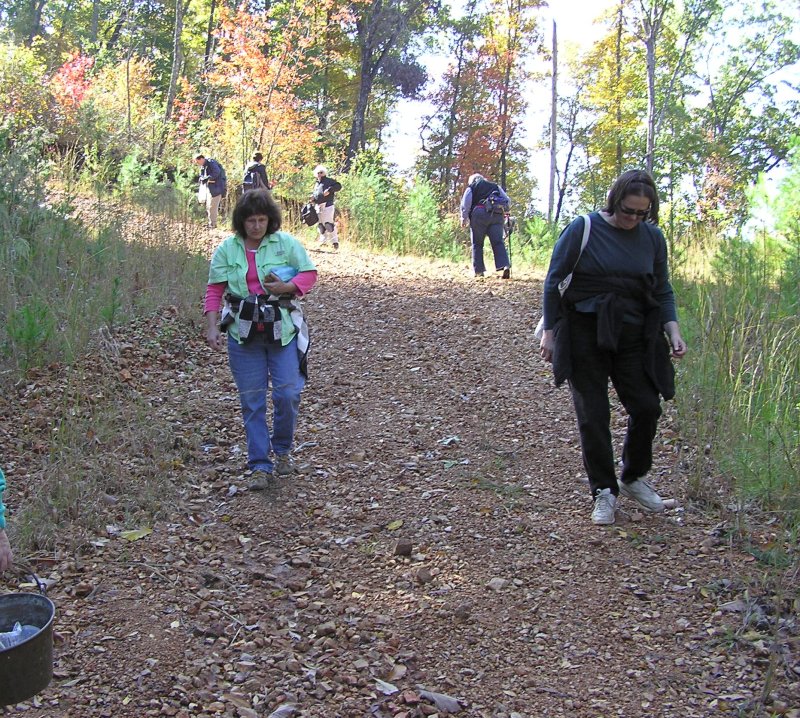
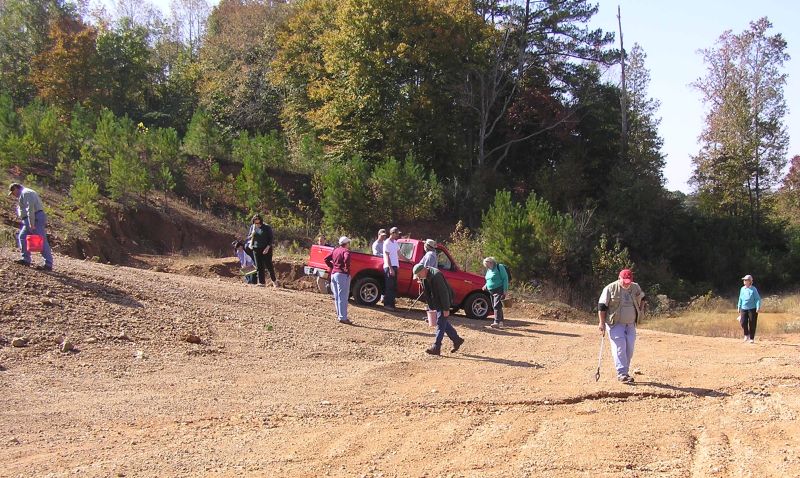
On to the next stop at a nearby quarry which was large, hilly and had multiple collecting areas. Everyone scattered in different directions to collect, so it was difficult to get closeups of people and their finds during the day.
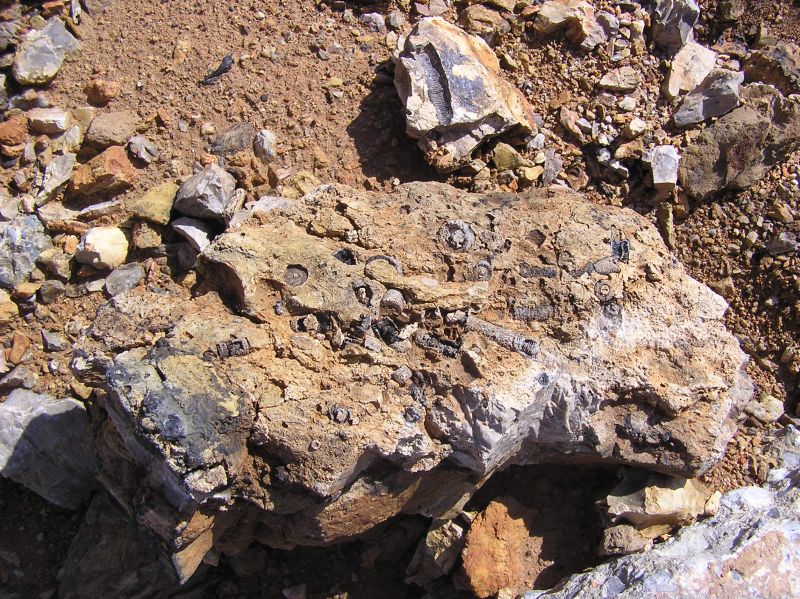
Crinoid stems in matrix.
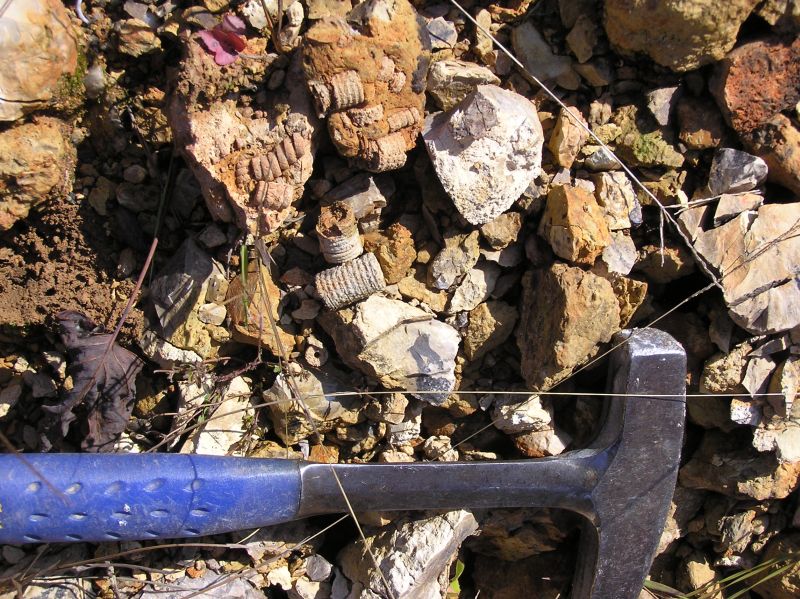
Crinoid stems.
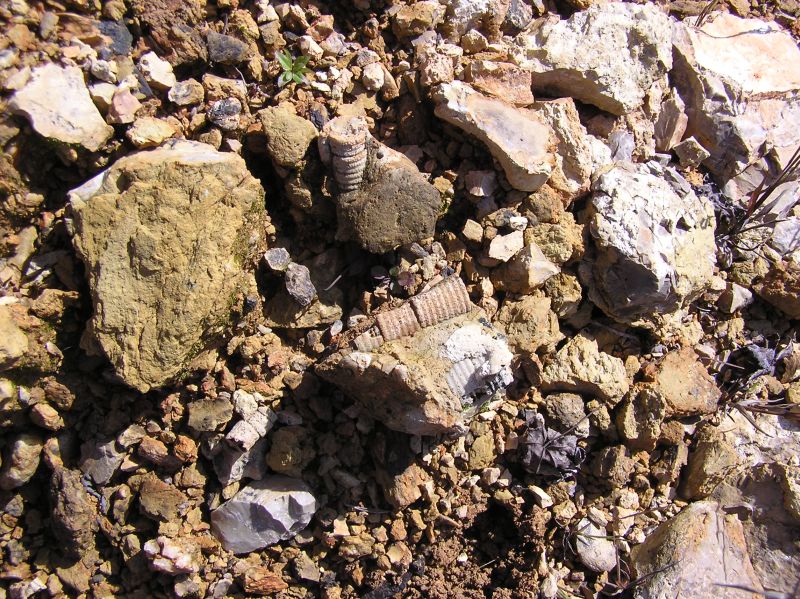
Crinoid stems. Click picture for closer view.
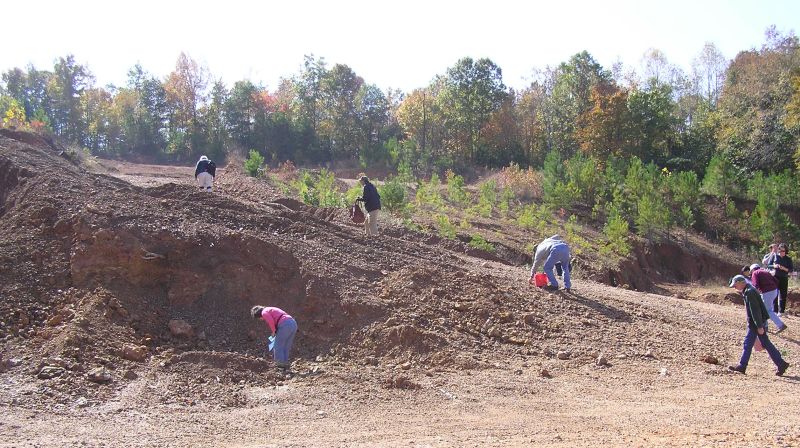
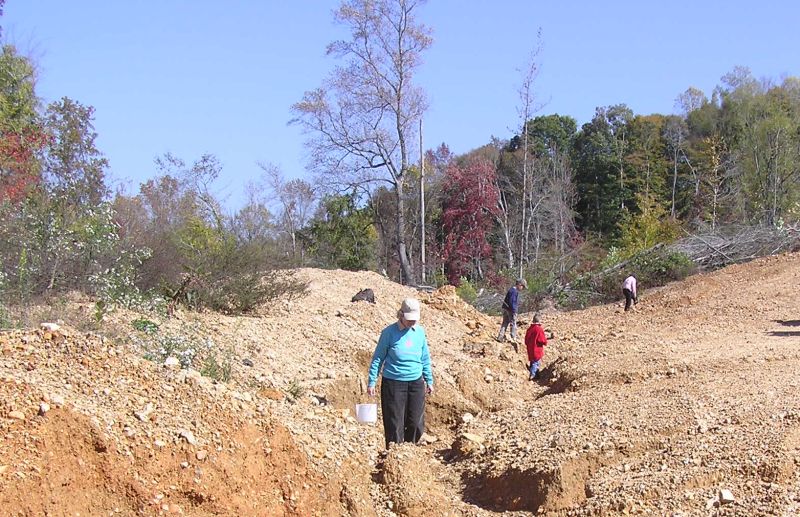
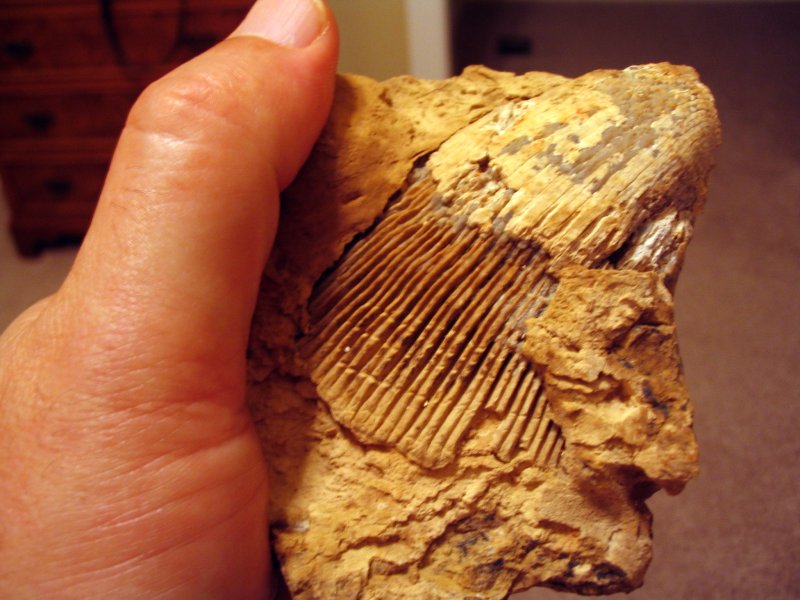
Horned coral found by Bill.
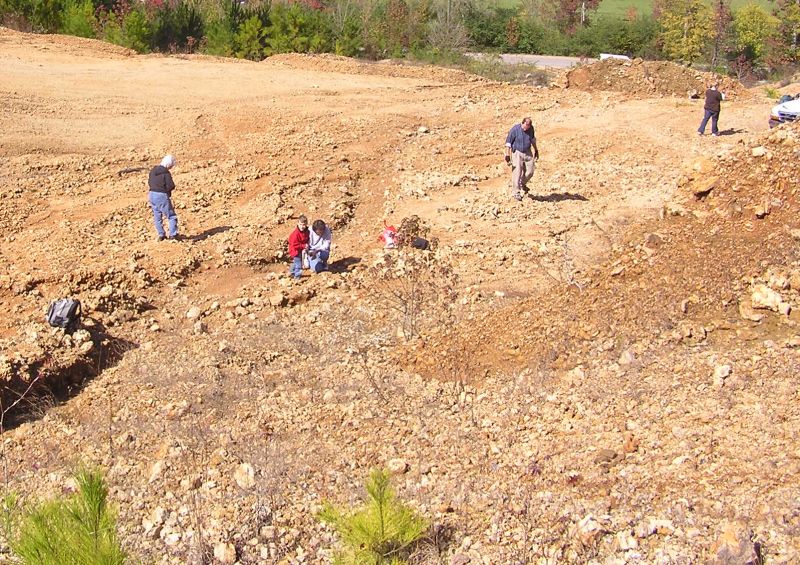
Clockwise, from upper left - unknown (possible stromatolite), possible burrow, part of a trilobite and shell, bryozoan.
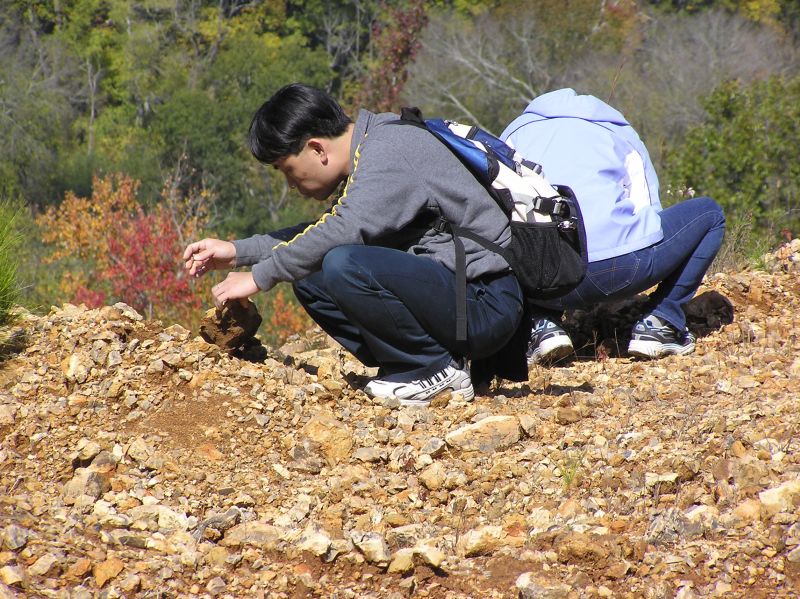
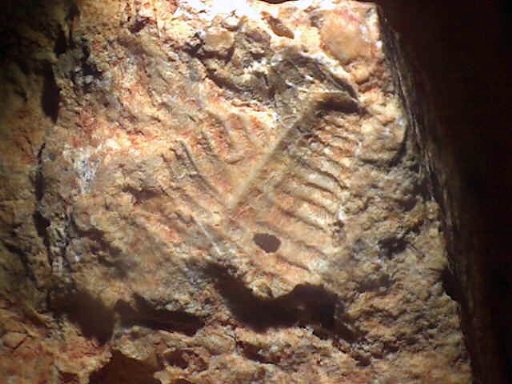
Small trilobite found by Bill, magnified.
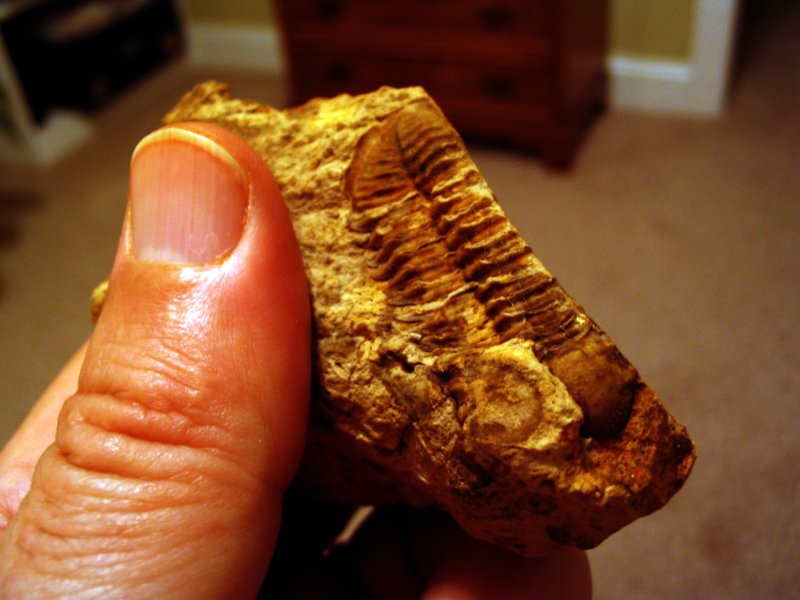
Large trilobite found by Bill. This is what we came for, he must have found their secret hiding place!
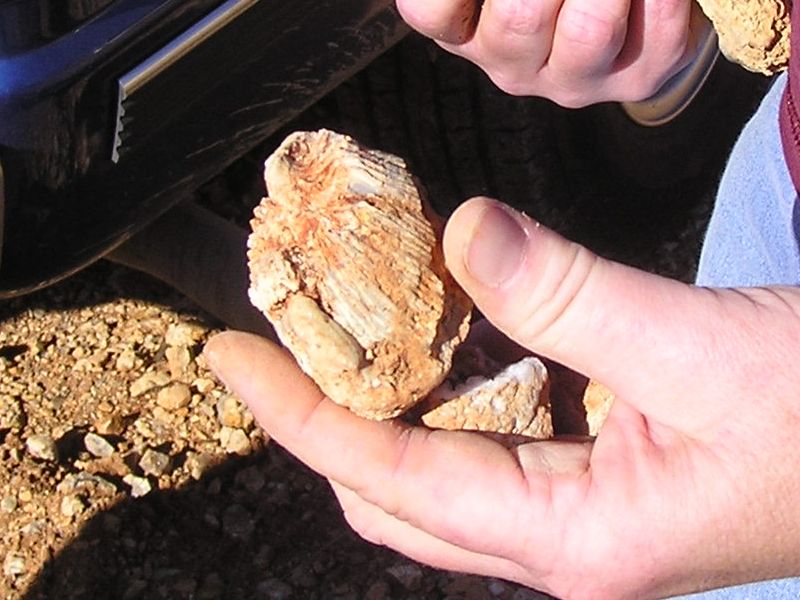
Coral.
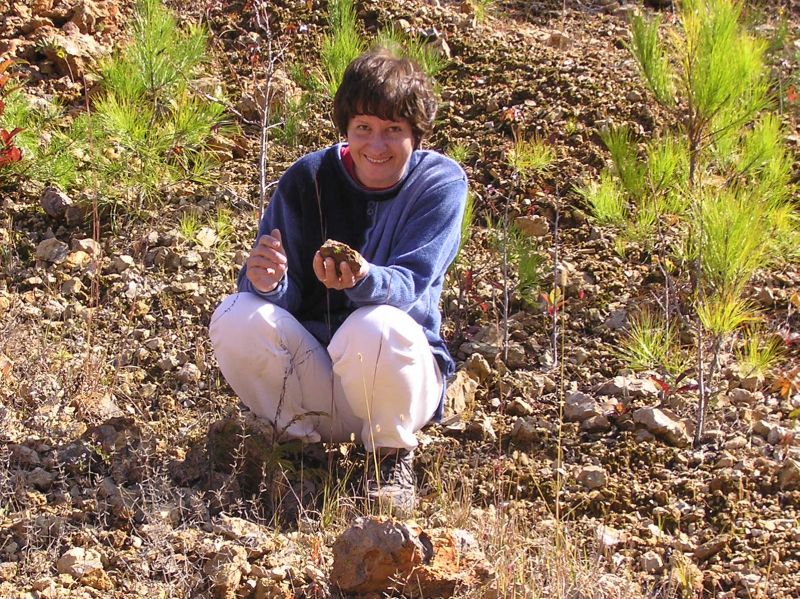
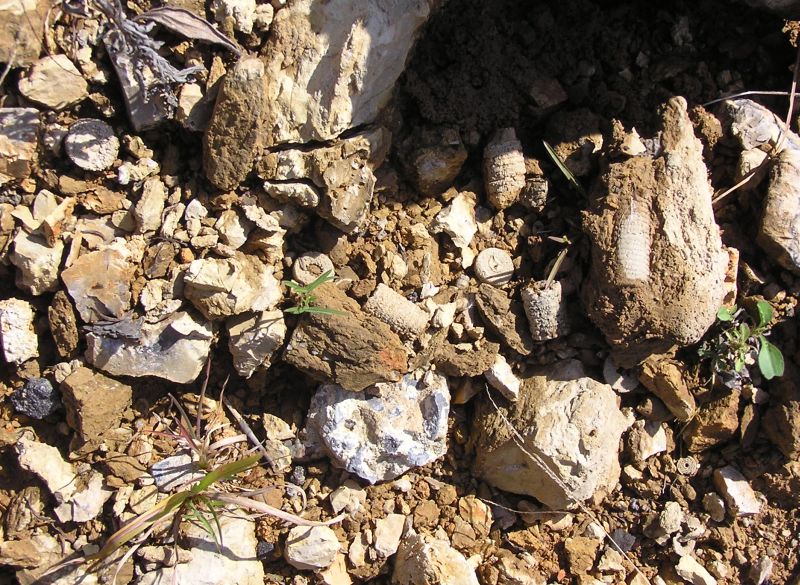
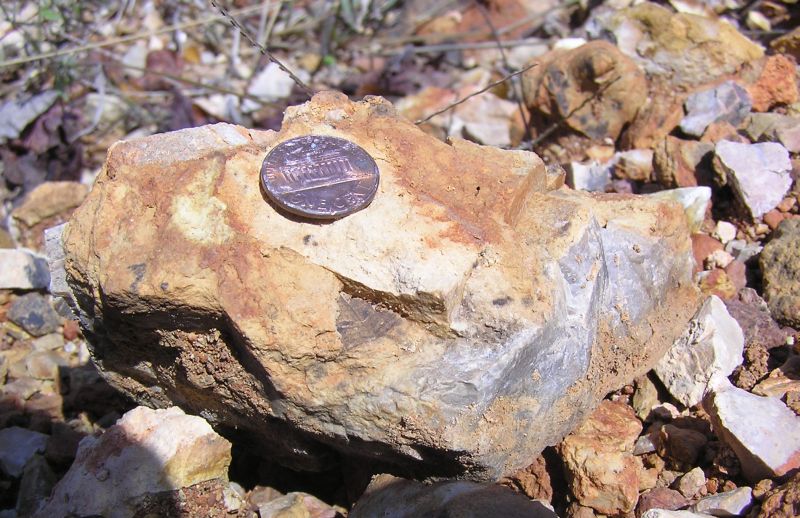
Part of a trilobite.
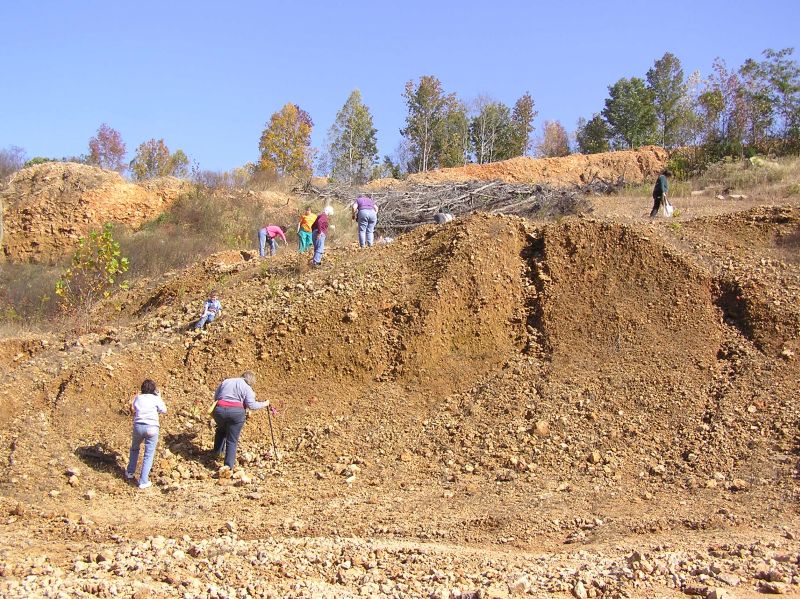
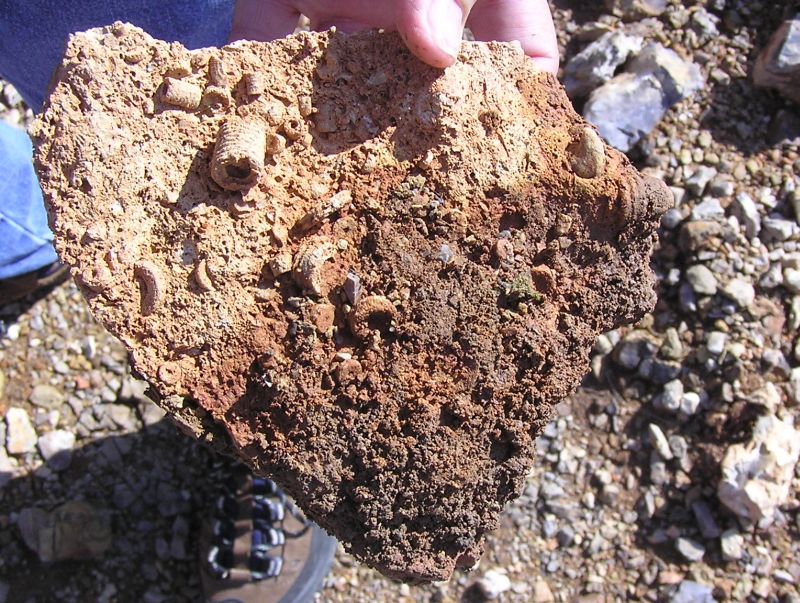
Crinoid encrusted rock.
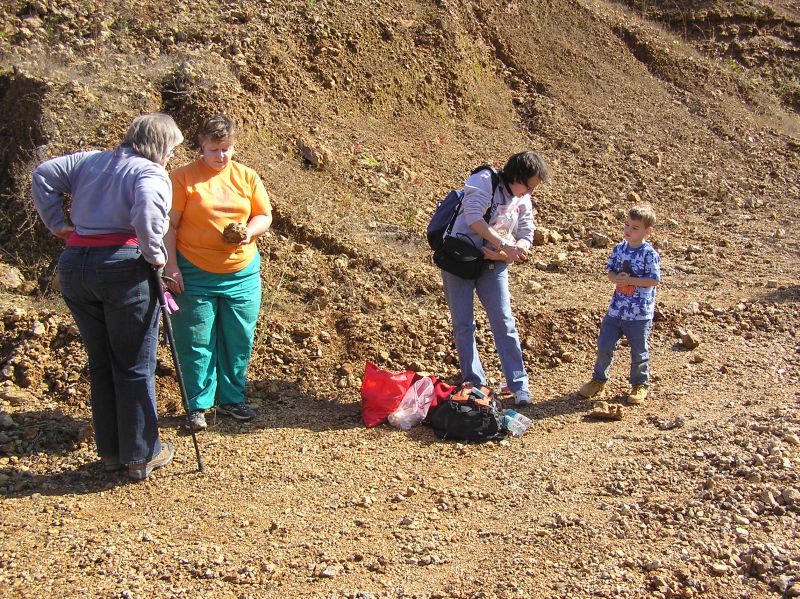
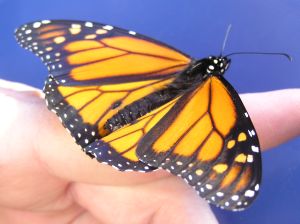
(Photos courtesy Chris and Vicki Lais)
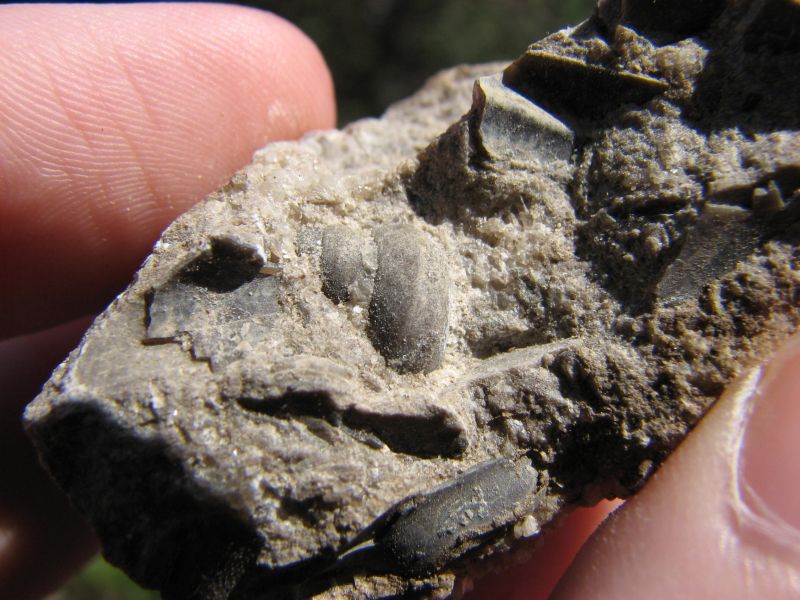
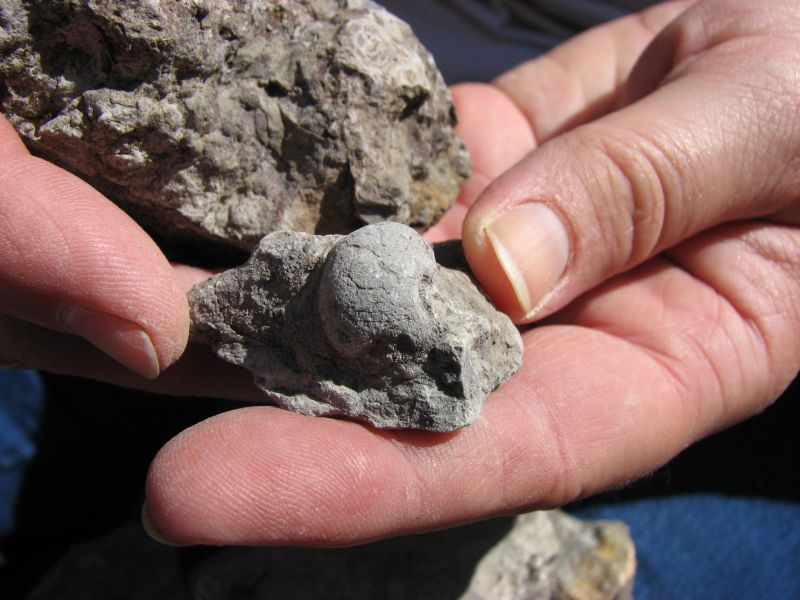
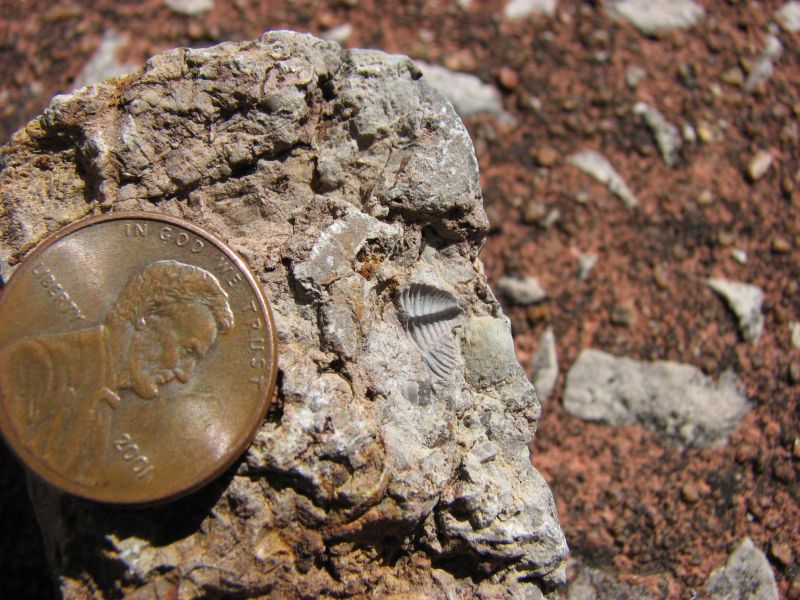
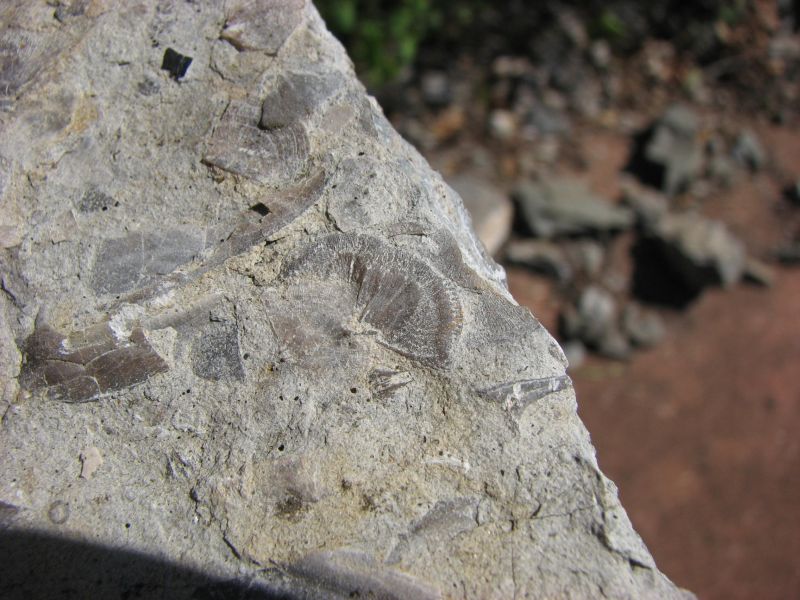
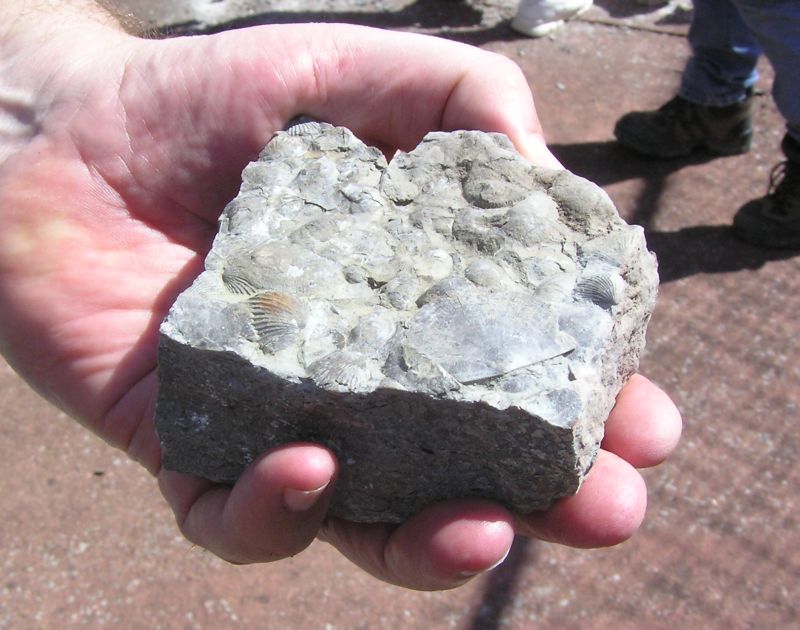
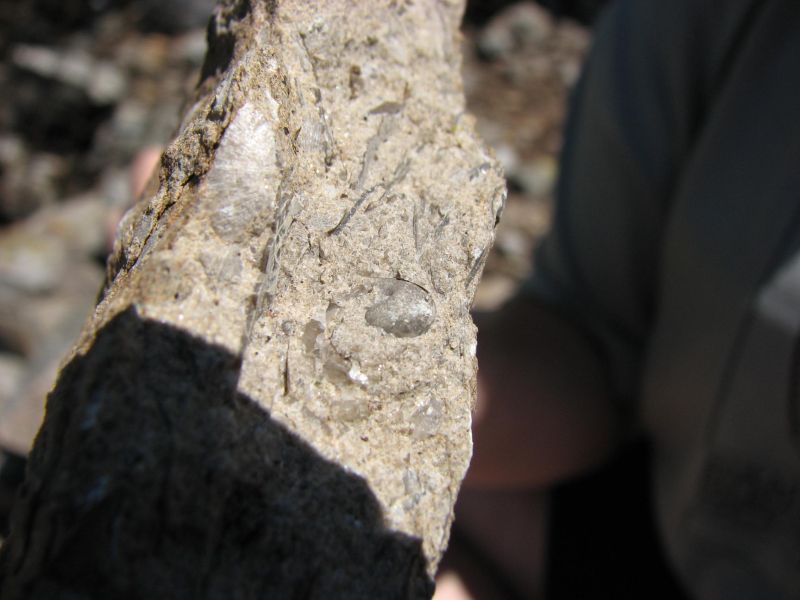
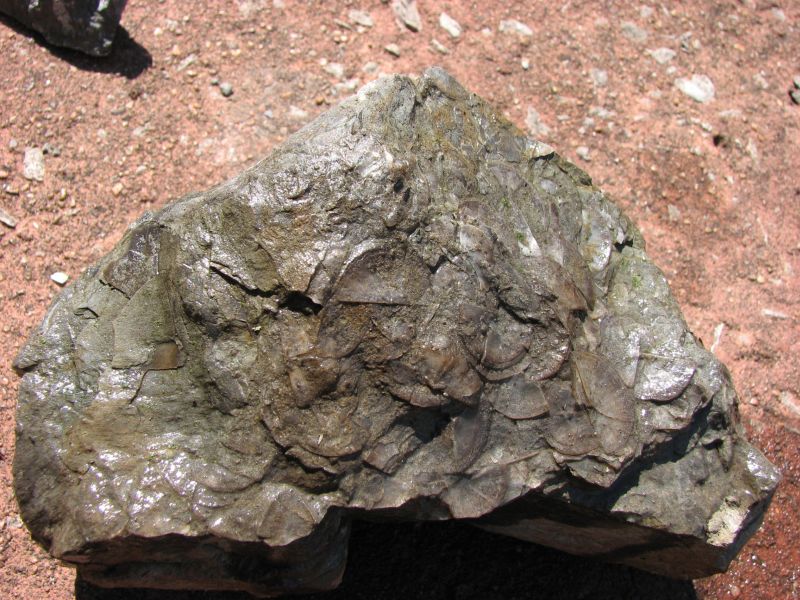
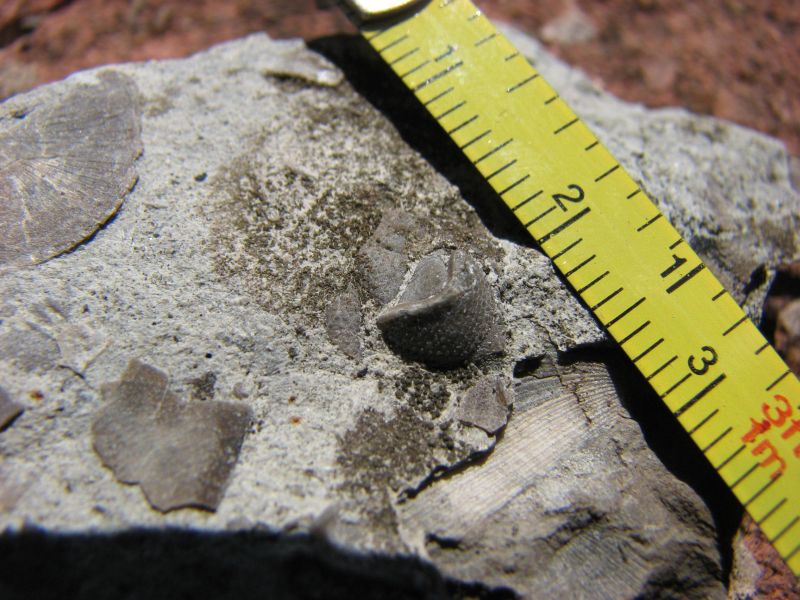
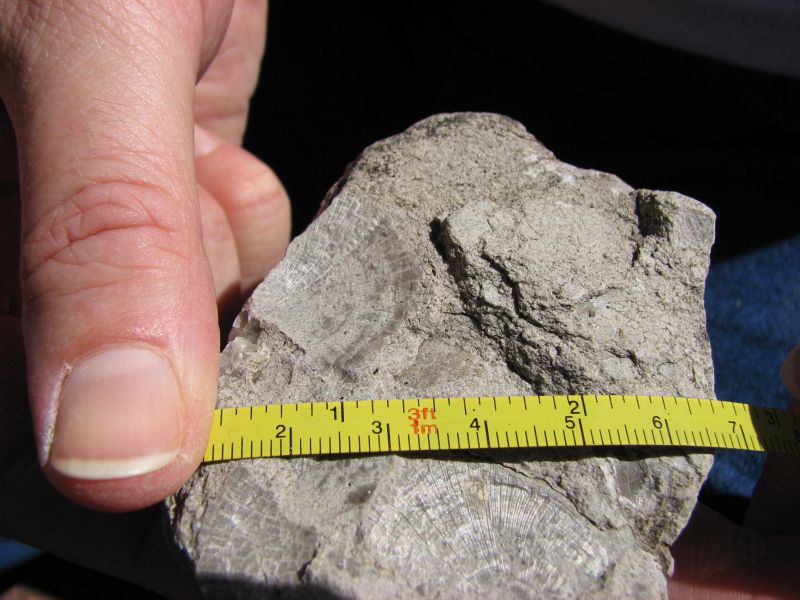
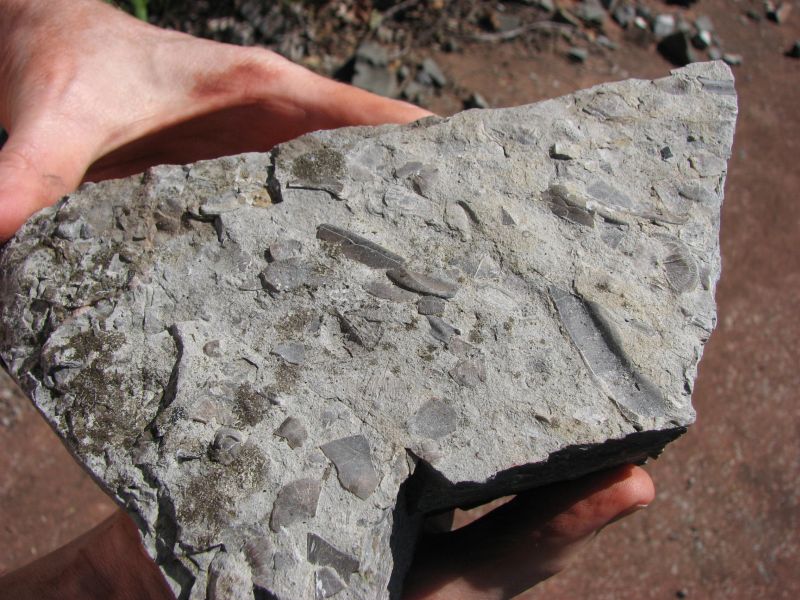
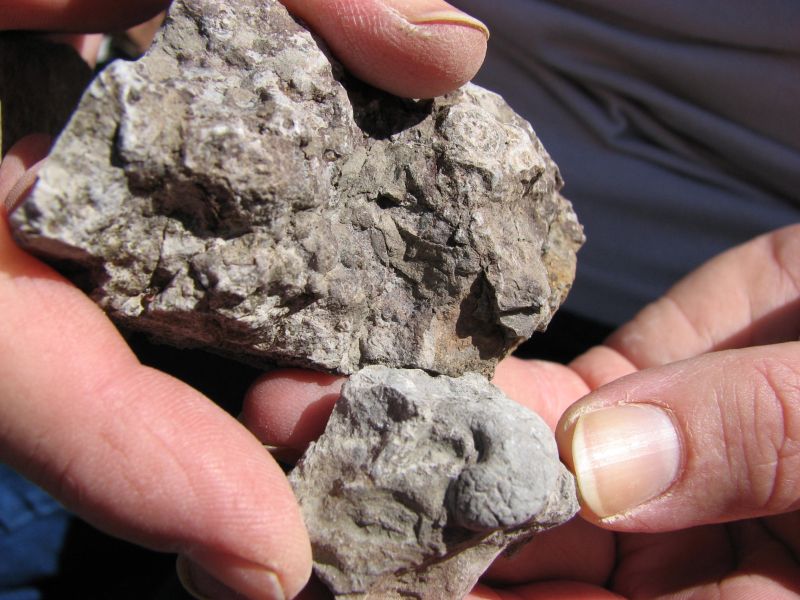
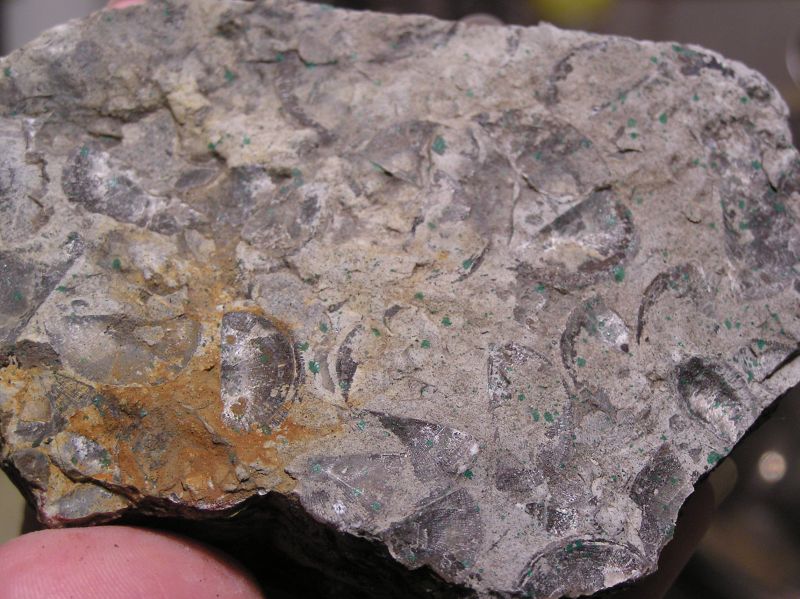
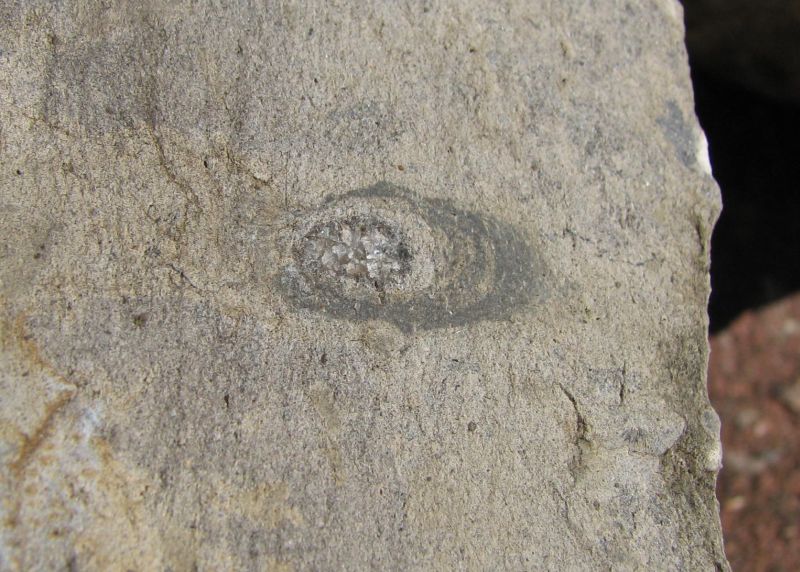
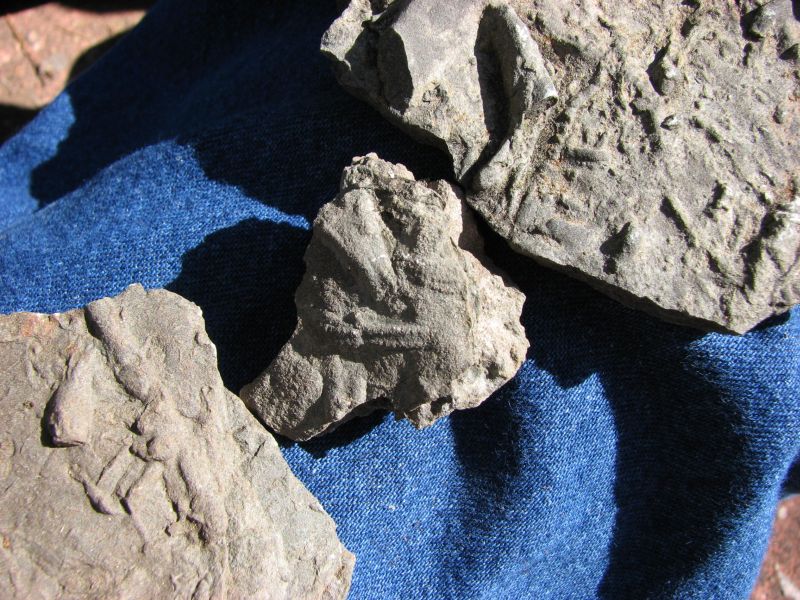
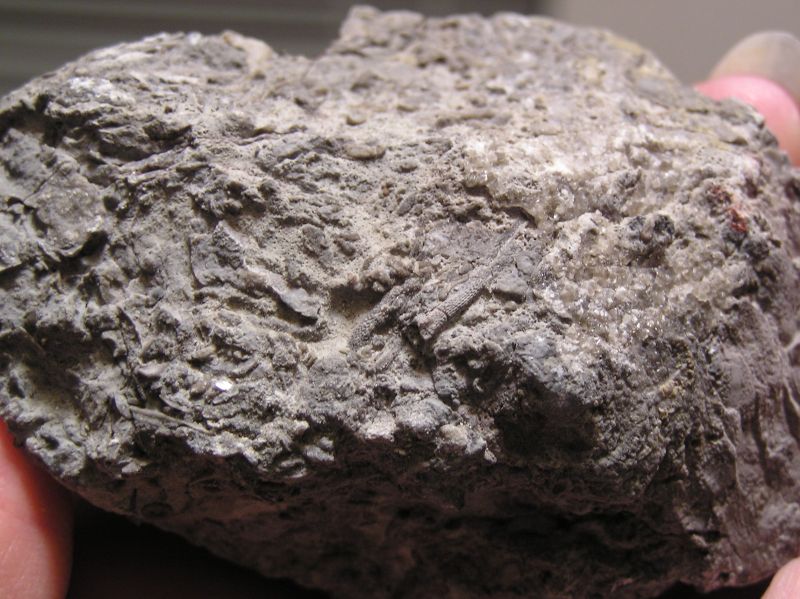
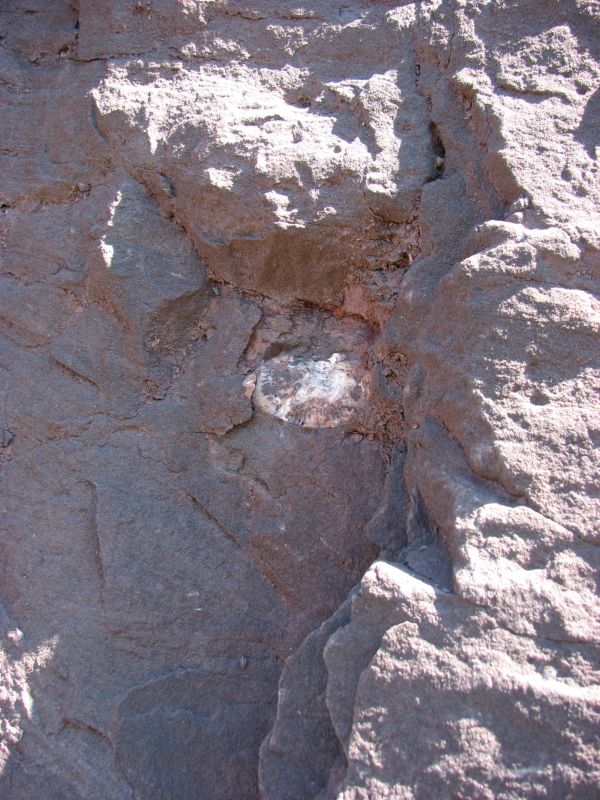
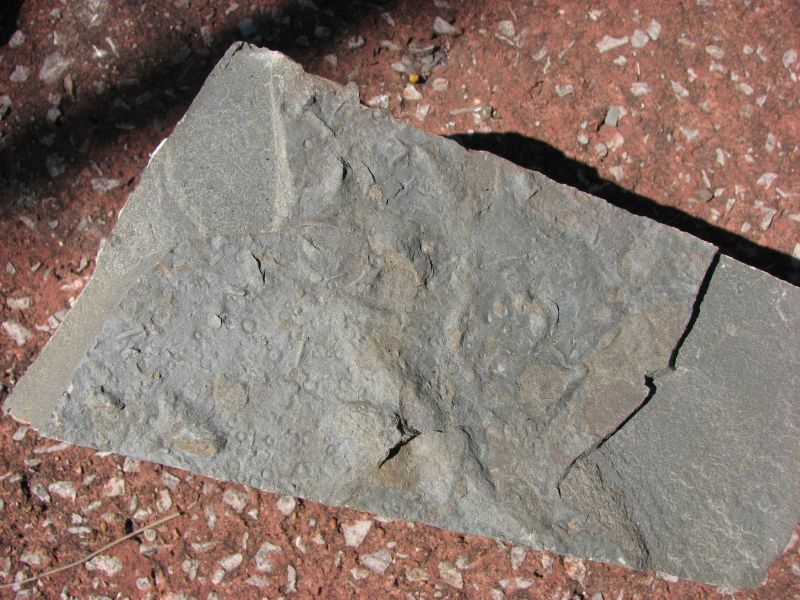
And some mineral specimens:
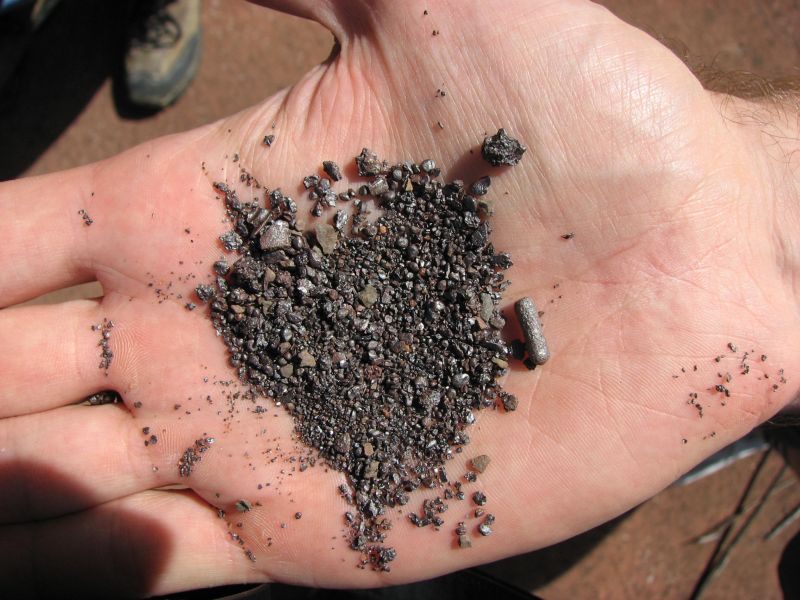
Hematite
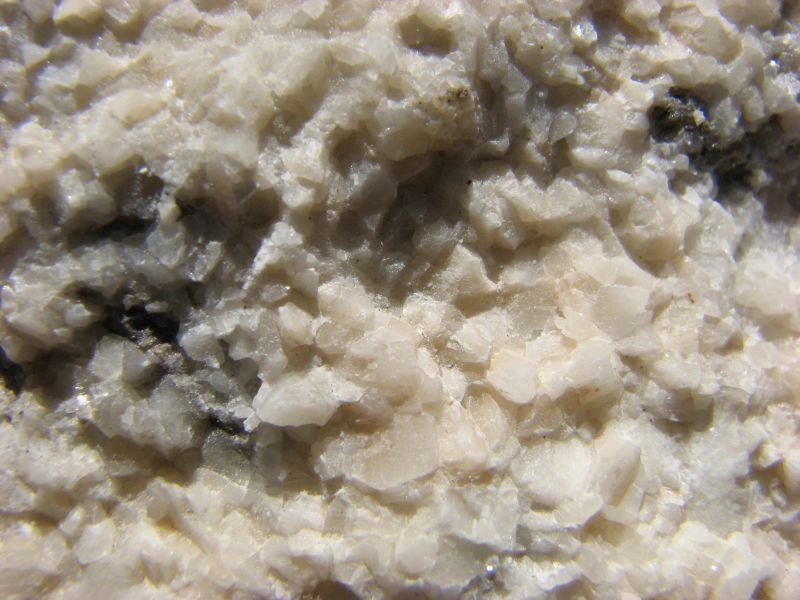
White calcite crystals.
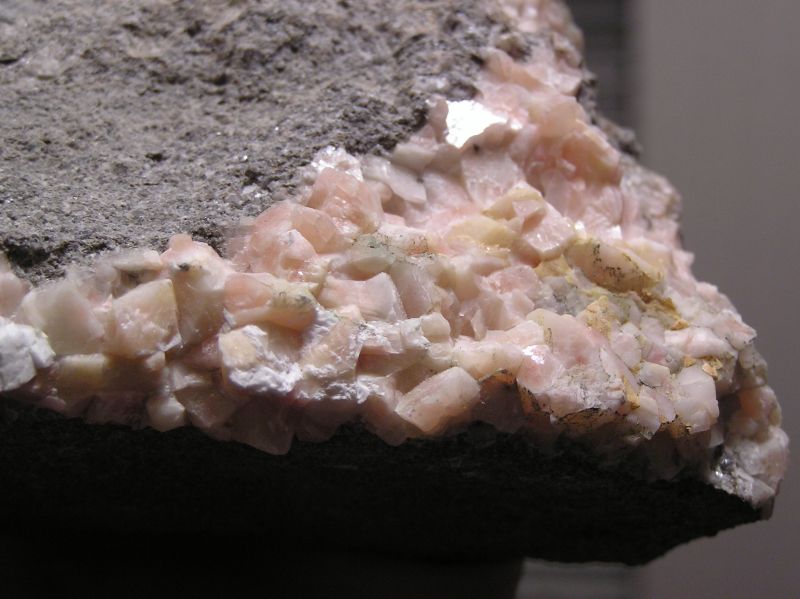
Pink calcite (dolomite) crystals.
Page 1 - General trip photos
Page 2 - Fossils and minerals (this page)
Once again BPS was out in the boonies with the ATV’s! Greg even brought his own ride this trip. Go, Greg! Gorgeous weather, good turn-out. Sandy Ebersole, a new BPS member from the Geological Survey of Alabama, was interested in examining the formation to determine if it is part of the same Ripley Formation she is studying at Coon Creek in Tennessee. Sandy and Jun Ebersole both gave us a short overview of the formations and geology of the area before we started collecting, which left us with an excellent perspective on where we were going.
We explored several small creeks in the area for the first time, where we found a number of crabs and other items, including clams, in nodules. Sandy found an outcrop in the first creek where she gathered numerous samples for her research.
The main creek yielded great samples for all: more crabs and clams, and unknown items in concretions. Sandy located another interesting outcropping and took more samples of microfossils. Michelle found some nice ammonite pieces, including one piece showing beautiful suture marks.
Since the Ebersole's needed to leave that night, our hosts set up an impromptu trip to a gully for the evening. Sandy and Jun wanted to see if this was part of the Ripley Formation (current thought is - probably not). Jun got a quick lesson on ATV driving and we hit the gully where we found teeth and bits of shells.
The next morning before the mist had burned off, we went to a different gully that had not been explored for several years, but did not yield many finds. After returning to camp, and meeting new arrivals, two groups were formed. One group went back to the creek where the crabs had been found, and another group consisting of Vicki, Michelle and Becky took off on a scouting adventure to explore yet another “new” creek. This turned out to be a great spot with some decent finds of brachiopods, clams, gastropods, exogyra, shark vertebrae, and possible pieces of bone.
Later in the day, diehards Becky and Vicki explored the main creek again, using a different access point and went a little ways up the stream until the creek got too difficult to navigate.
After two days of excellent collecting, all went their way home and look forward to the next field trip.
Edited by Vicki Lais
(Photos courtesy Vicki Lais)
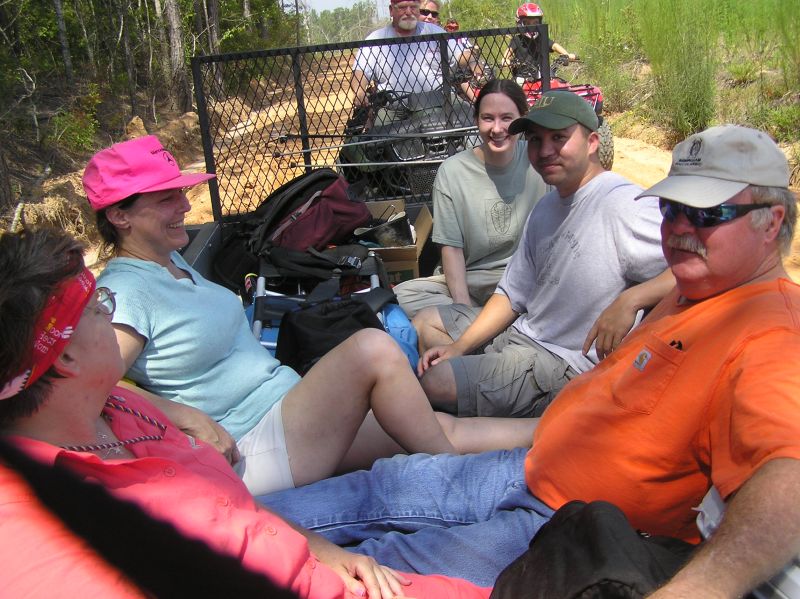
On the way again! Riding to the site is almost as much fun as the collecting itself!
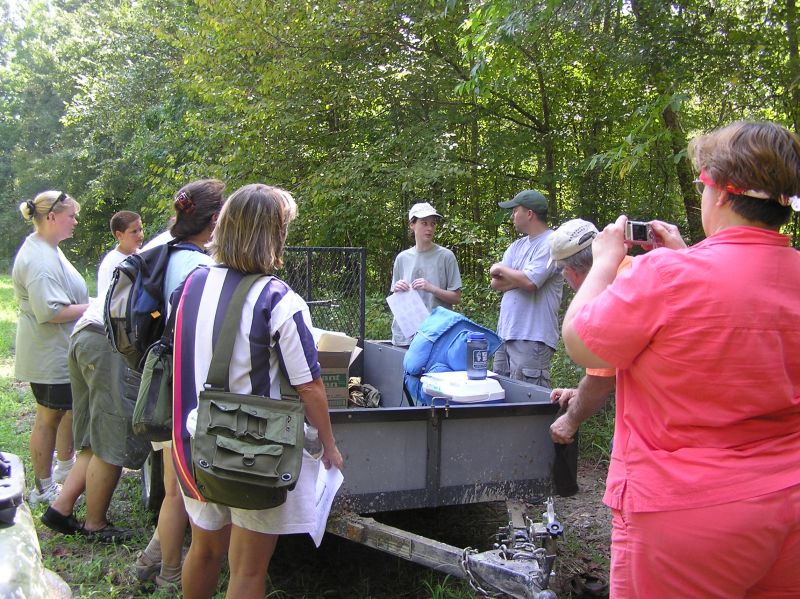
Sandy and Jun provide handouts and short lectures on the geology of the area.
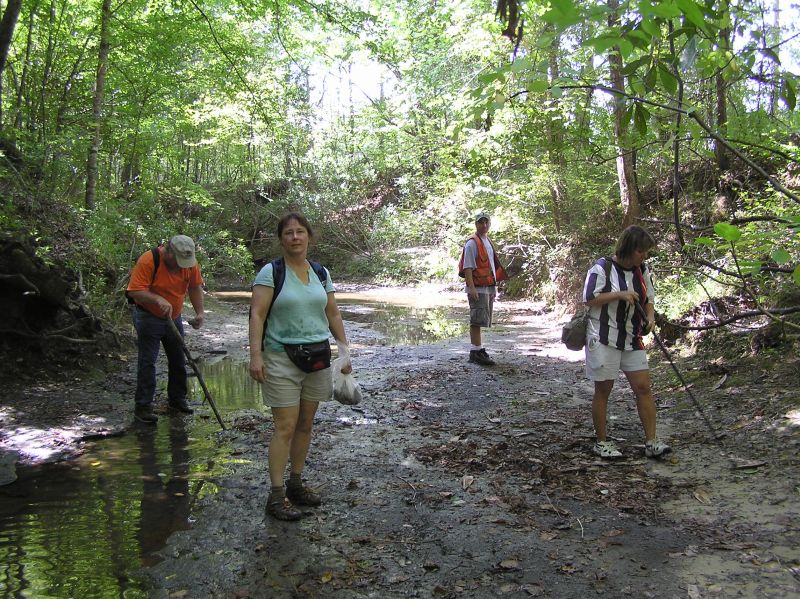
General area where several crab nodules were found.
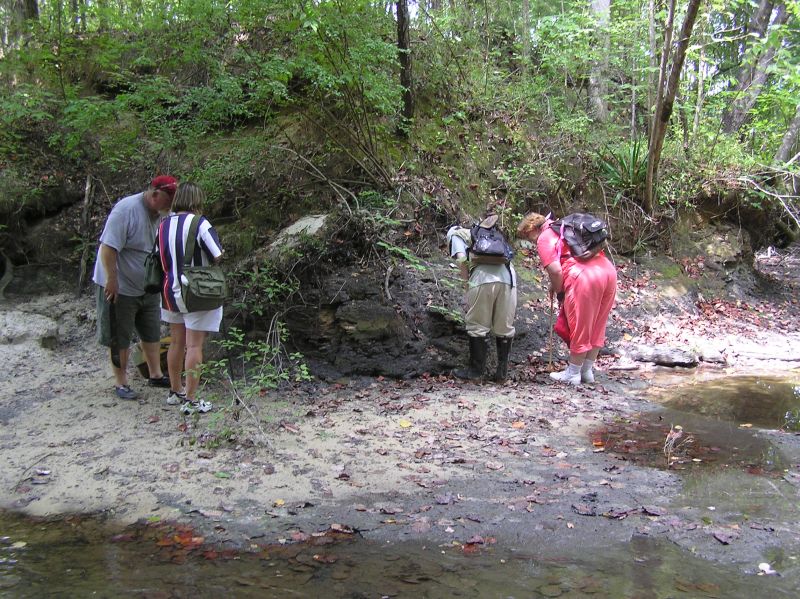
This outcrop has numerous small bits of shell and other material embedded in it. Sandy took lots of samples for her research.
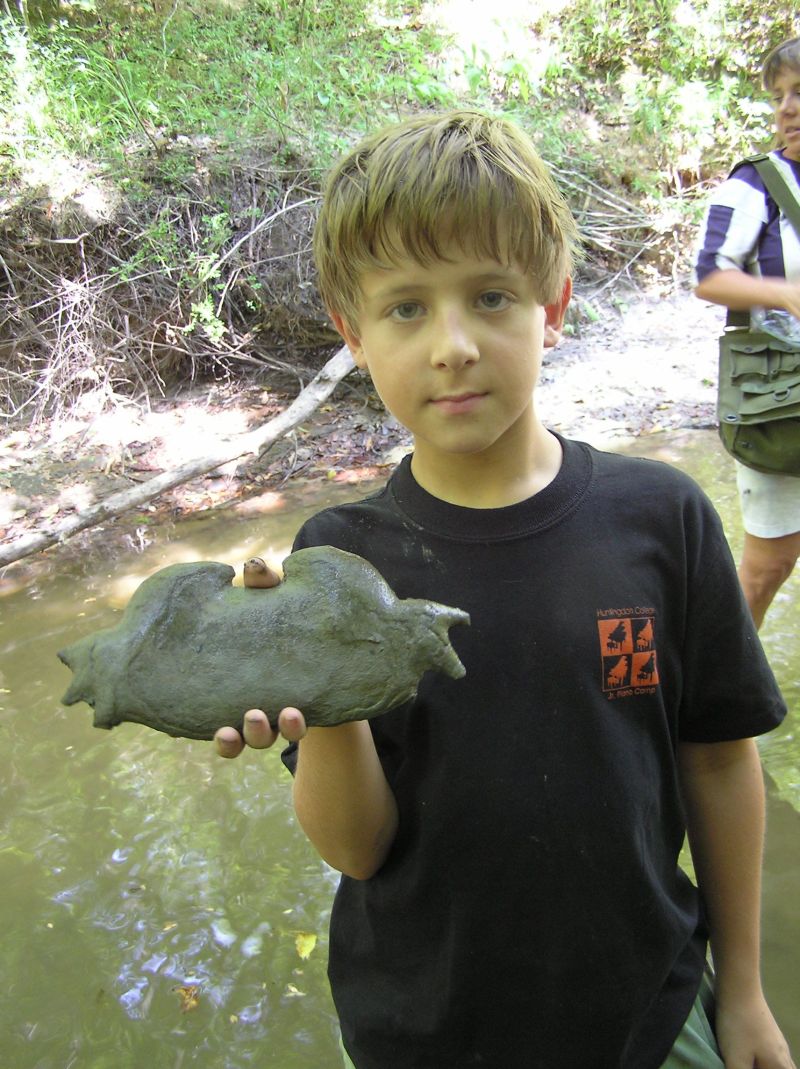
Richard found a very nice crab.
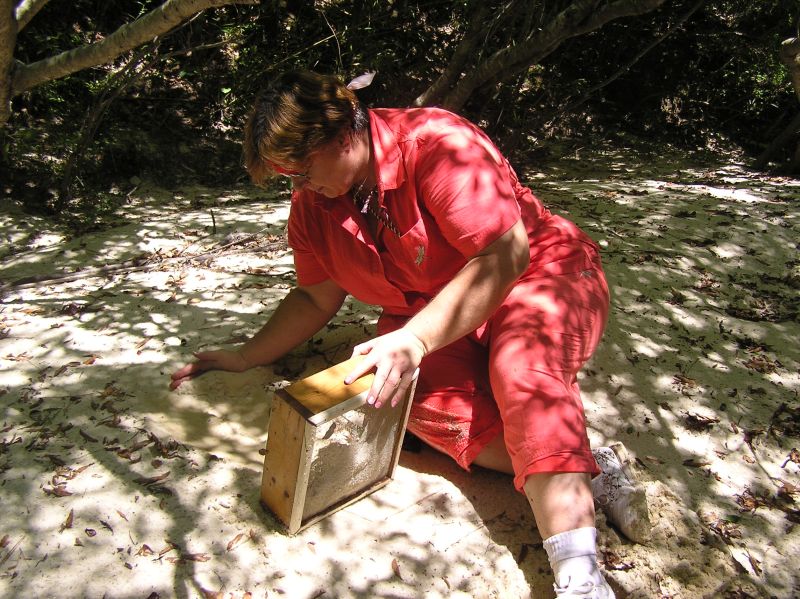
Leisa decides to sift the fine sand in her search for smaller fossils.
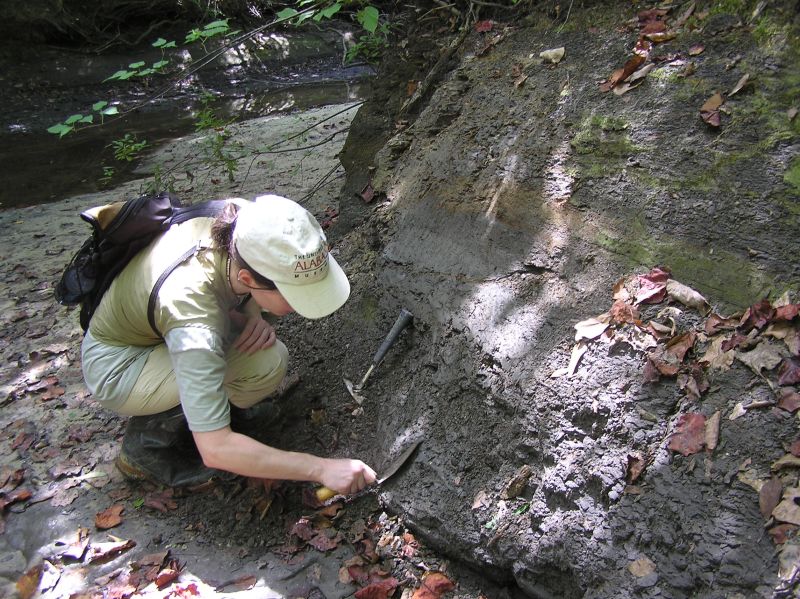
Collecting samples for research.
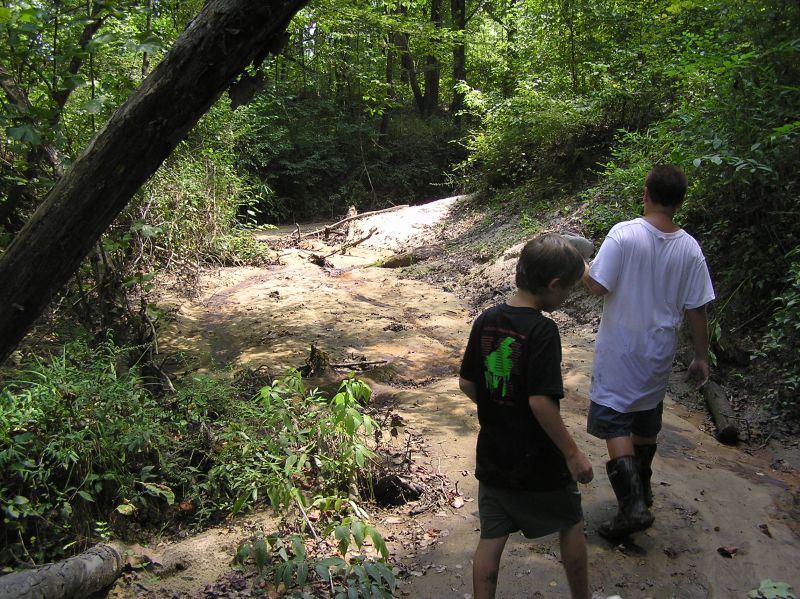
A dried up creek we explored in the area.
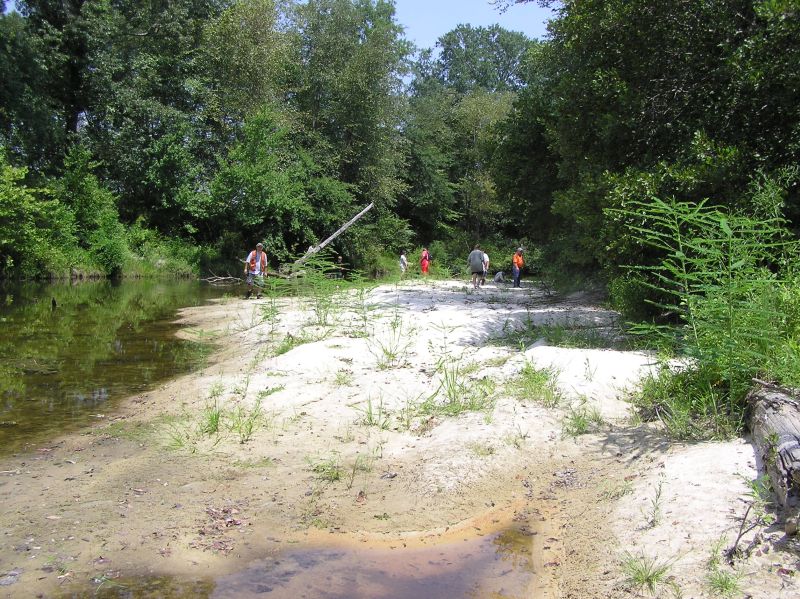
We explored the main creek a good long while.
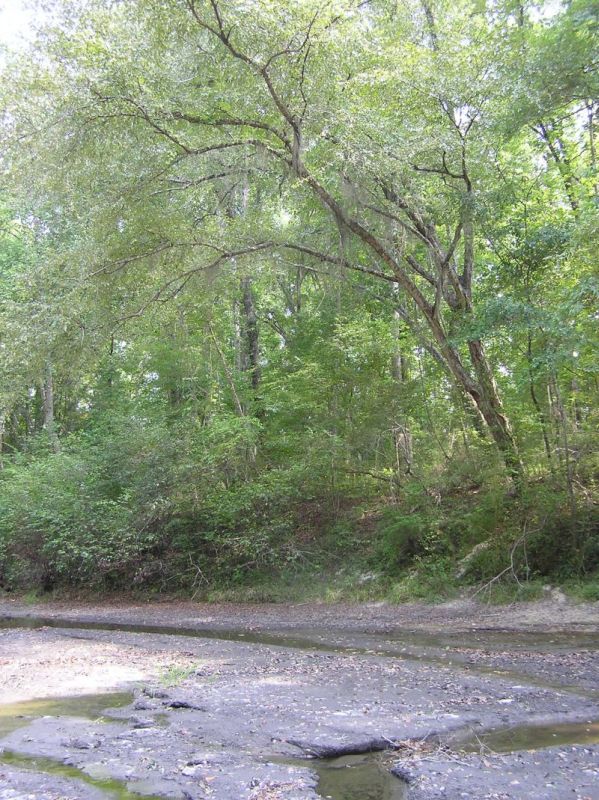
Nice view of the creek, which is almost dry in some areas due to the lingering drought. Notice the Spanish moss hanging from some of the trees.
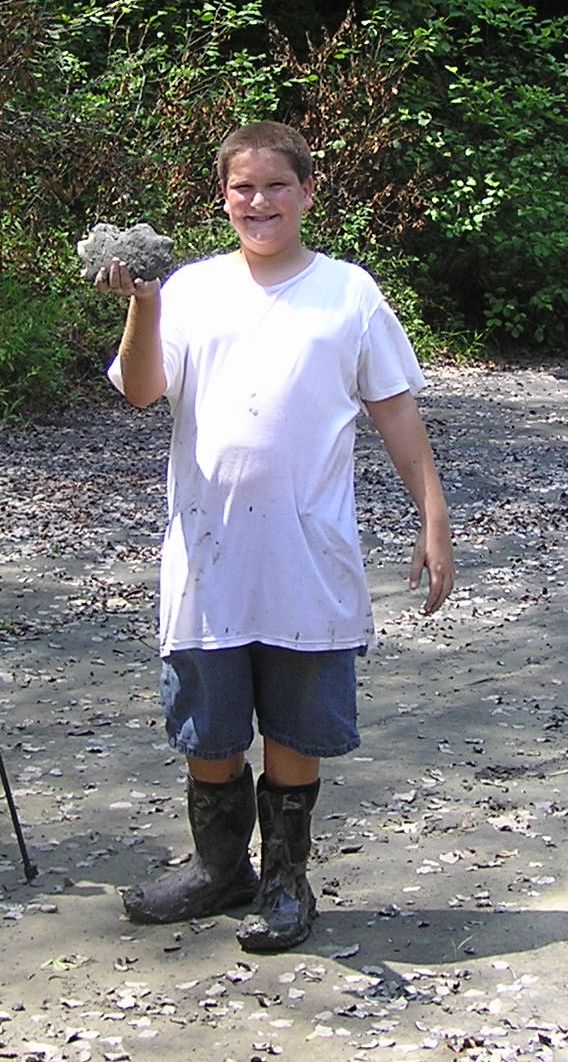
Aaron found a nice, large crab.
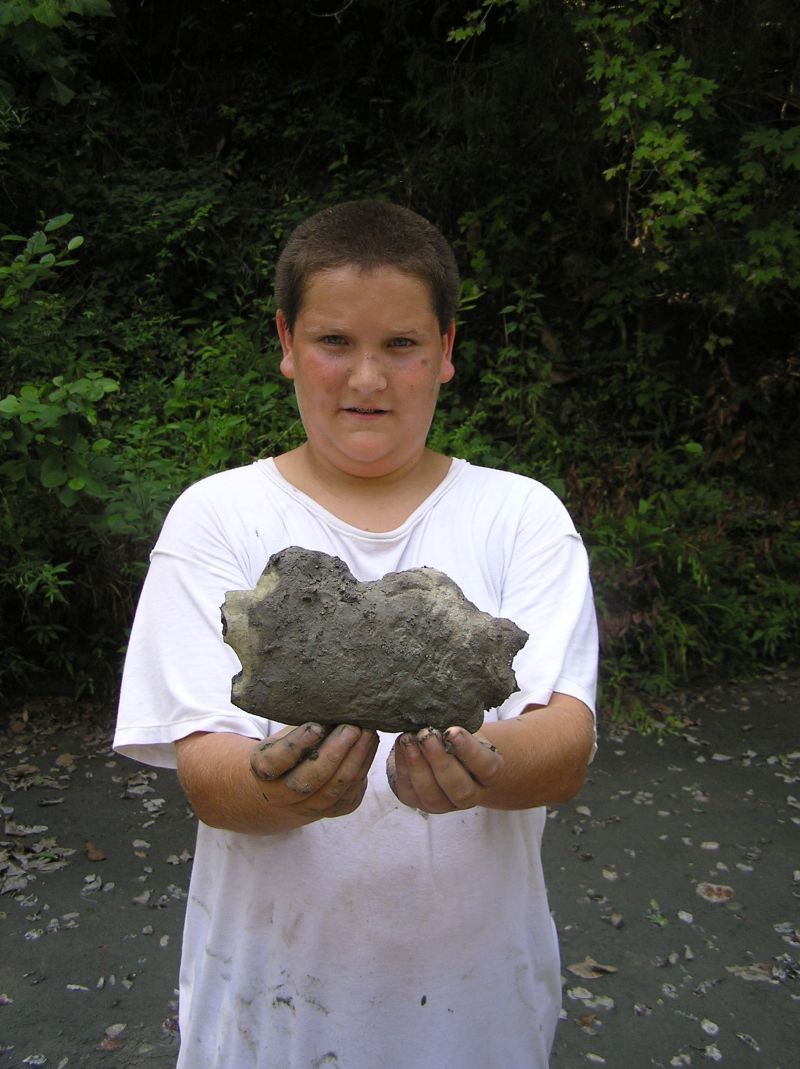
Closer view of Aaron's large crab nodule.
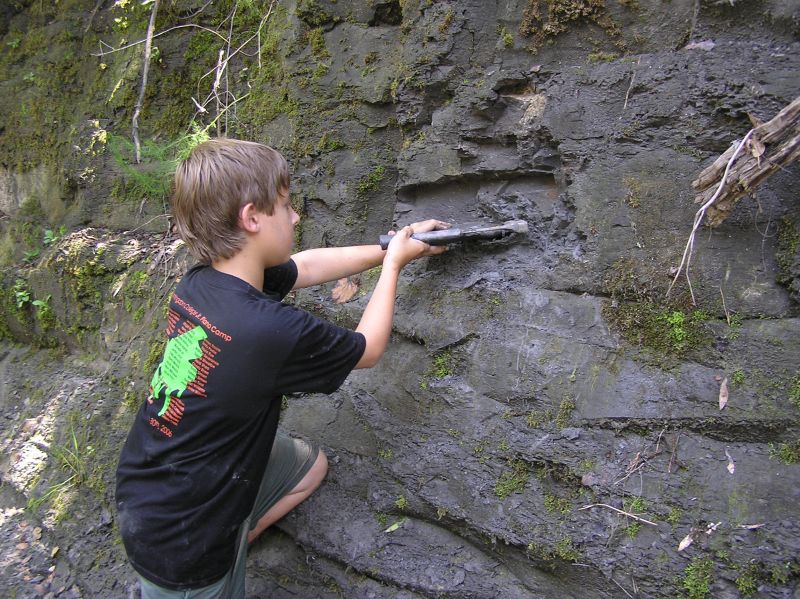
Richard is digging out a very nice crab.
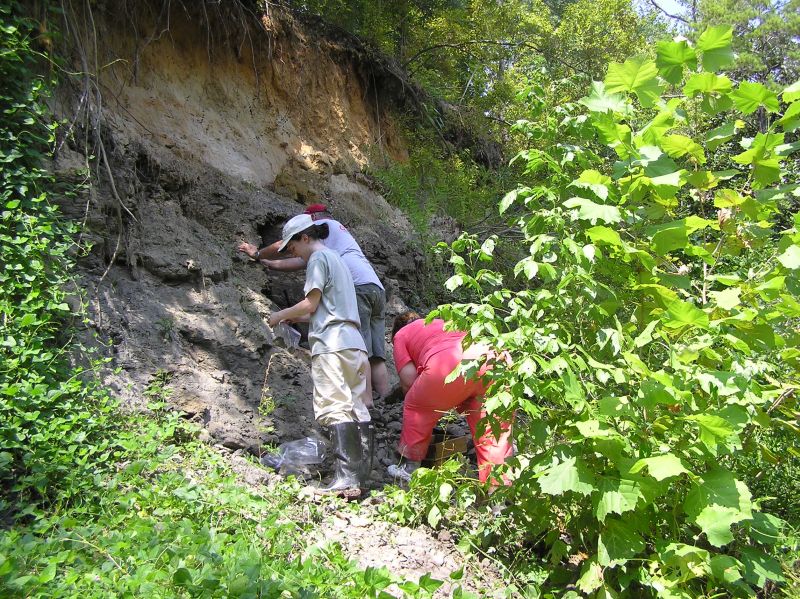
Another outcrop that Sandy found interesting. Many soil samples were taking from this location.
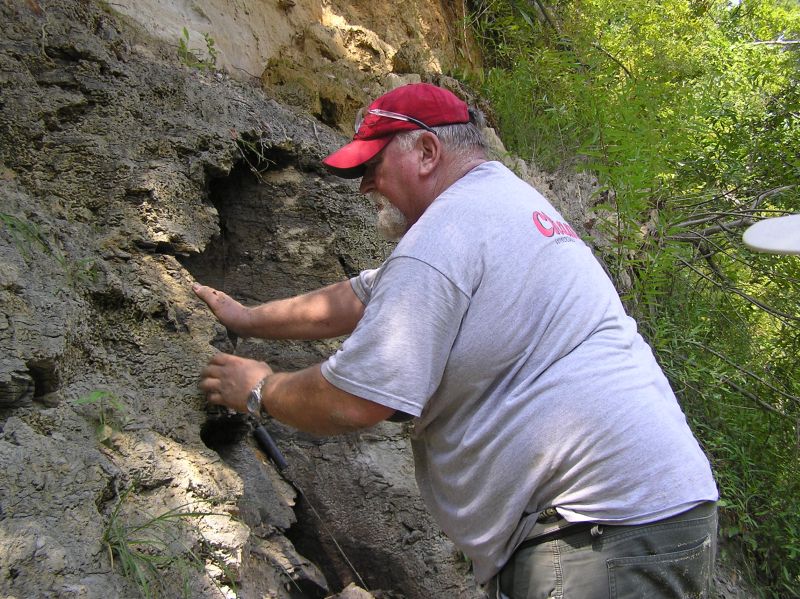
Greg is assisting in collecting the soil samples.
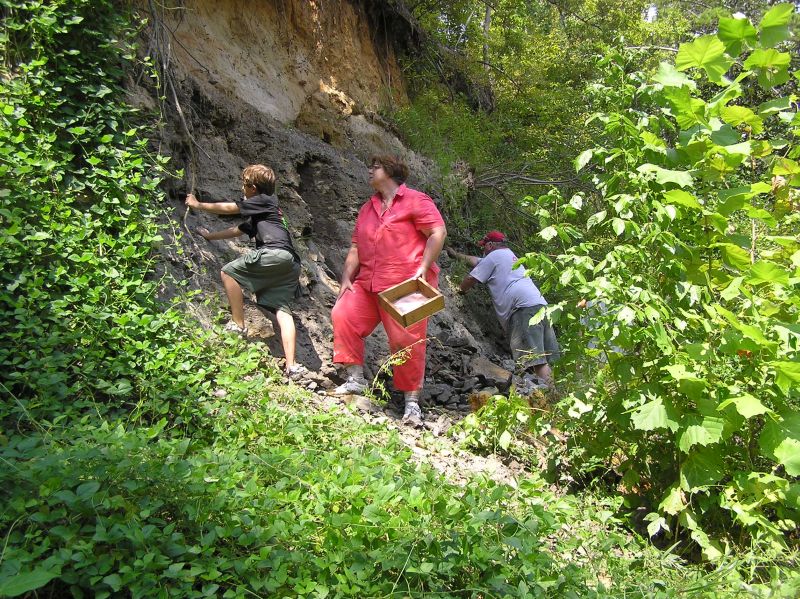
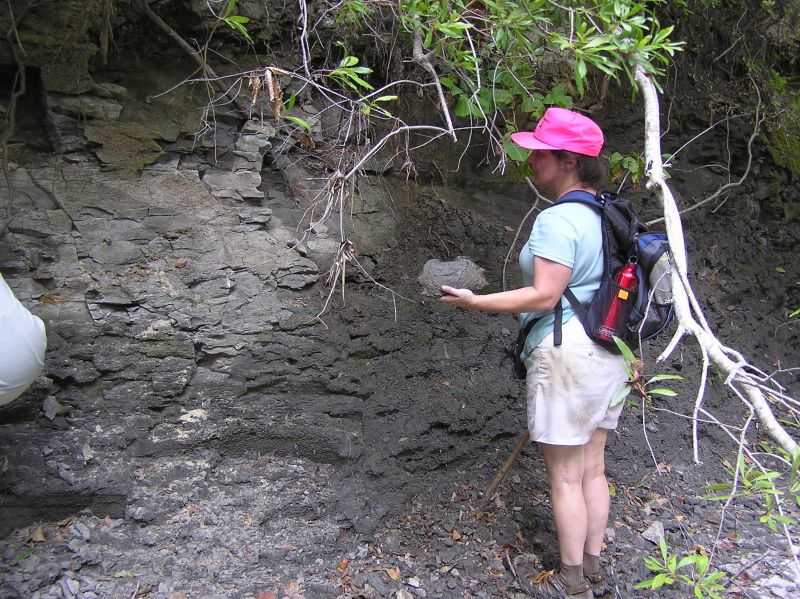
Becky found this nice crab nodule.
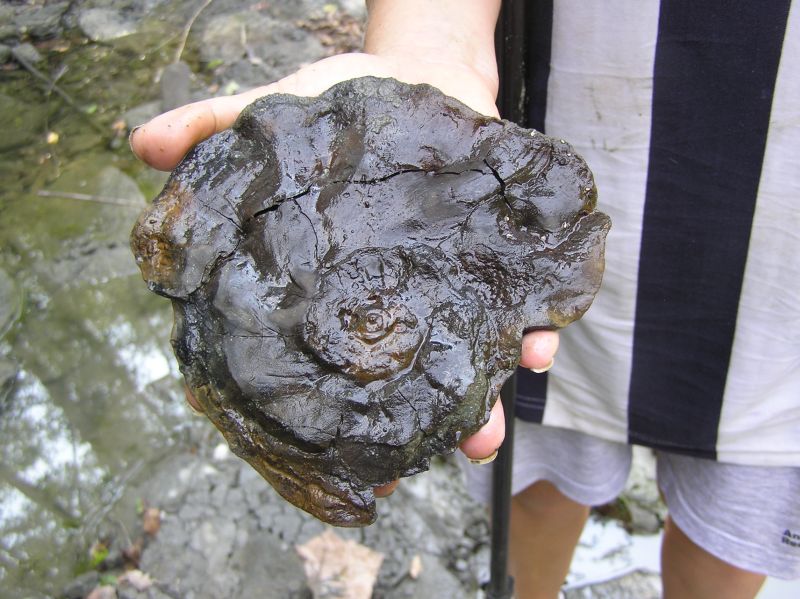
Michelle found part of an ammonite.
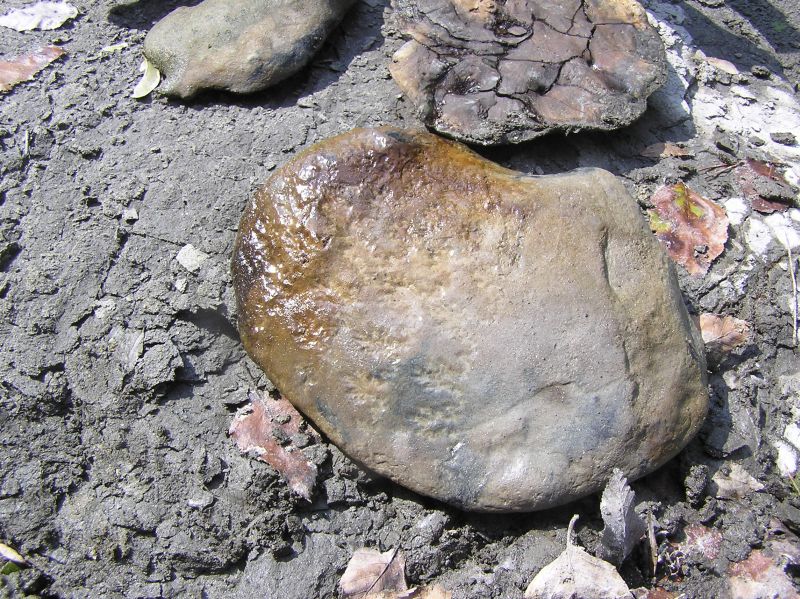
More ammonite found by Michelle.
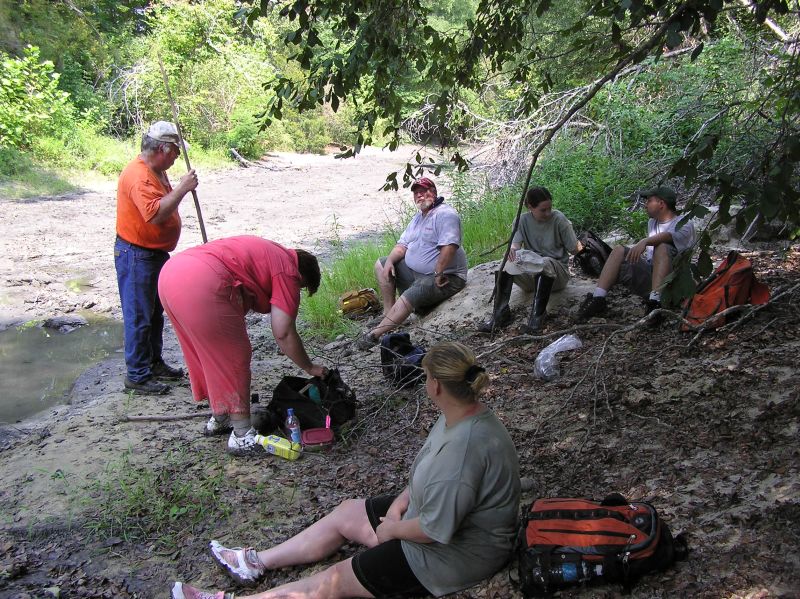
Taking a rest after a long, hot day on the creek.
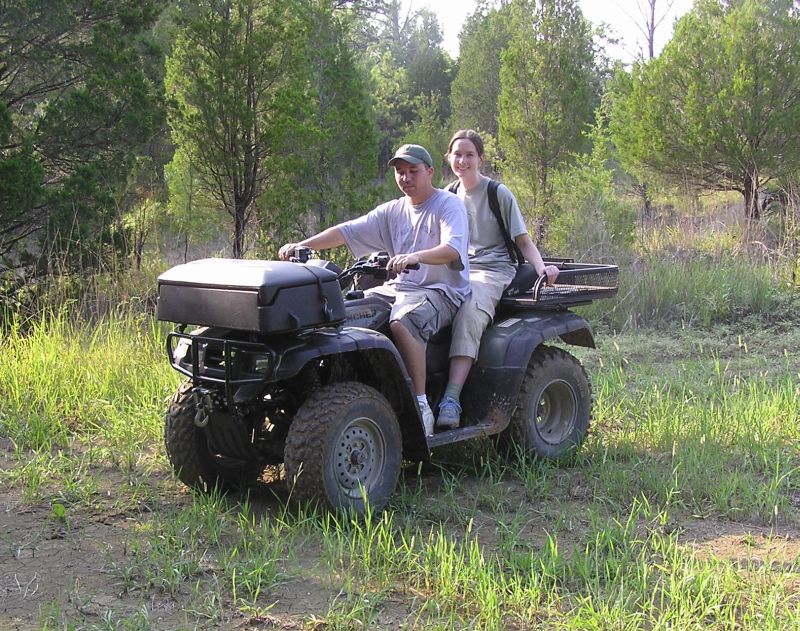
Jun and Sandy probably had more fun than the rest of us getting to the next collecting location - this was Jun's first opportunity to drive an ATV!
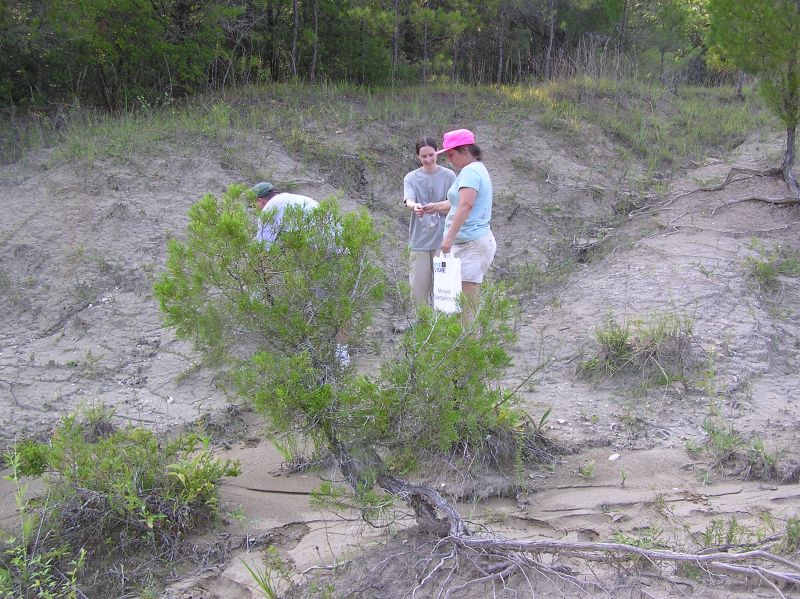
After a bit of a rest, we decided to explore a gully late in the afternoon.
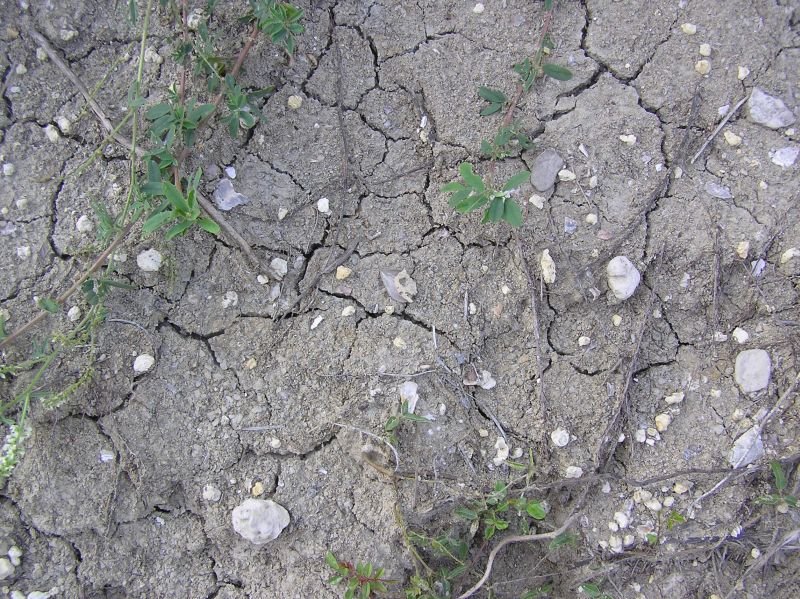
This is how the gully looks when you get closer to the ground - a lot of shell bits and pieces. Can you find the shark tooth in this picture? It takes a while to get one's eye attuned to the coloring and patterns.
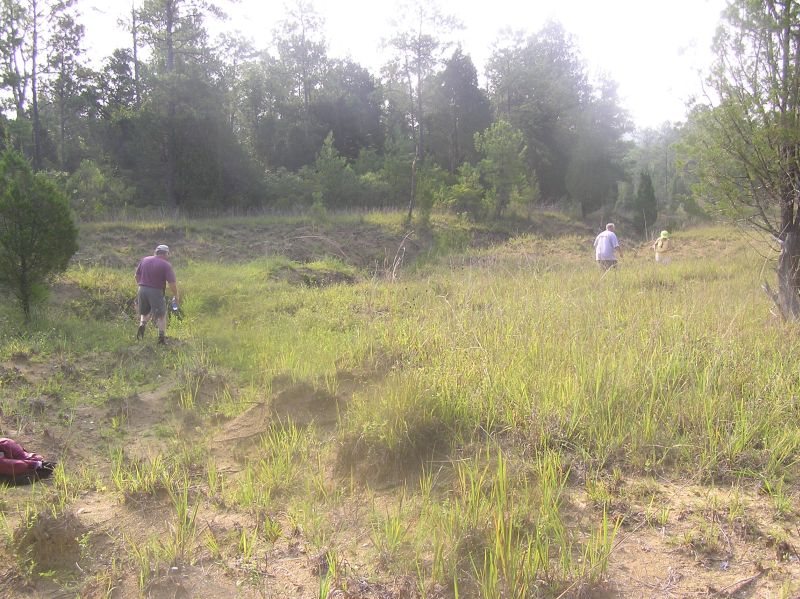
Early Sunday morning, we headed to a gully that had not been surveyed in several years. No items of interest were found here, mostly bits of shells and broken nodules, and a lot of caliche.

Closer view of the ground and a nodule.
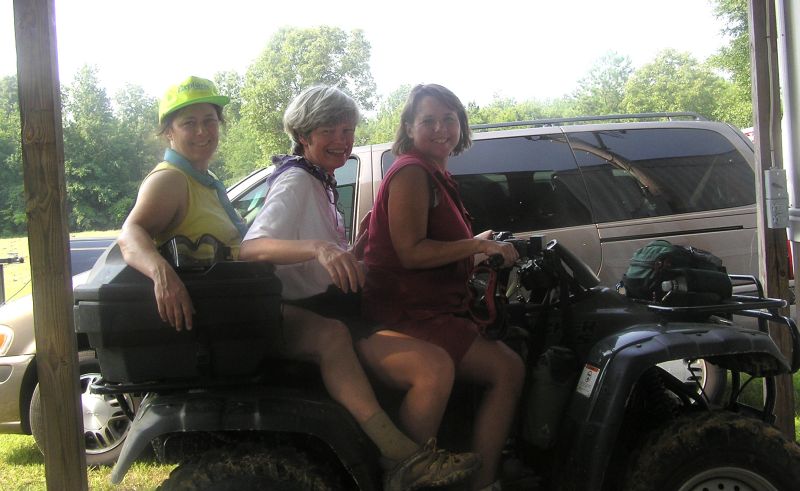
After the gully trip, one group headed back to the main creek for crabs, and the Three Musketeers, Becky, Vicki, and Michelle, headed off for an adventure to find and scout a new creek.
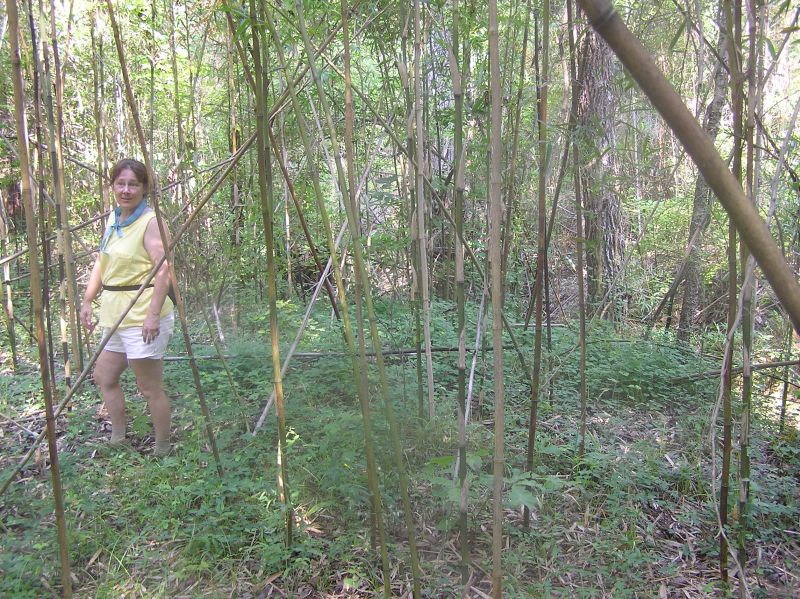
Becky amongst the fishing poles.
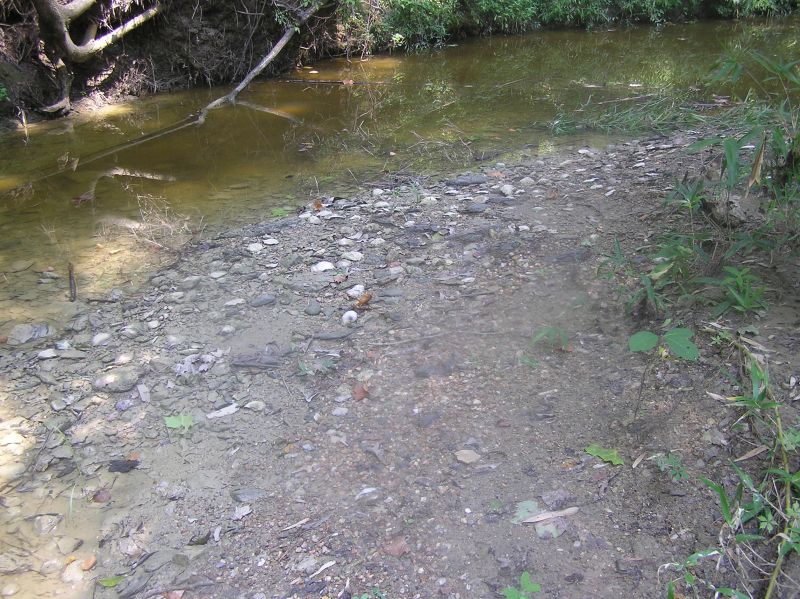
Finally, we made it to the creek, which was littered with shells, primarily exogyra.
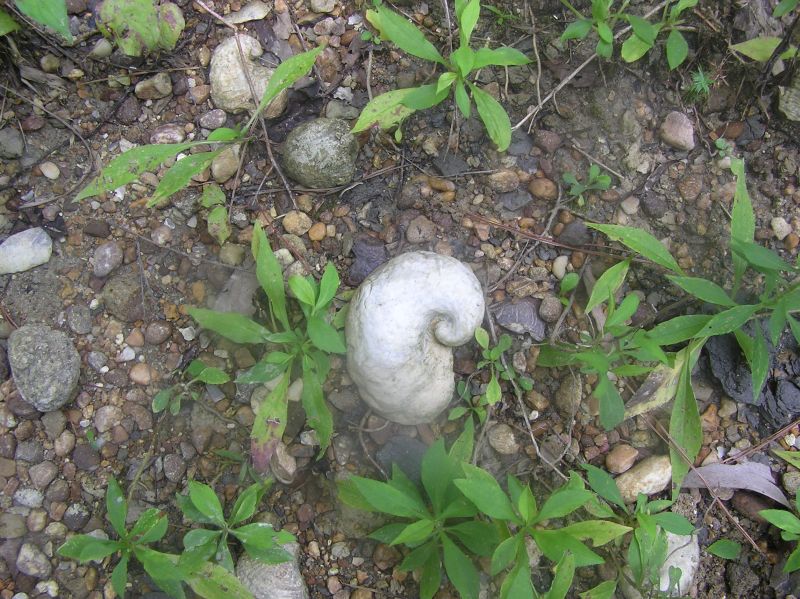
Exogyra.
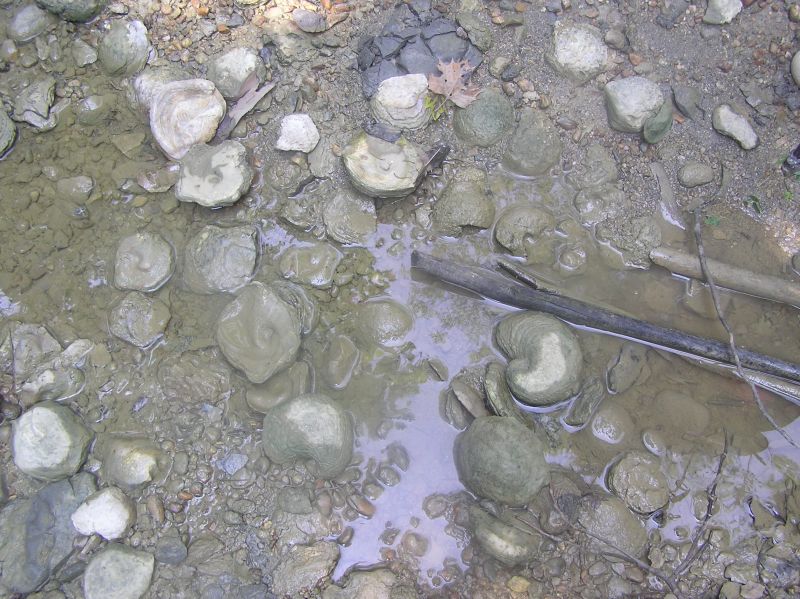
More exogyra pieces. The slightly circular pieces with the dimple in the middle are the other half of the exogyra, though we did not find any articulated specimens.
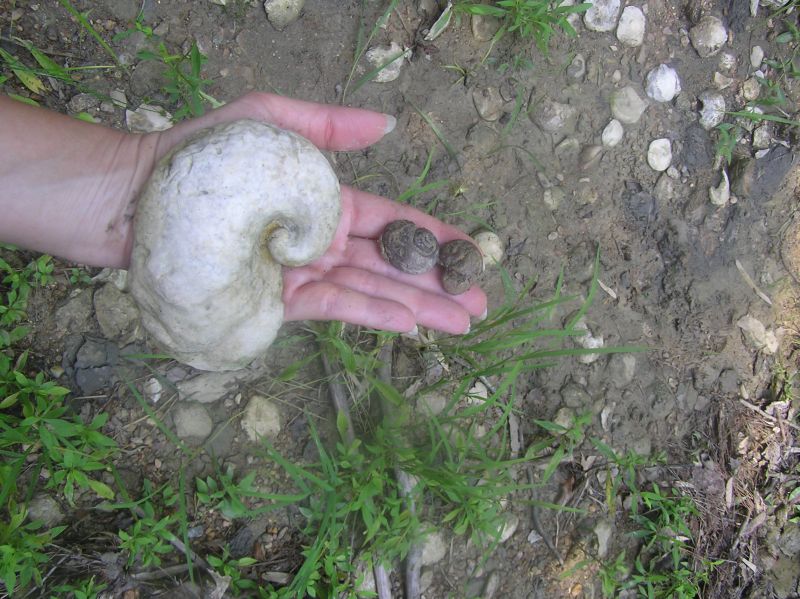
Exogyra and a couple of gastropods found by Vicki.
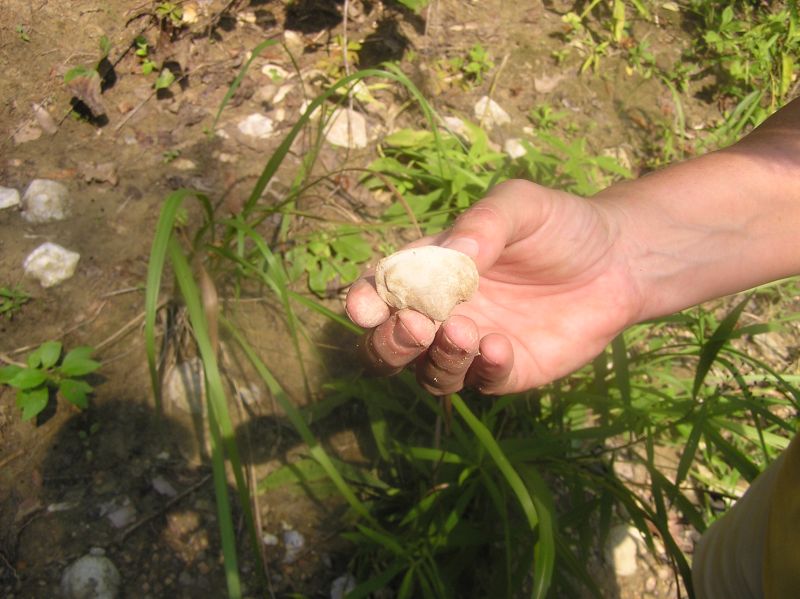
Nice bivalve found by Becky.
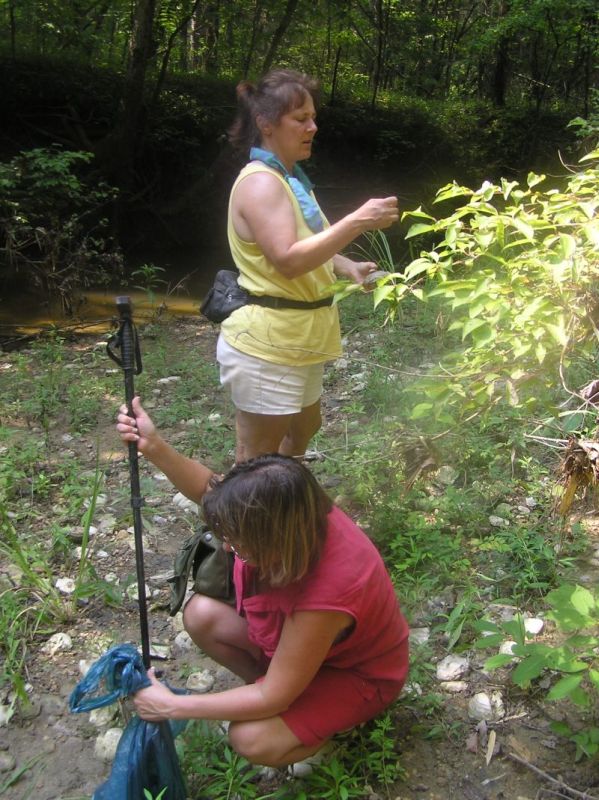
Michelle and Becky looking for fossils.
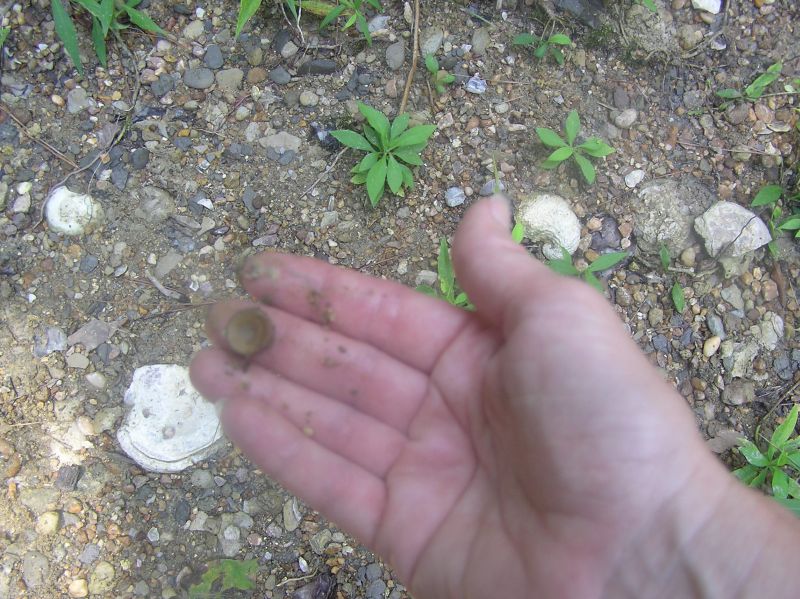
Small vertebra found by Vicki.
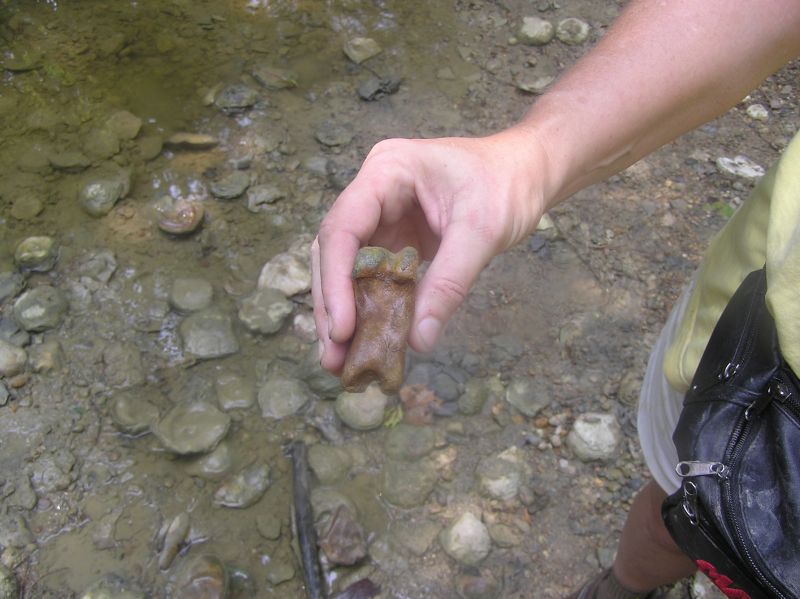
Bone, but unfortunately, it appears to be recent.
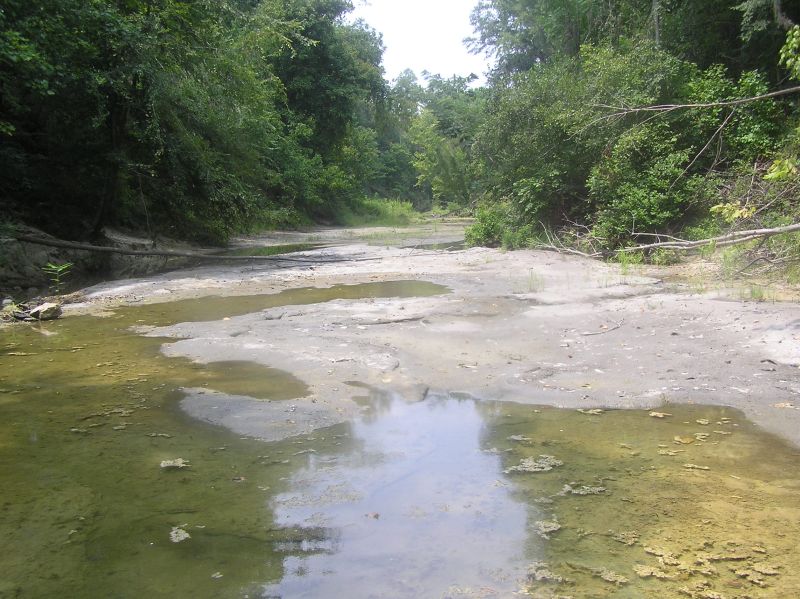
Last creek to be explored.
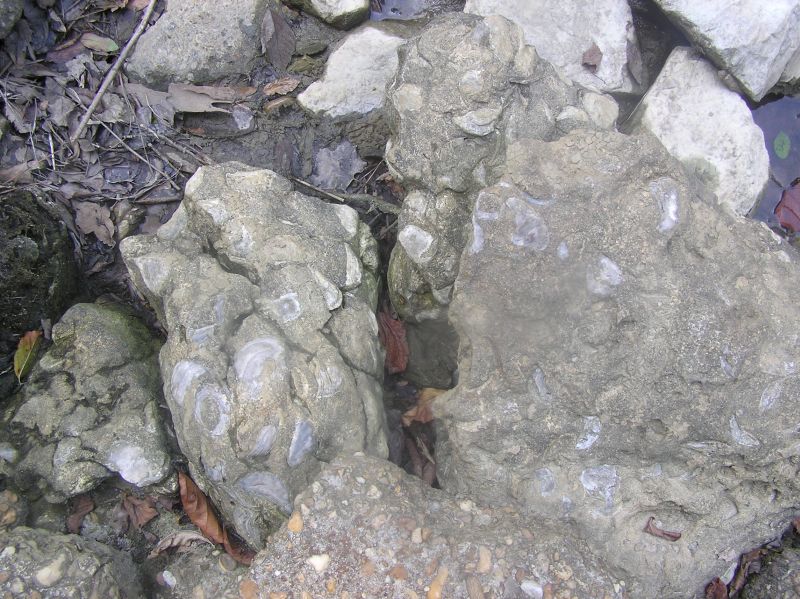
This rock filled with shells was found at this creek, but not much else, so all headed home.
This May found the troops encamped in Lowndes County for a whole weekend of fossils and good company. Tents, camping vans, pop-up trailers all turned out for the great weekend of food, hunting and sleeping out thanks to the generosity of the hunting camp. Our hosts supplied rides out to gullies and a creek on their property via ATV’s and trailers. Even Sylvie made the bumpy ride out to the creek, although some of us did do a quick, quiet poll as to who knew how to deliver a baby or how long it would take to make it to the nearest medical facility, JUST IN CASE she hit one bump too many! We had a great crowd, and some excellent specimens of fossil crabs, shells, ammonites and various teeth were found. After a long day of collecting, we gathered around a roaring fire for a low country shrimp boil and good conversation. Everyone seemed to be demonstrating that everything does taste better outside! Michael and Sylvie had left early, Sylvie declaring that she was now ready to go home and have a baby!
Even the rainstorm that burst on us Sunday morning didn’t dampen spirits. Sleeping with the rain pounding down while you are warm, dry and cozy is one of life’s lovelier experiences! The early risers gathered under one of the many “porch” shelters in the camp and revved up the little propane stoves to make breakfasts of pancakes, cereal, coffee, tea...all the comforts of home, but more fun. Finally, all but the most dedicated decided to call it a day and head home. Nancy left a few of her belongings behind, so Vicki and Martha decided to return them via Selma, wait out the storm and do a little more looking around before heading back.
It was great to see so many of us, old and new members AND guests, turning out for all or most of the weekend. THANK you to our hosts for making us feel so welcome and providing all the facilities. Also thanks to our hosts, and to Shannon and Jim for providing vehicles and trailers, and to Vicki and everybody who helped organize the weekend and the shrimp boil!
This month we were collecting in the Ripley Formation, Cretaceous Period, Maastrichtian Age. According to information published by George Martin, Soil Data Quality Specialist with the USDA, most (if not all) of the crabs found on the trip are Avitelmessus grapsoideus Rathbun, or “Muffin Crabs.” These crabs have been documented from the Ripley Formation in Alabama, Mississippi, and Tennessee. Along with crabs, members also found numerous teeth, including mosasaur, sawfish, swordfish, and various types of shark teeth. Also found were numerous shells and pieces of ammonite.
--Edited by Vicki Lais
(Photos courtesy Jan Novak and Vicki Lais)
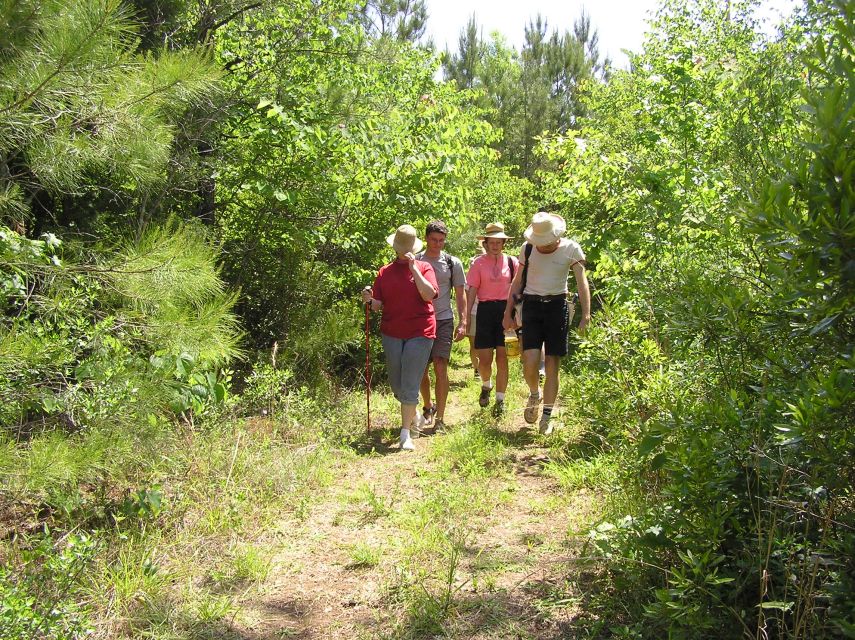
A long drive by ATV, then a short hike to the gully.
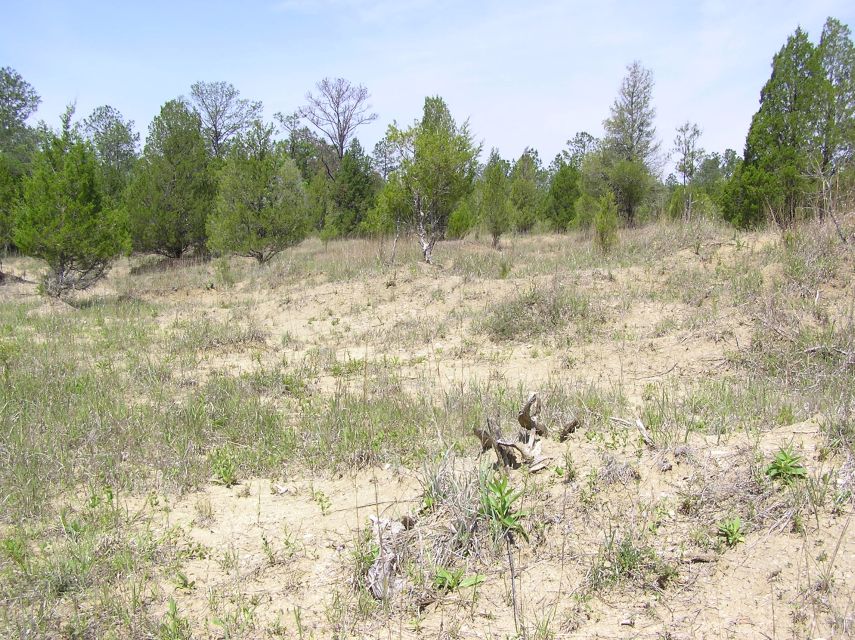
The gully where we began the day.
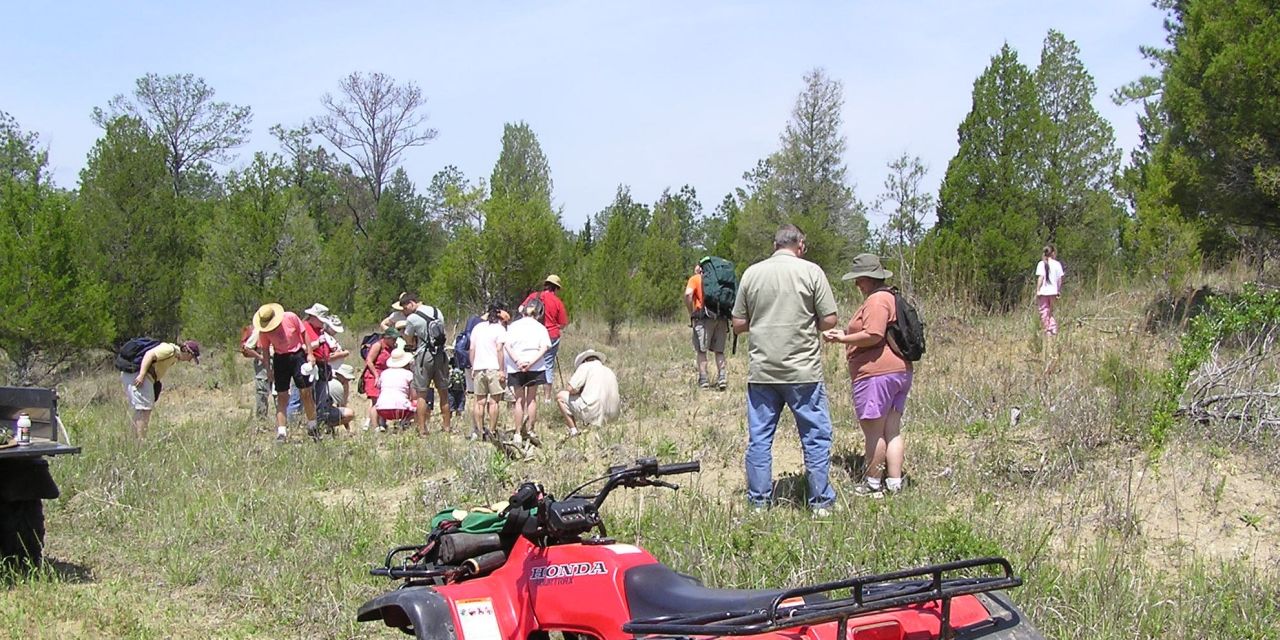
Greg has just given instructions on "how to collect in a gully", so everyone is being very cautious and searching carefully.
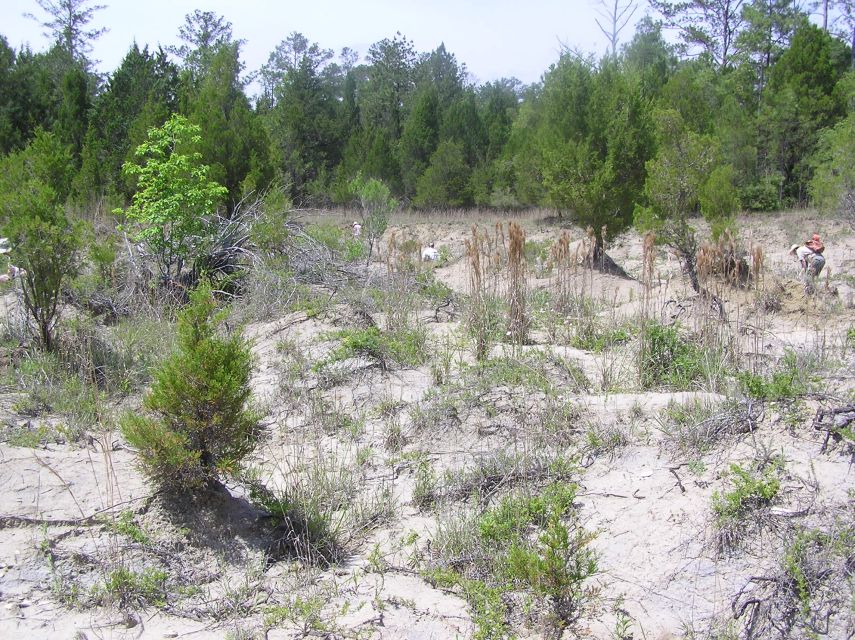
This is a rather small gully, with very little chance of getting lost here. Gullies in the Ripley are very unusual.
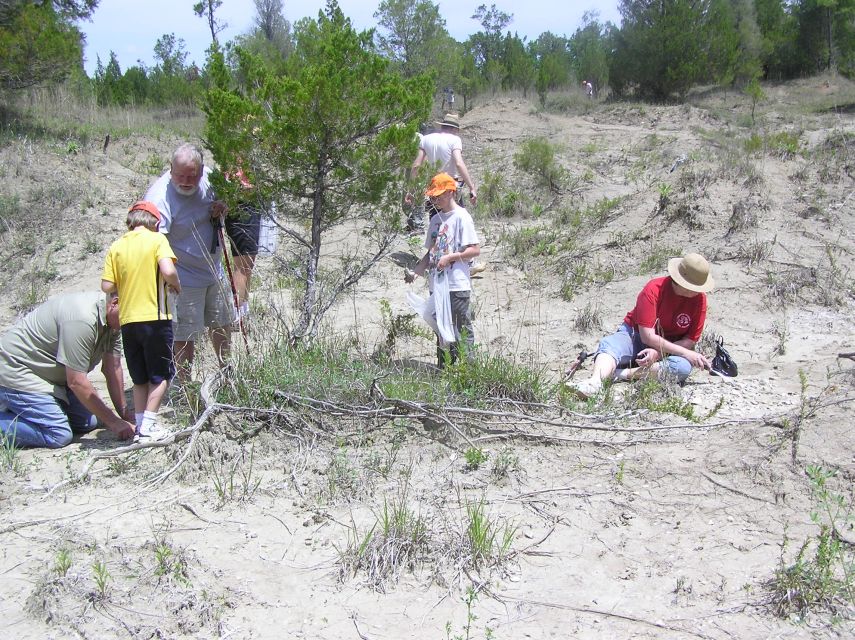
Sometimes it was easier and more productive to just sit in one spot and let one's eyes get accustomed to the patterns.
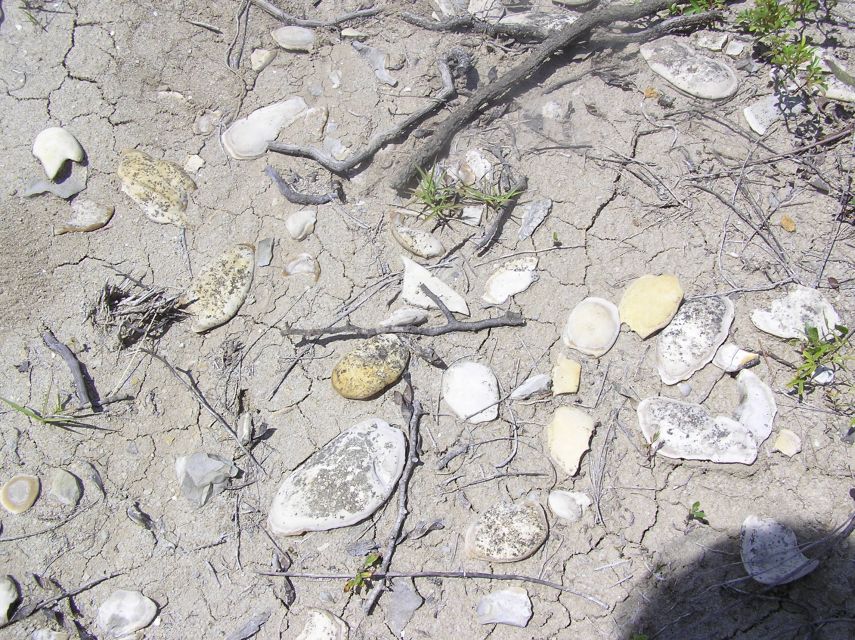
The gully is littered with numerous pieces of broken shell, nodules and sometimes fish and shark teeth.
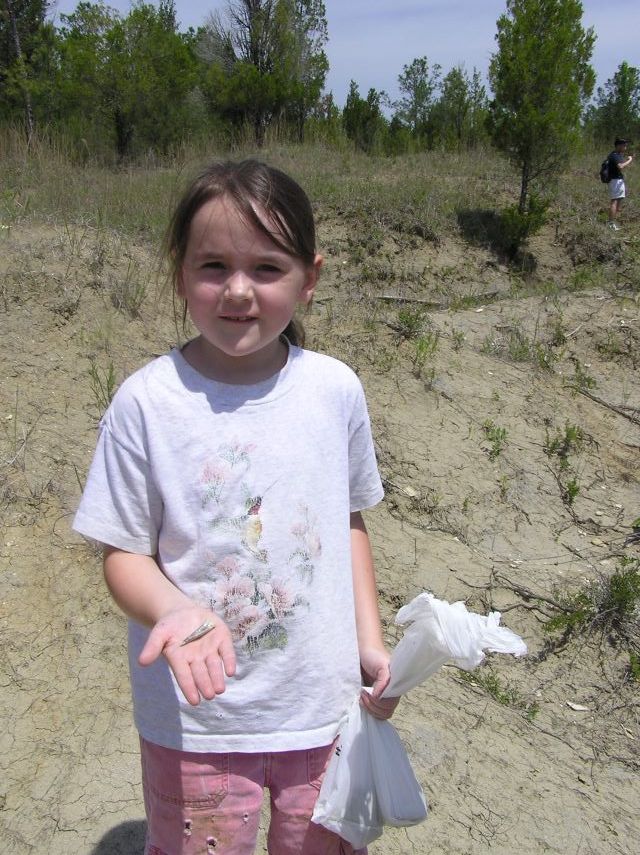
Loni's grand-daughter has found a sawfish tooth.
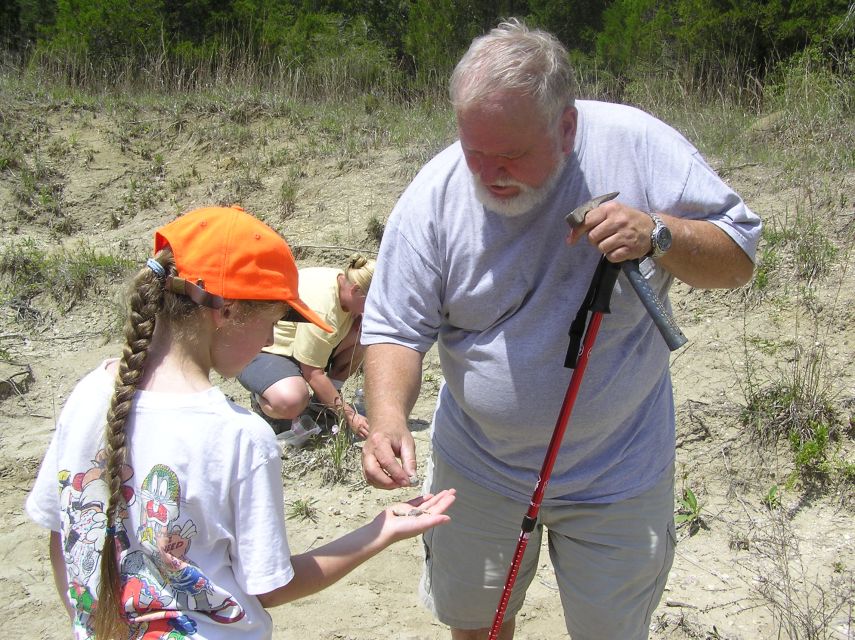
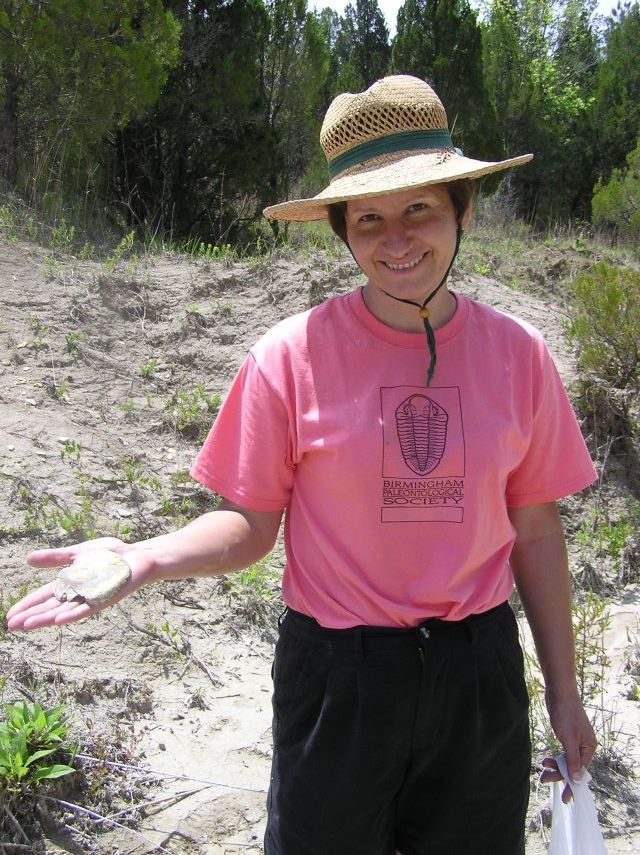
Lea has found the bottom part of a bivalve, possibly exogyra.
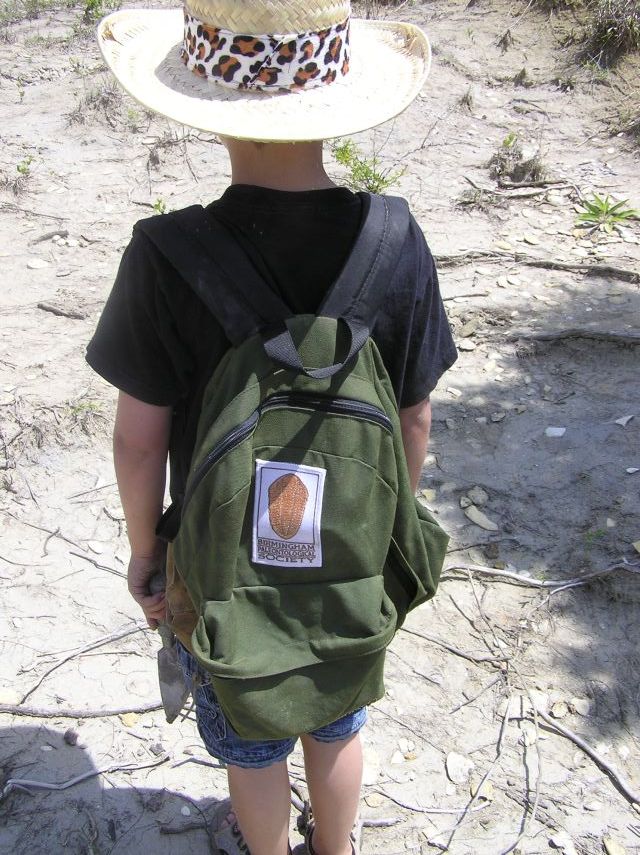
Shannon has found a new use for our logo patch - his son John's backpack.
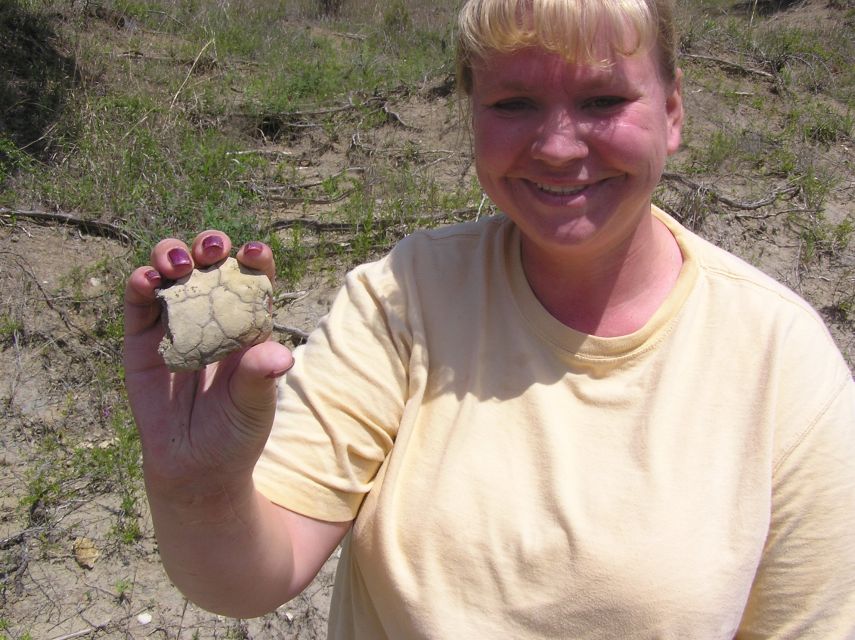
Melanie has found . . . something . . . .
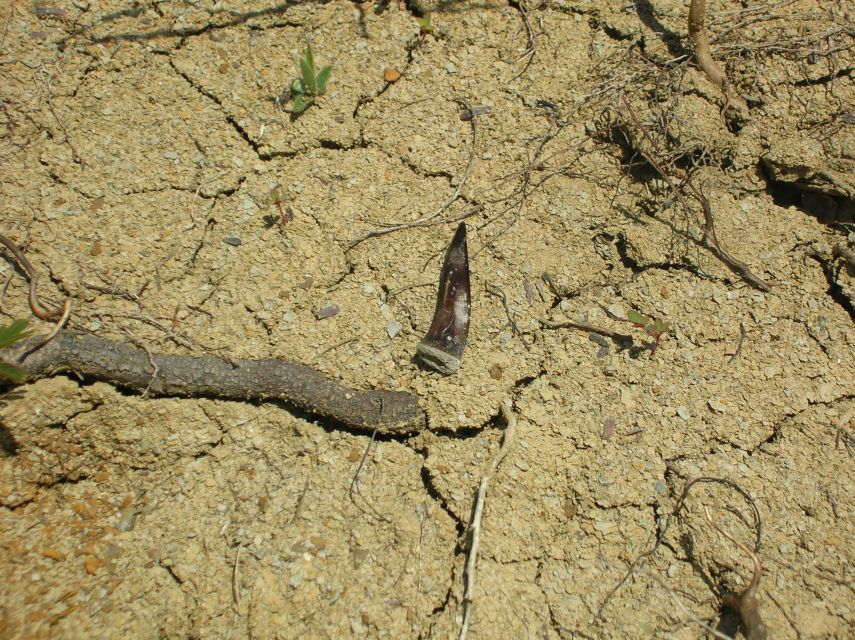
Tooth from a late Cretaceous swordfish, probably Protosphyraena.
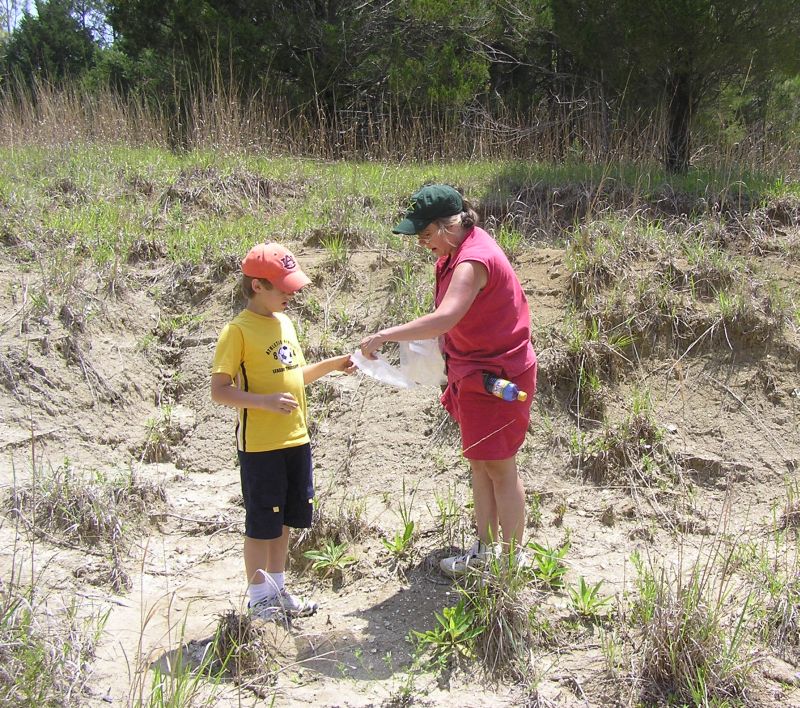
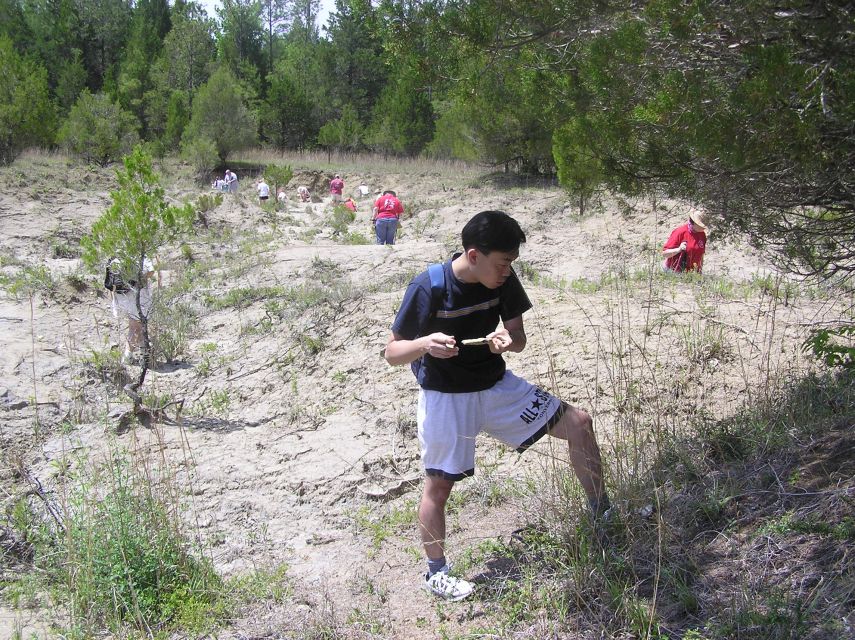
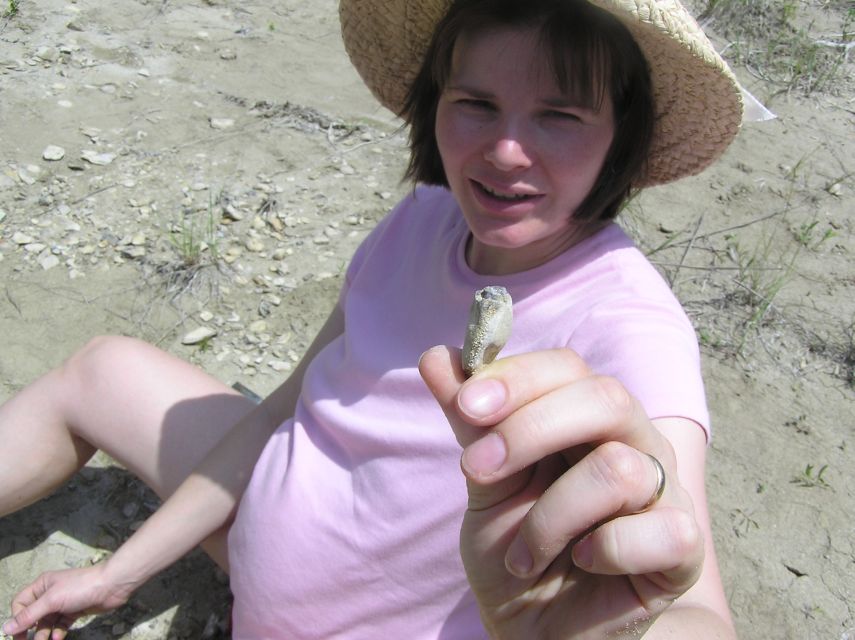
Sylvie has found part of a crab leg.
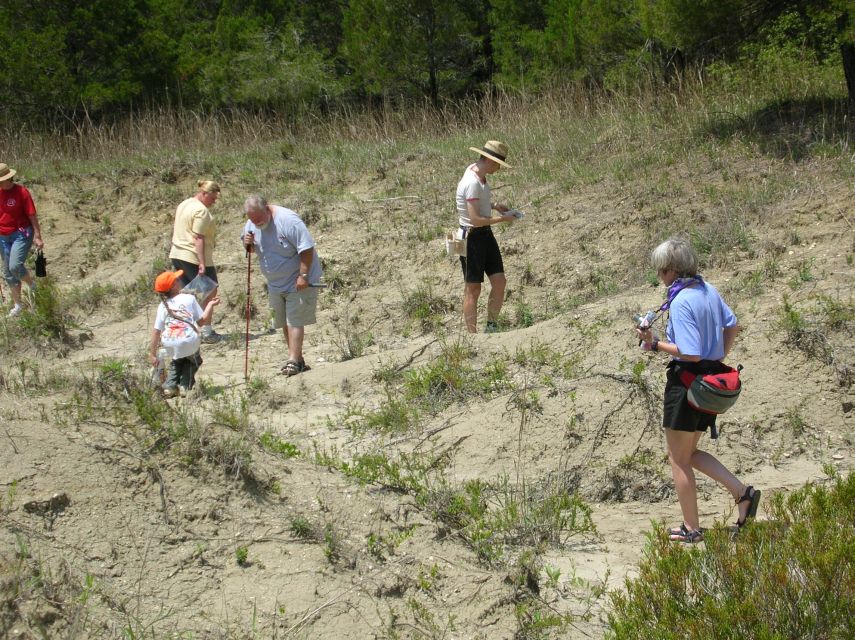

Small fragment of ammonite showing the tell-tale intricately patterned suture marks, which distinguish it from a nautiloid.
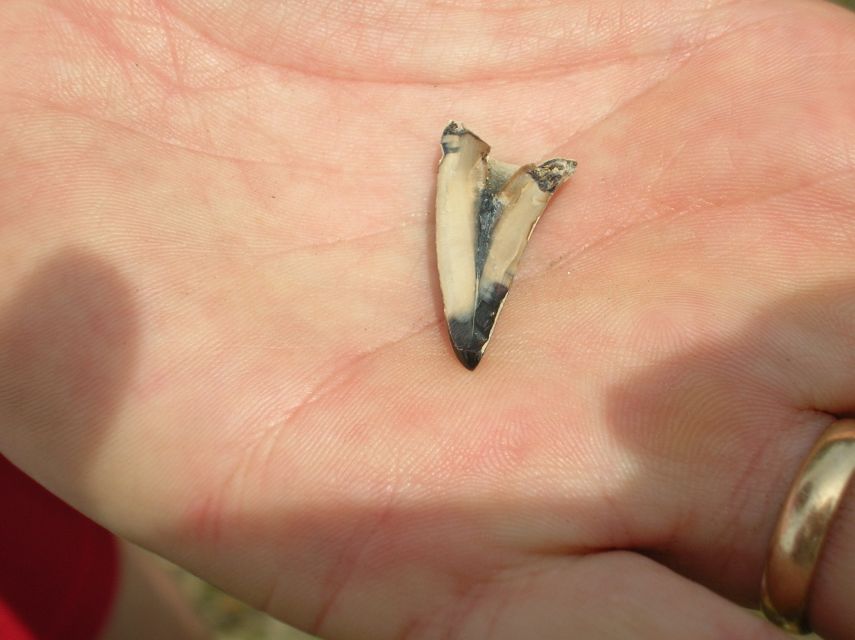
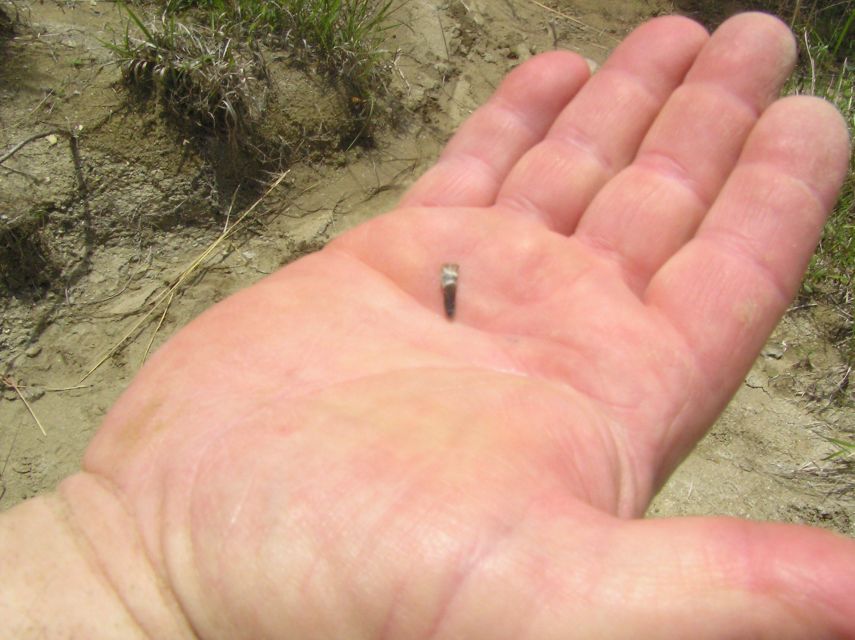
Mosasaur tooth.
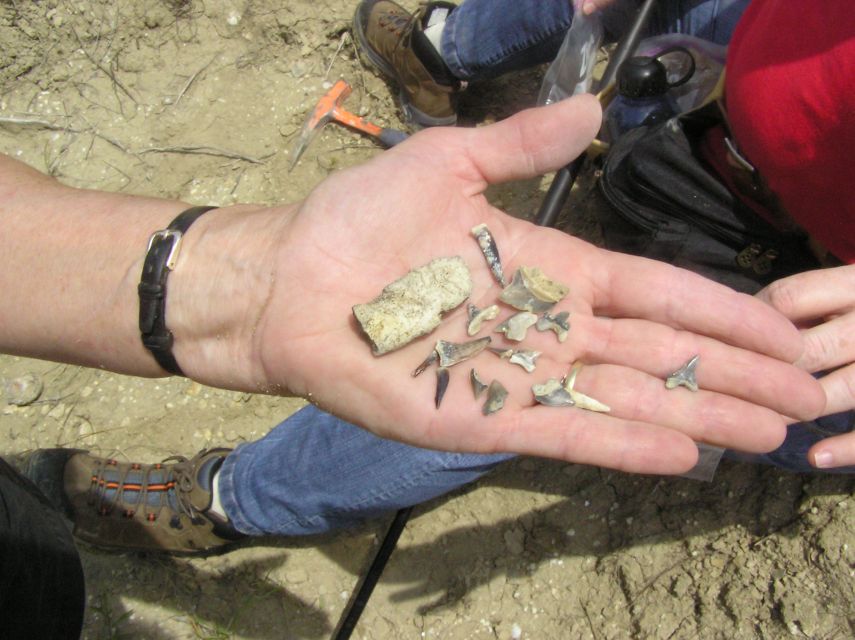
A variety of shark teeth, and the long upper left one is a swordfish tooth.
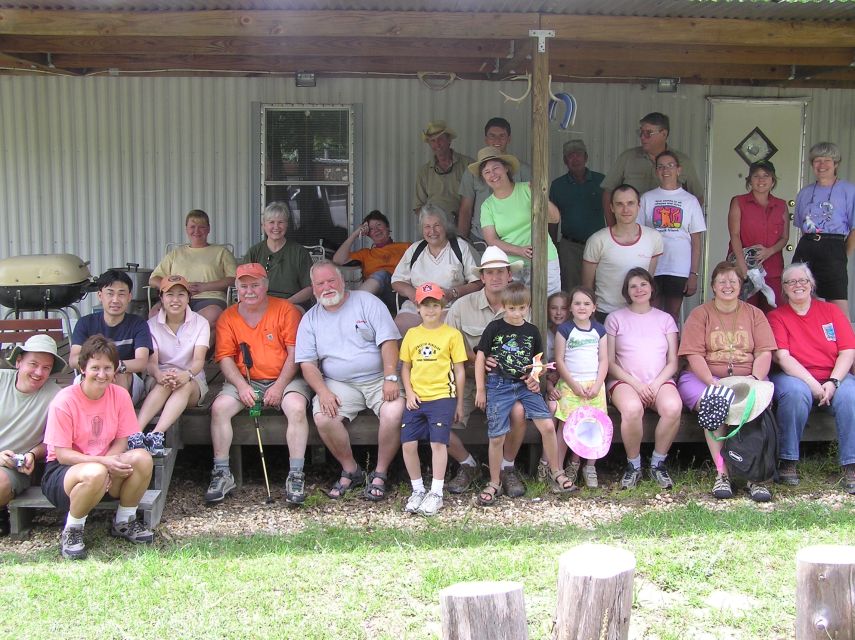
After a really hot morning, we returned to camp for lunch and a group picture. Uhh.... where's Claire, did we leave her??
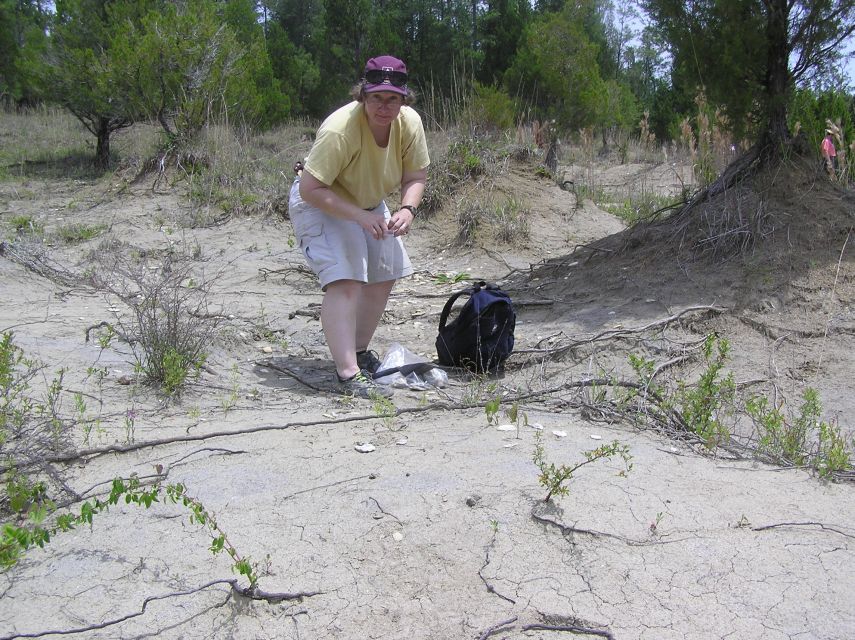
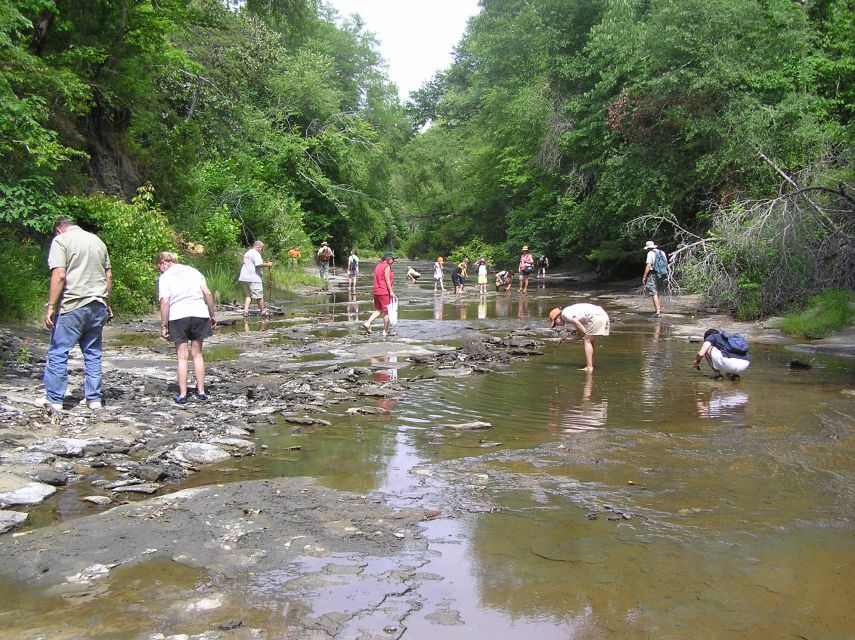
Members spread out to search the creek bottom and banks. Some go upstream, some go downstream.
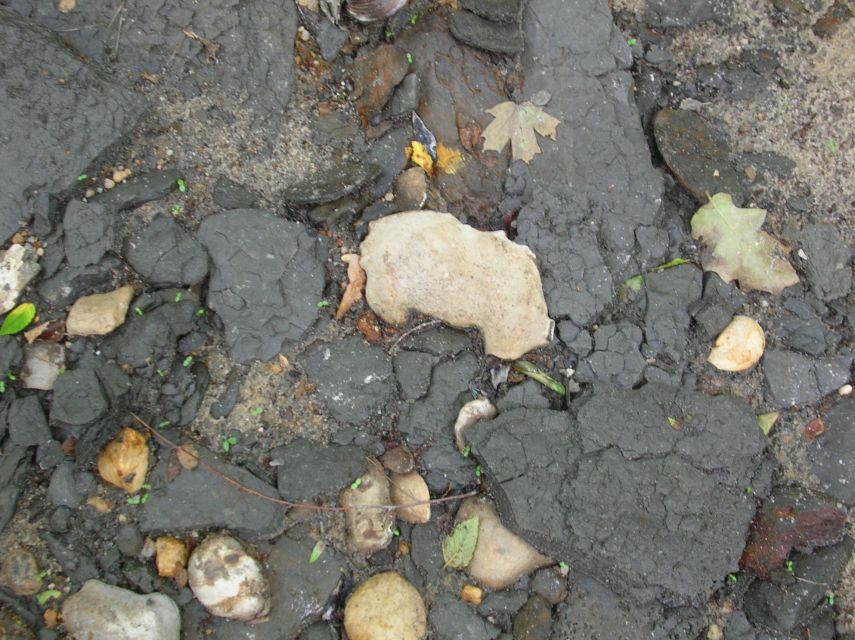
Nice crab. Note the dark gray clay. It is quite slippery in the creek and along the shore.
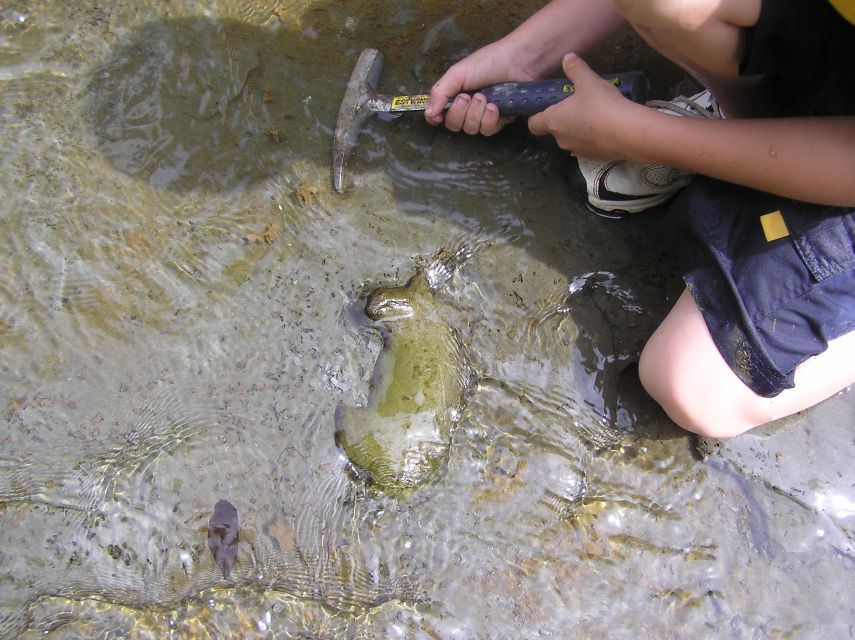
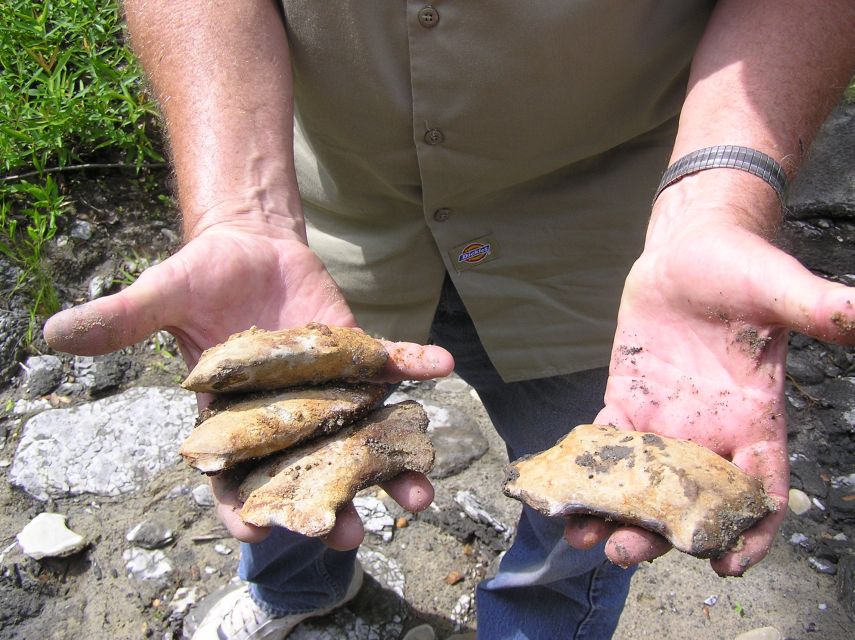
Some nice crabs.
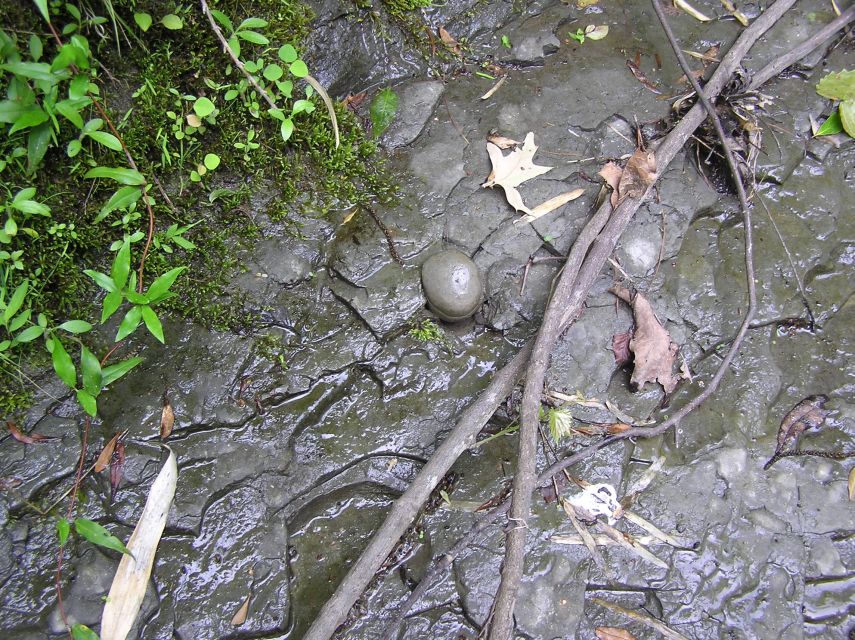
An odd round item found by Vicki.
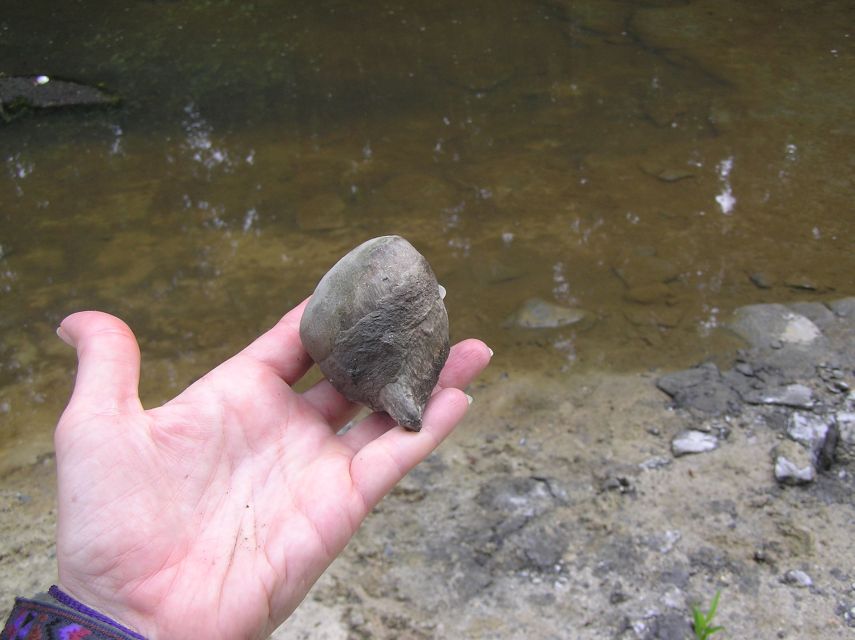
A closer look at the "round thing".
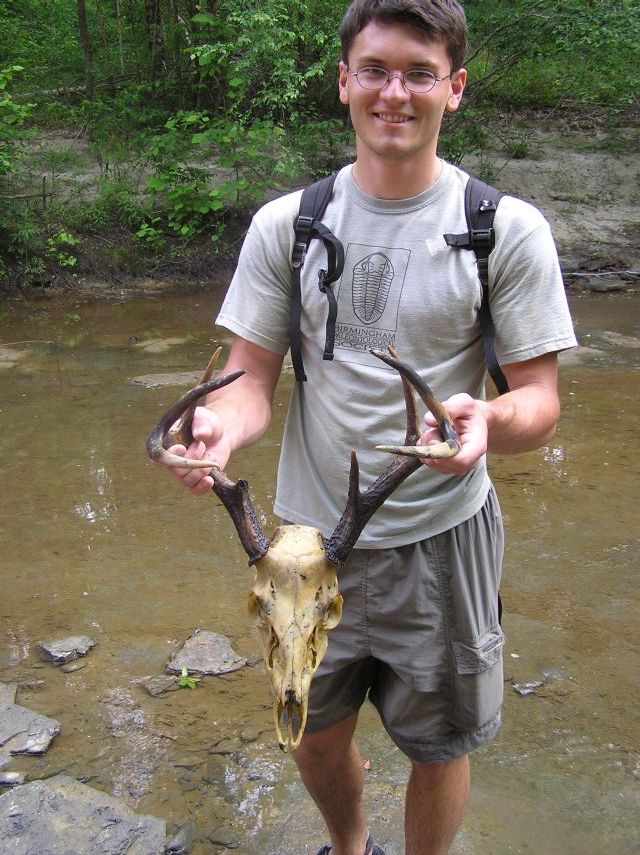
Rychard has found a nice deer skull, recent, not a fossil.
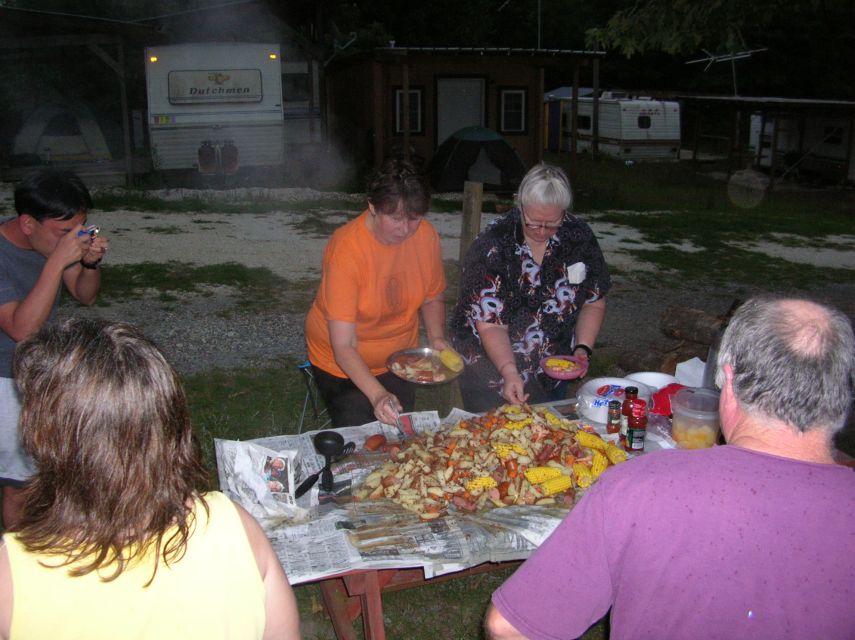
Back in camp, the food fun starts! Members and guests enjoyed a fine low country shrimp boil, with head chef Greg Mestler. Numerous members contributed to its preparation and its disappearing act!
THIS JUST IN ! ! SYLVIE AND MICHAL ARE THE PROUD PARENTS OF ELI MRUG ! Born May 23, 2006.
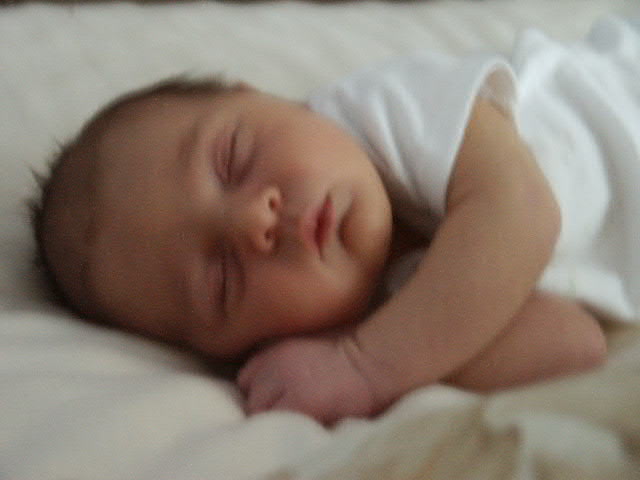
BPS members collected in St. Clair county, Alabama this month. The weather started out a little chilly, but turned into a perfect, pleasant day. The first stop was a Mississippian age road cut, where geologic uplift is obvious. There we found several varieties of coral, including quite a few large horned coral, brachiopods, and sponges in layers of the Tuscumbia Limestone. The Ft. Payne chert contained numerous hollow molds left by archimedes and crinoids. After we had decided to stop collecting (let's see, Leisa decided this how many times???) and were winding up to go to the the next site, Michael split open a rock and found a trilobite. Well, we had been looking for the correct layer for several hours with no luck, so this set off another search for the "correct" rocks in the "correct" layer, and everyone began splitting rocks, hoping for a nice trilobite. A local landowner stopped by to ask what we were doing, and once he found out, offered to let us drive across his property to an old quarry and check it out. We already had a second quarry site in mind where local people fish, however, both quarries turned out to be overgrown, with large boulders, and in a very quick assessment, we found no fossils. All was not lost - the ride to the quarries was quite exciting, and we enjoyed the scouting trips and being out in the woods on such a glorious day. Good memories of time spent with friends.
Edited by Vicki Lais
(photos courtesy Steve Corvin and Vicki Lais)
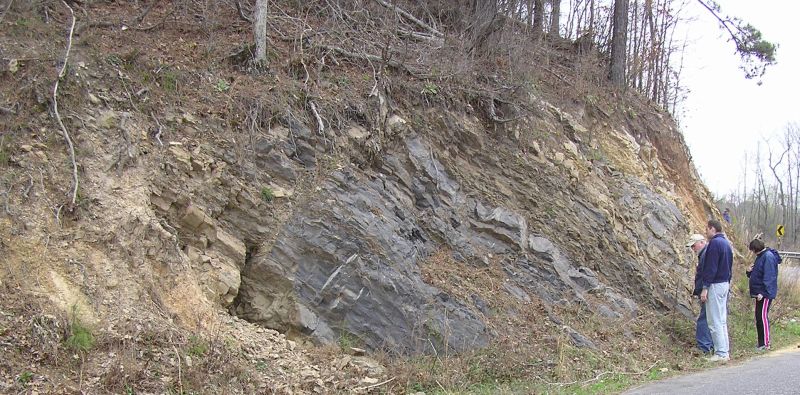
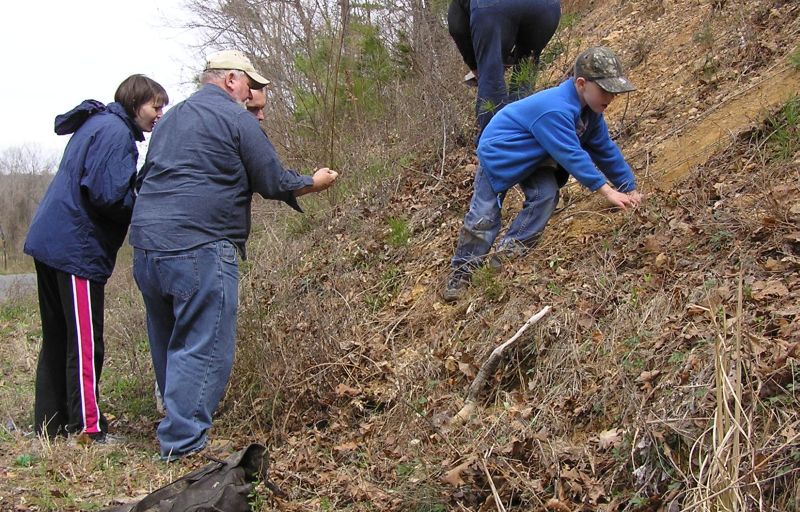
Greg is explaining how to spot the fossils.
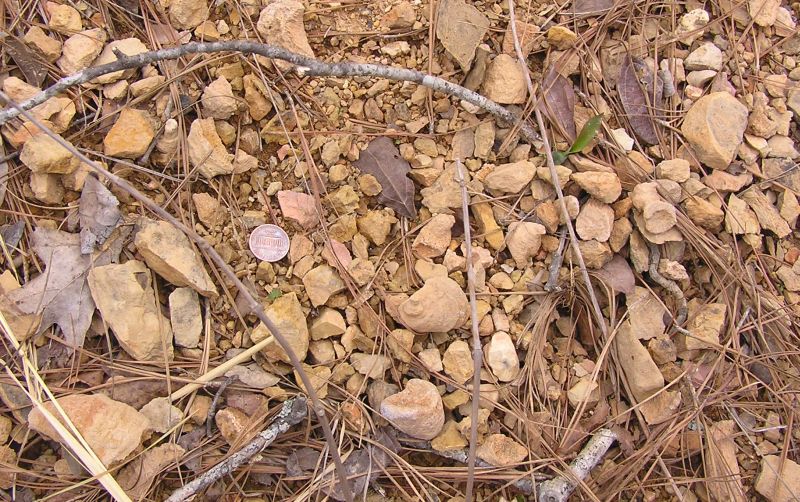
Look closely in the rocks and several horned corals and broken pieces can be spotted. They blend in well.
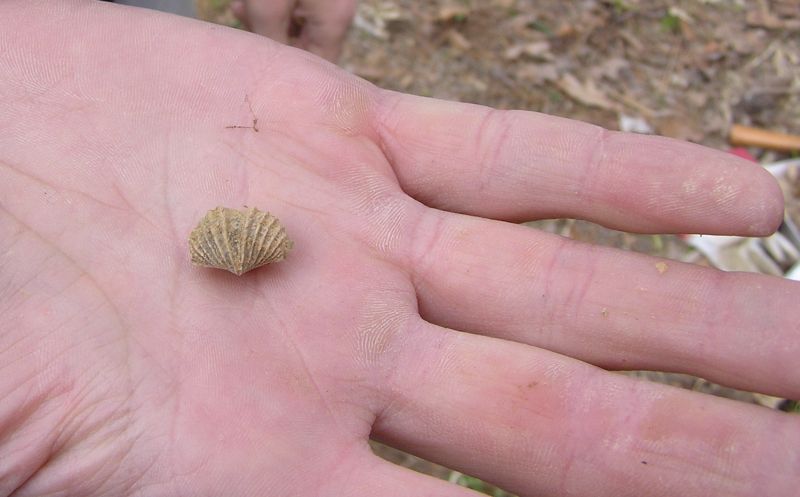
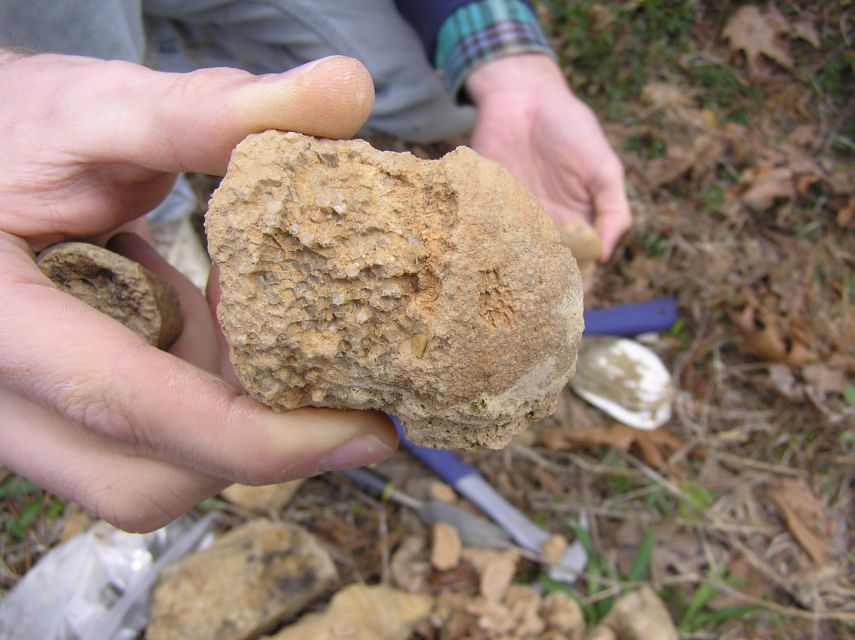
Michael has found a couple of items we believe to be sponges.
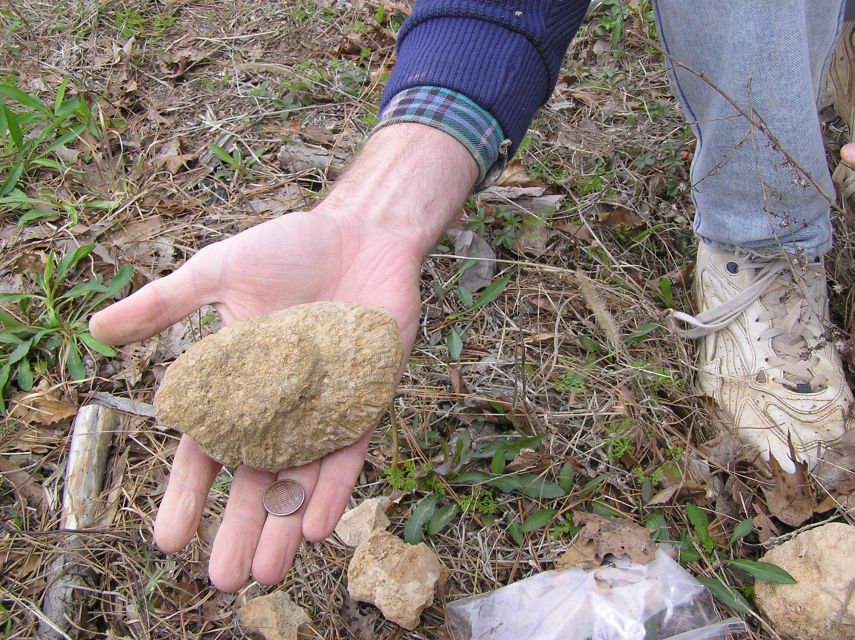
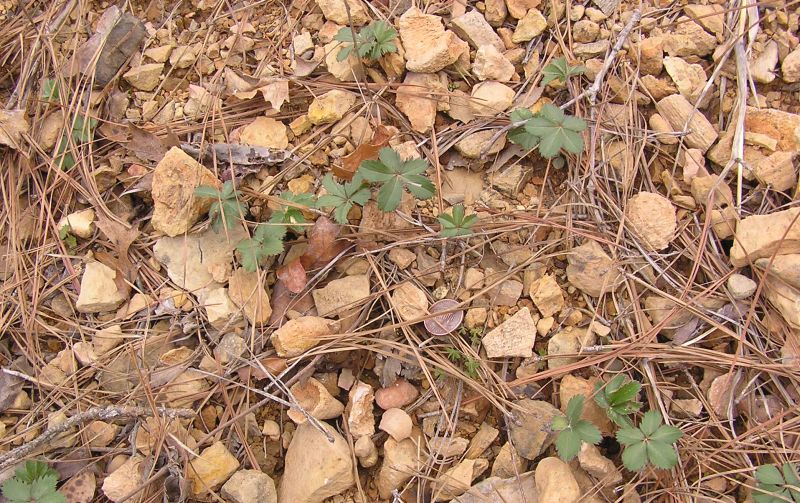
More rocky area, with numerous fossils waiting to be collected.
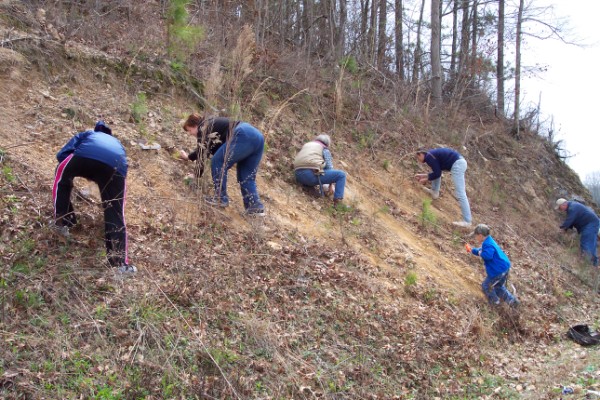
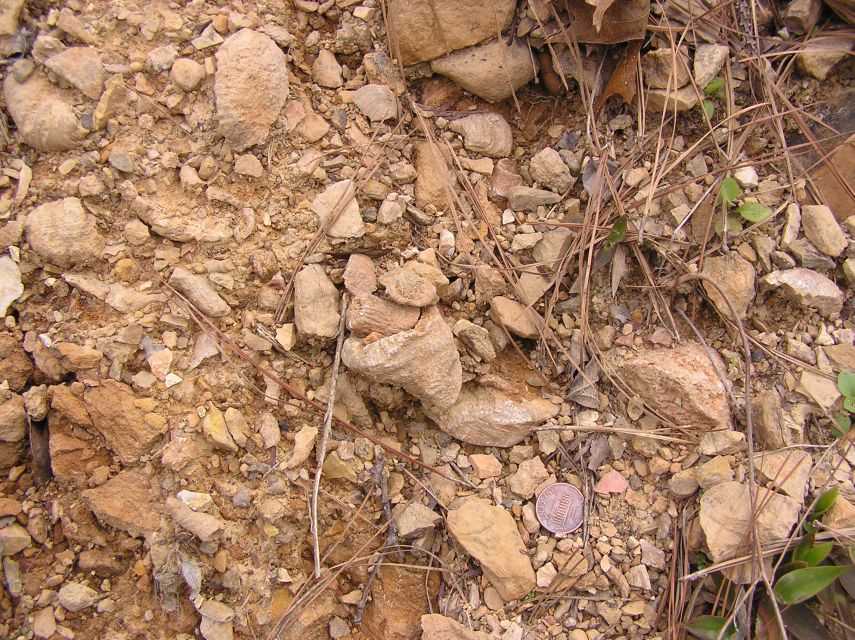
Another view of the ground littered with broken and whole fossils.
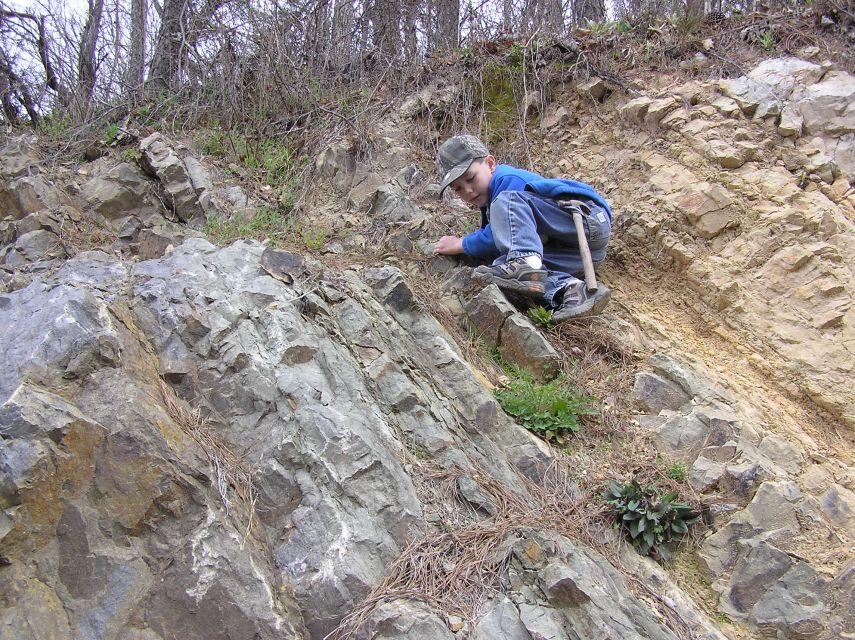
Steve is heading to the top, to see if there are different fossils up there. Or, maybe he just likes to climb!
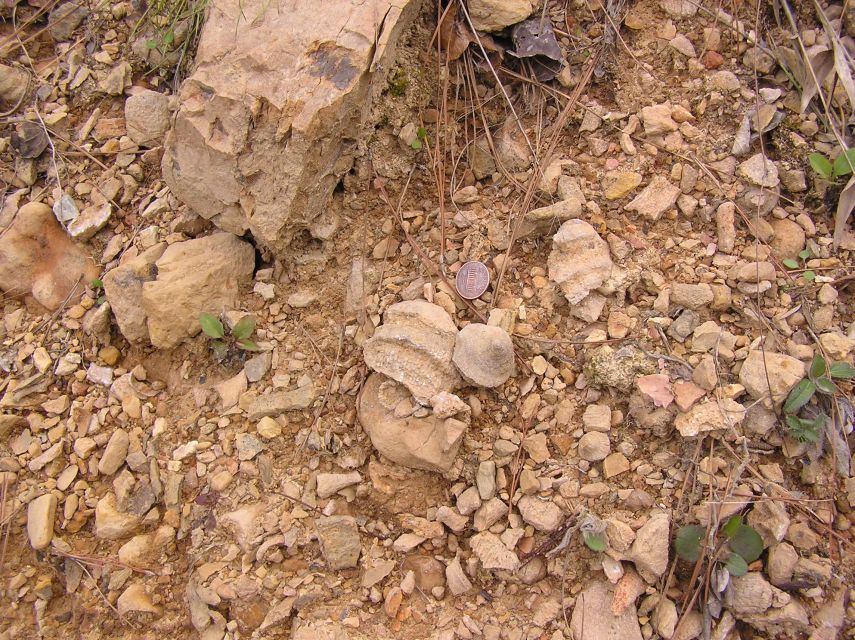
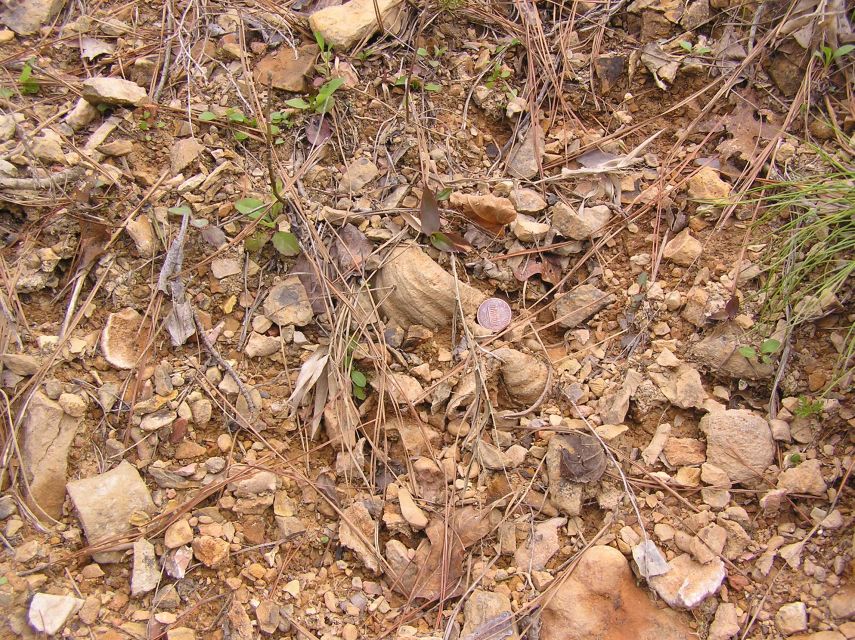
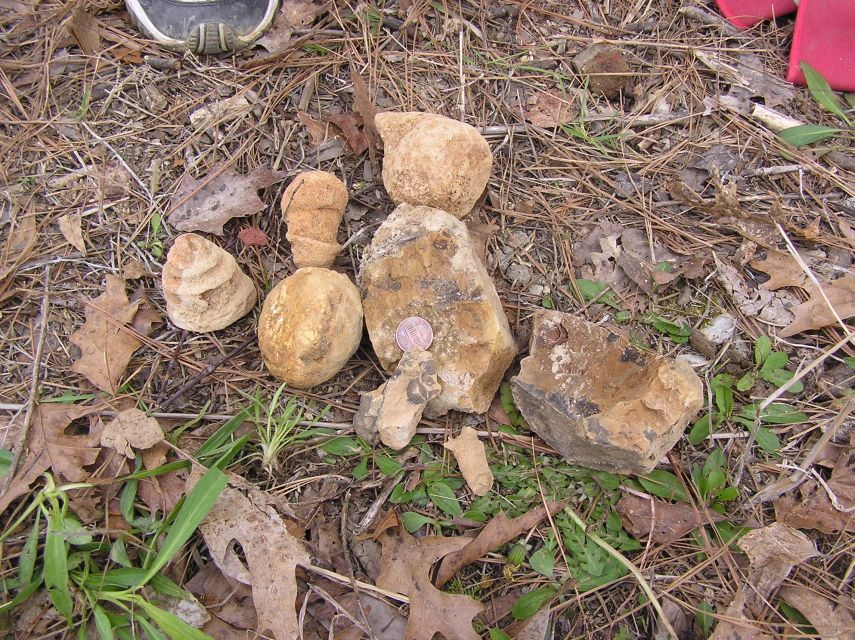
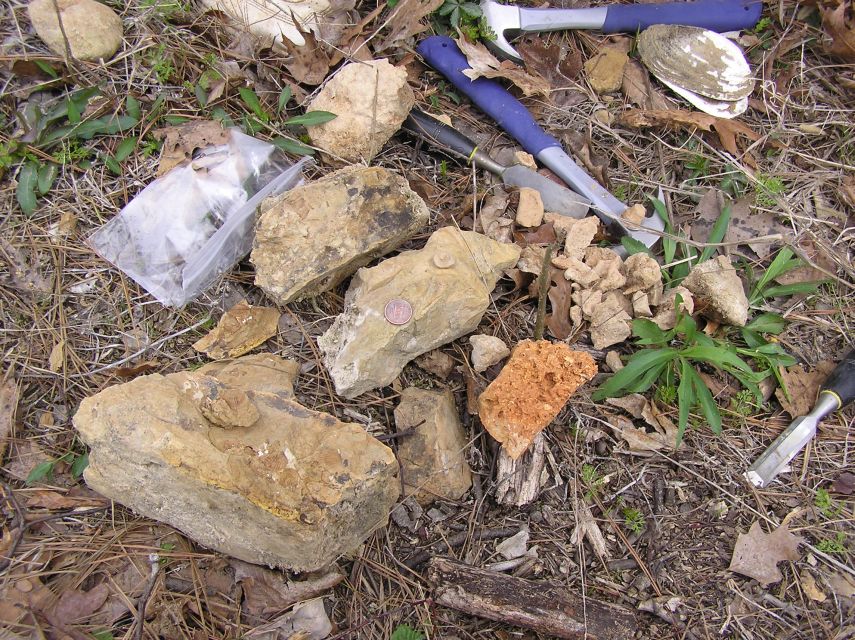
Some interesting fossil material found by Steve.
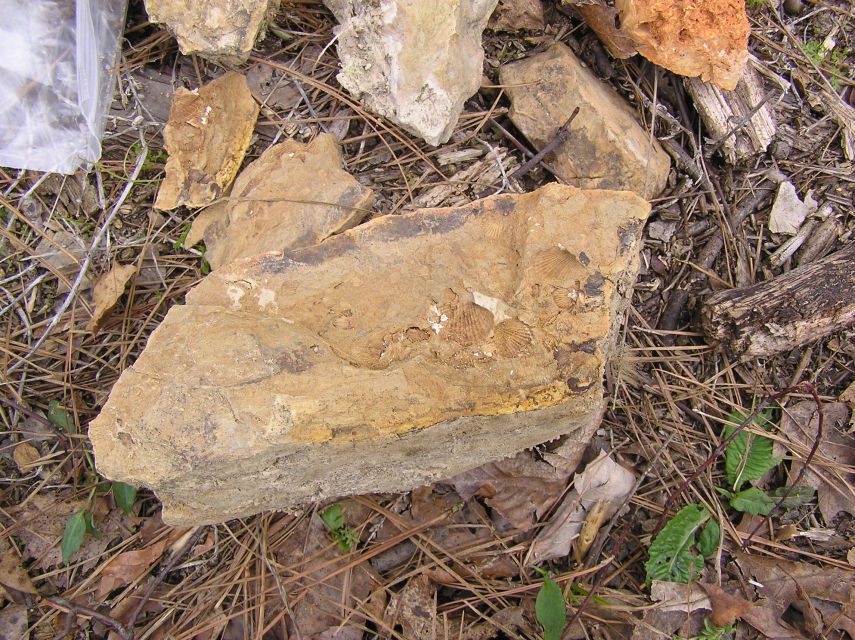
Note the nice brachiopods.
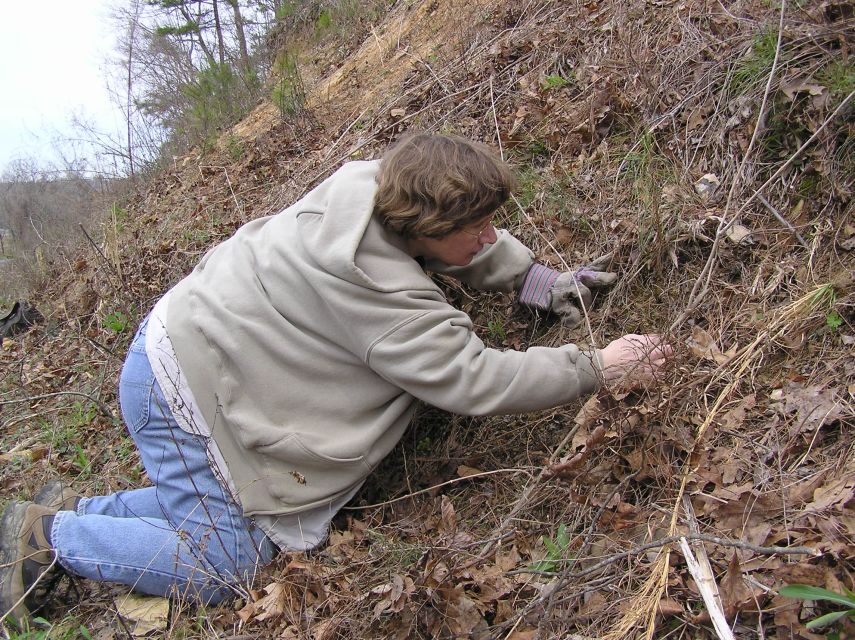

Claire has found a nice coral head.
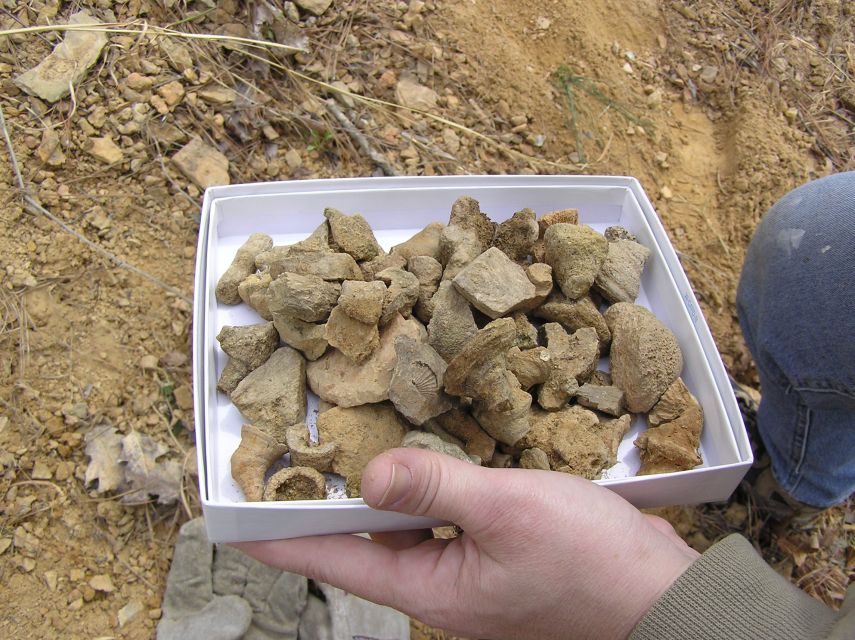 More nice finds by Claire.
More nice finds by Claire.
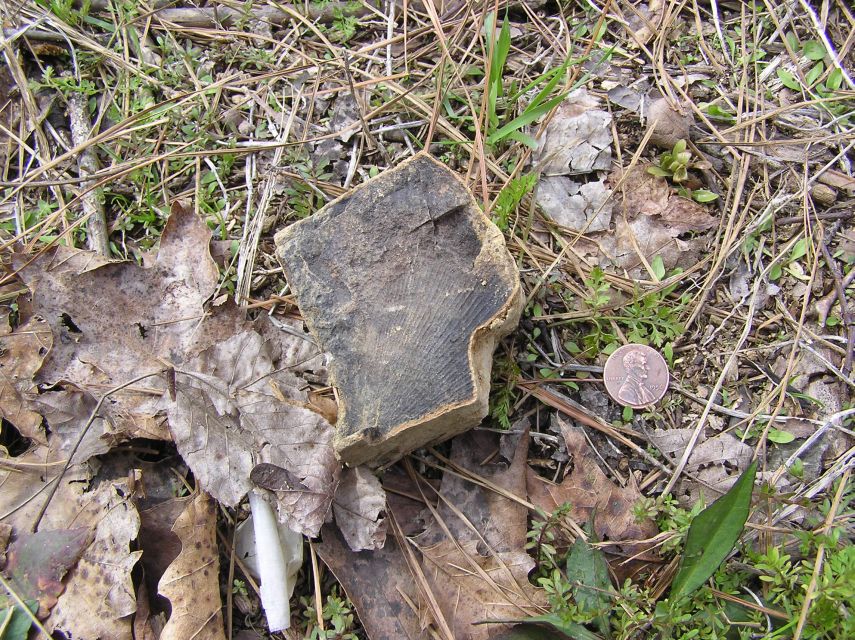
Another nice specimen, probably coral, found by Vicki.
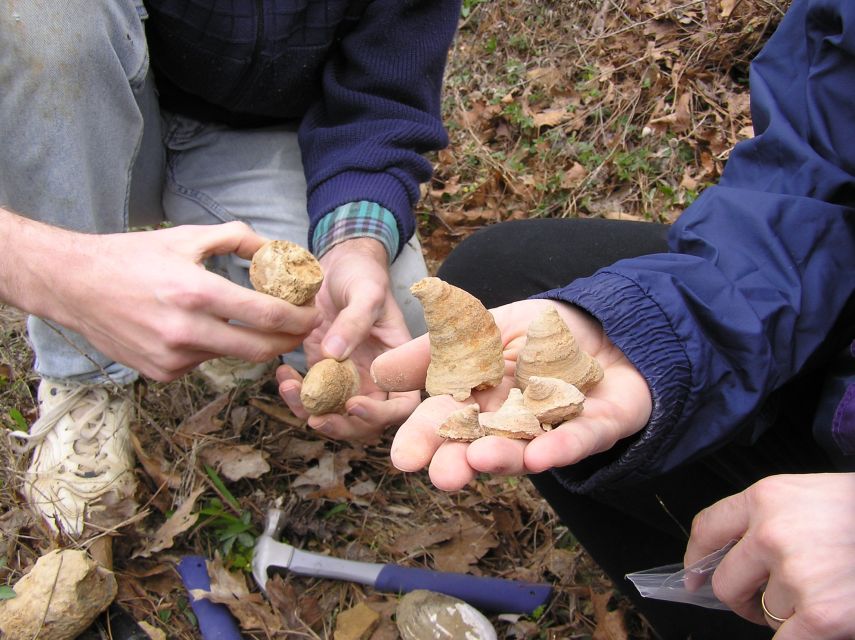
Michael and Sylvie showing off their coral and sponges.
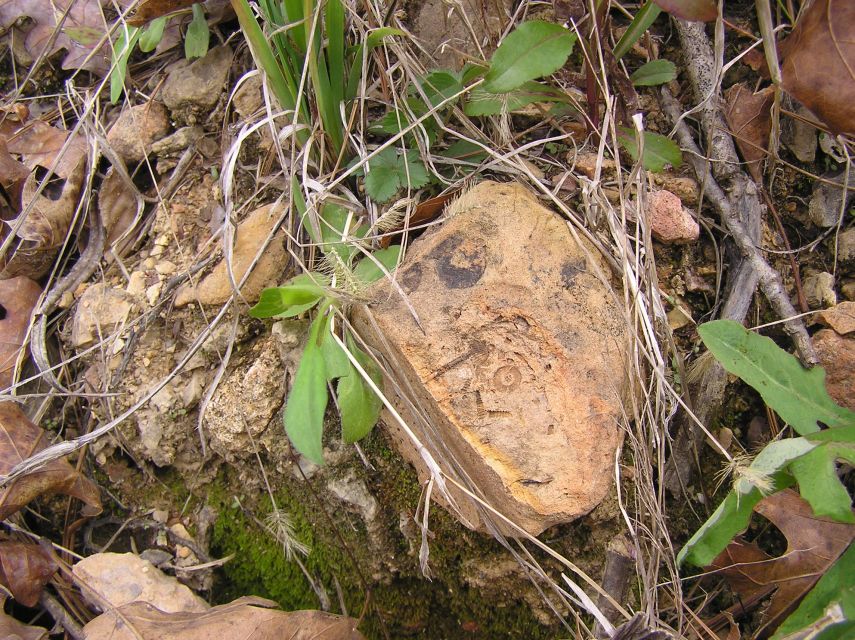
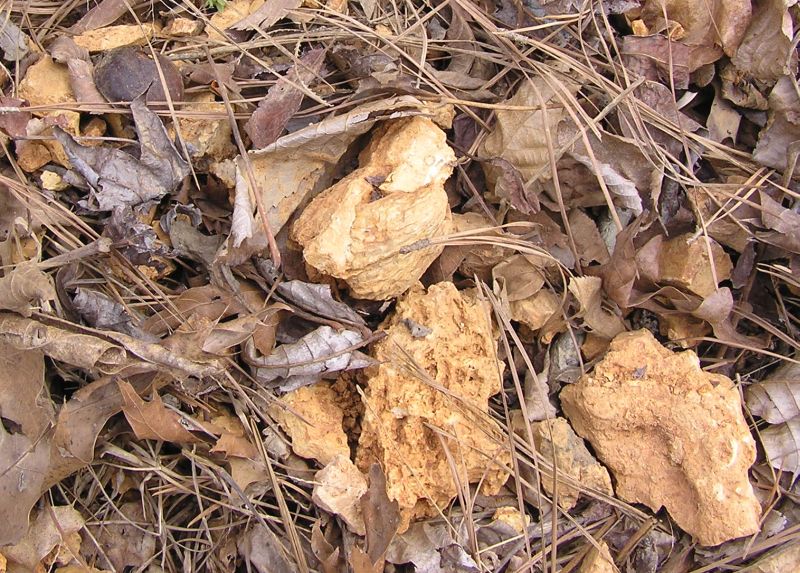
Note the nice shell on the upper rock in the middle. When the fossils are the same color as the matrix, they are difficult to spot.
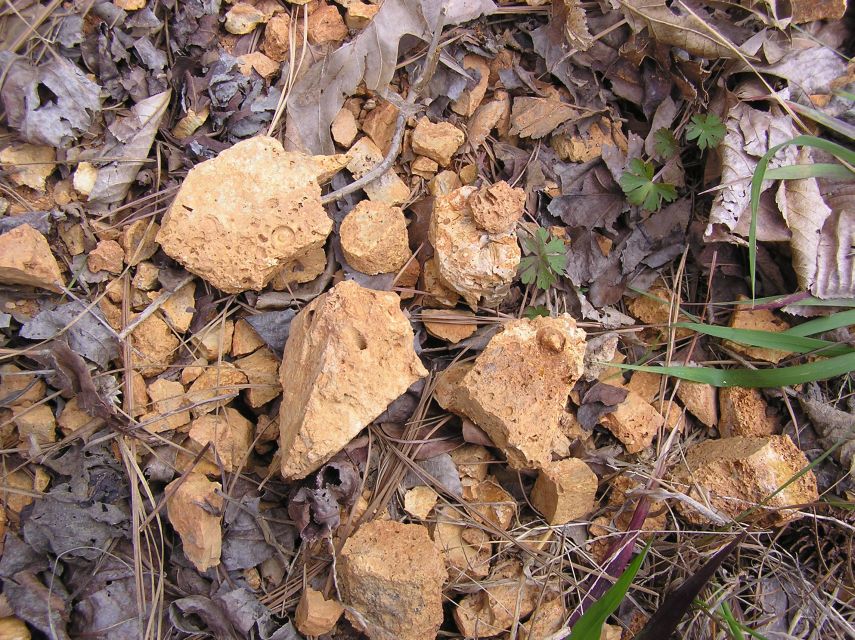
Crinoids have left impressions on these rocks. A different area from where the coral is found.
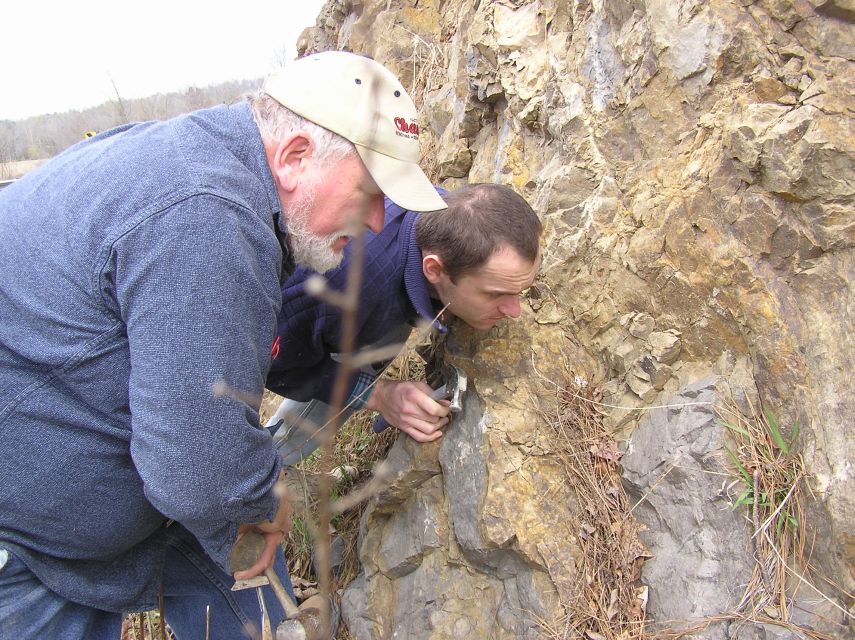
Greg and Michael searching for the trilobite layer.
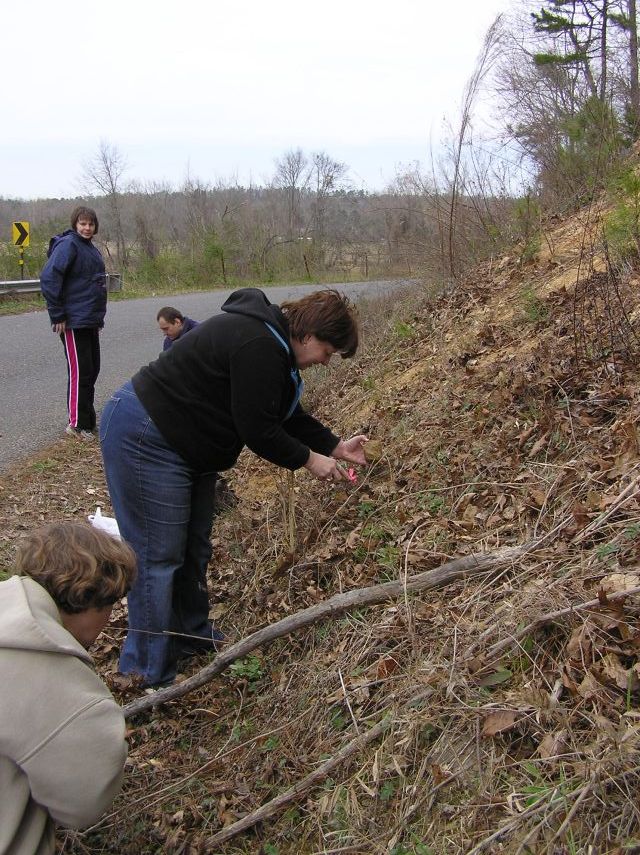
Leisa has found some nice horned coral.
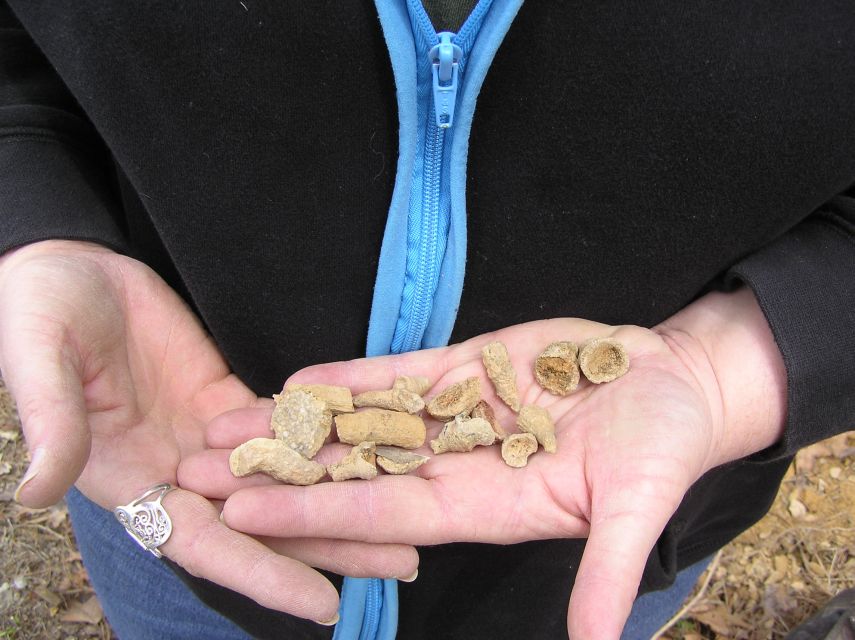
A closer look at Leisa's finds.
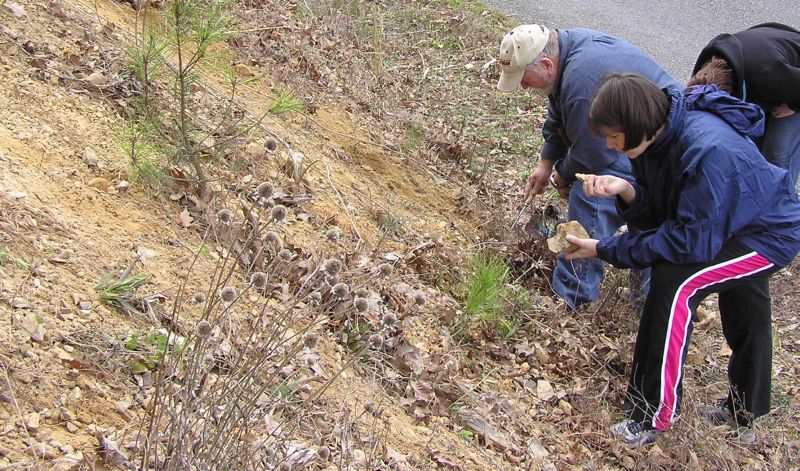
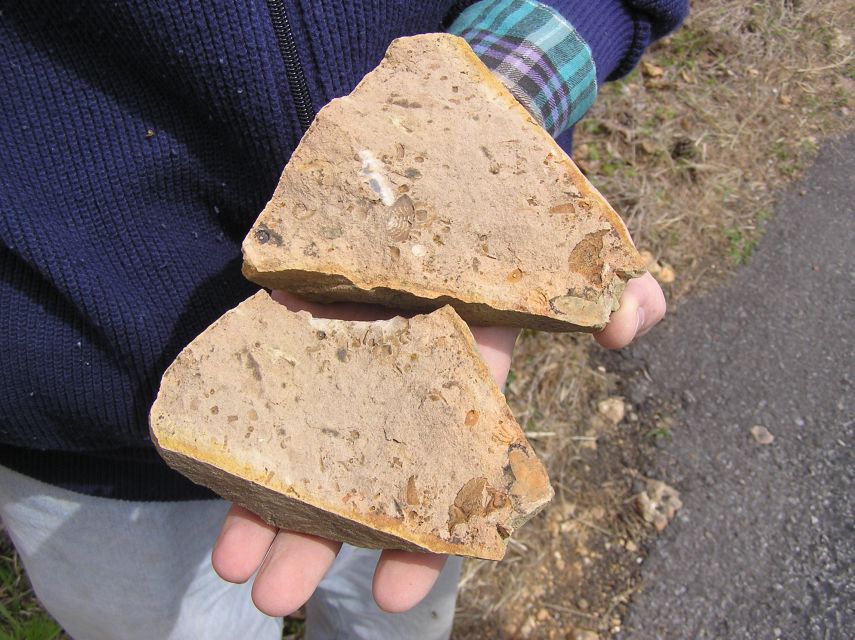
After diligent searching, Michael found the trilobite layer!
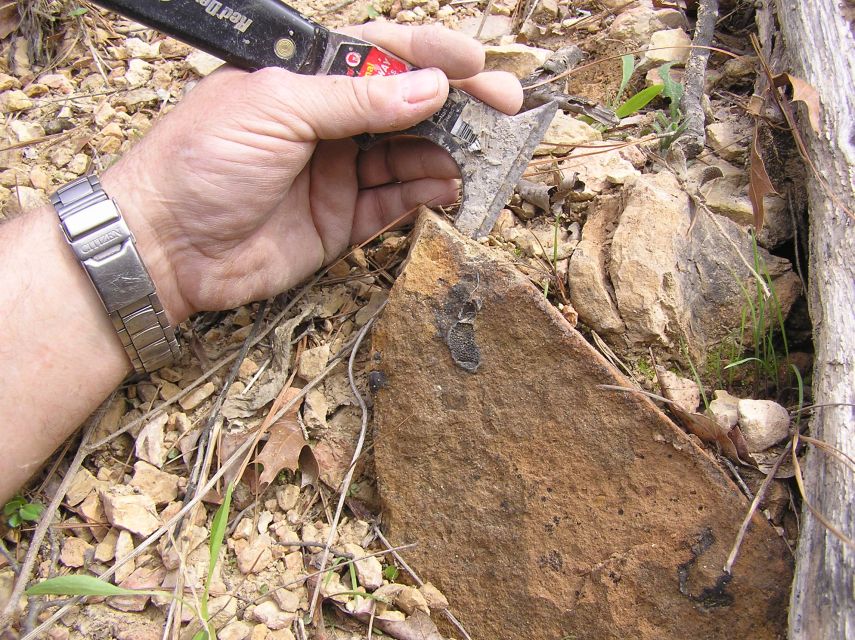
Greg has found part of a trilobite - the black coloration at top of rock. The larger oval is the head, the smaller one is an eye.
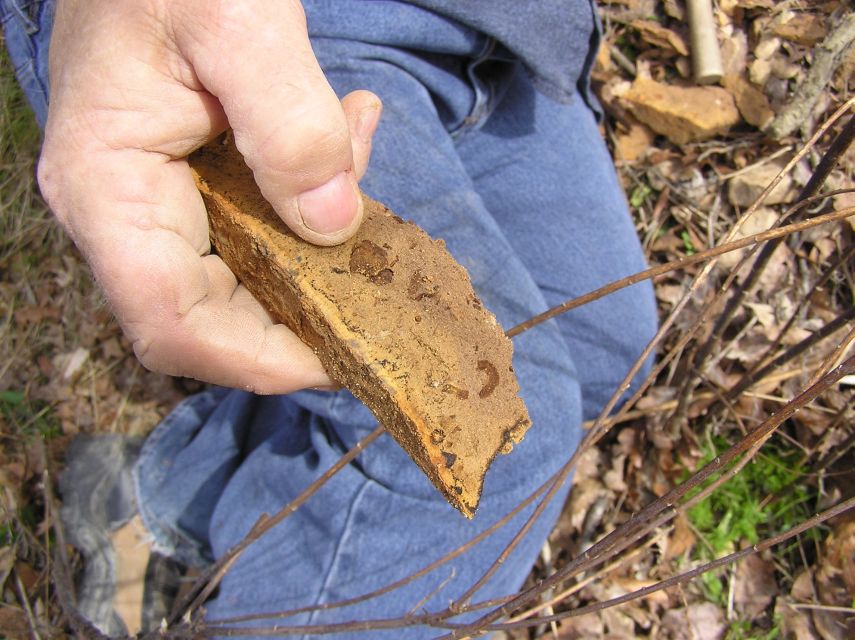
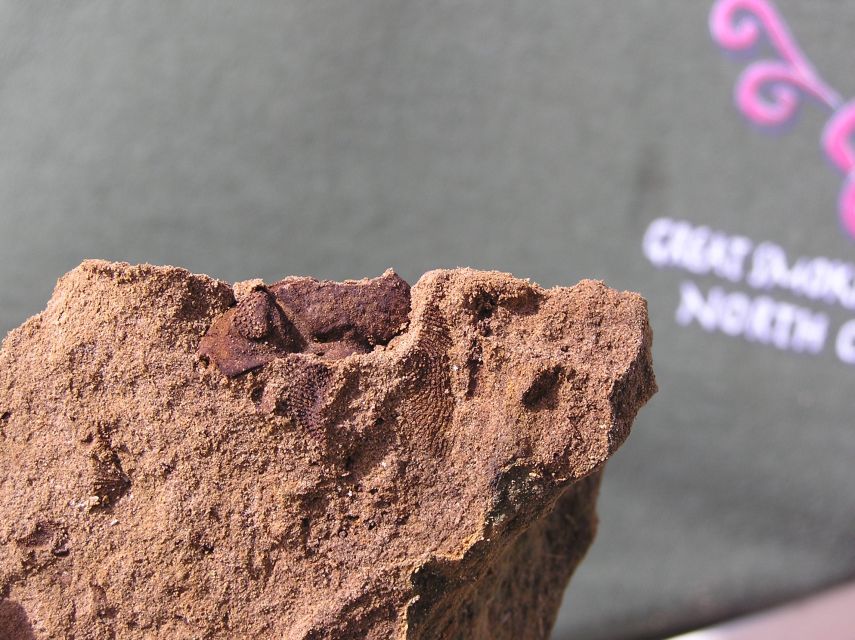
A close view of a trilobite.
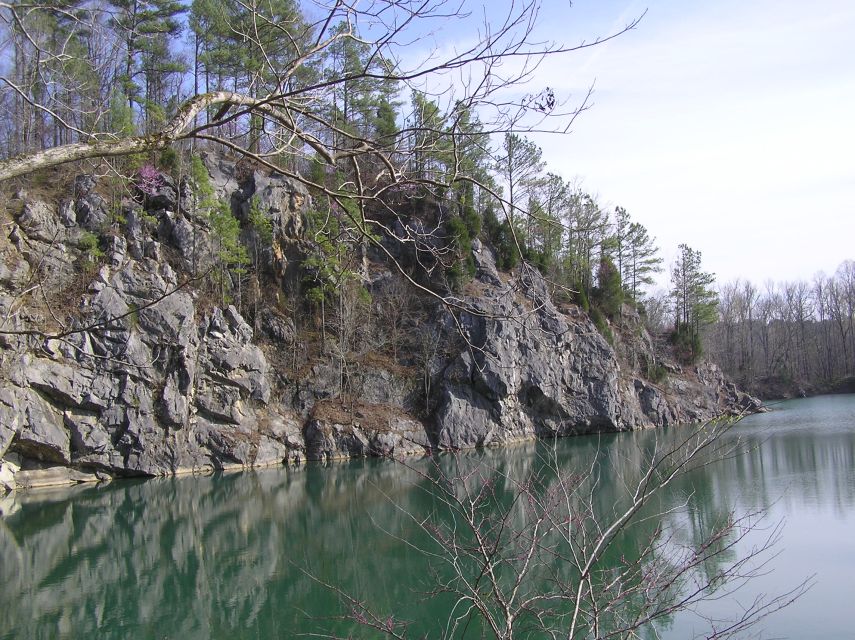
We briefly scouted this quarry and found some interesting structures and fish, but no fossils.